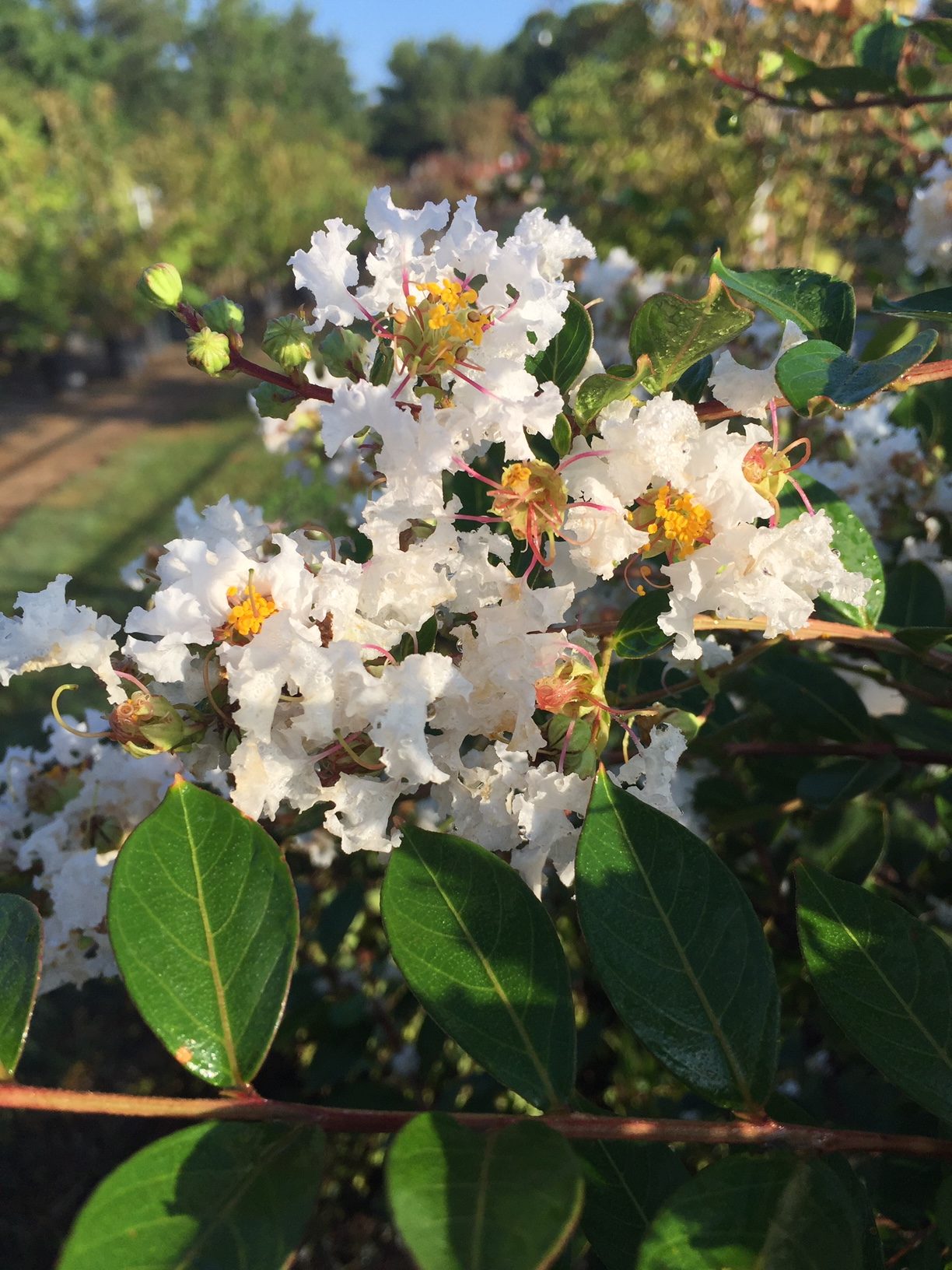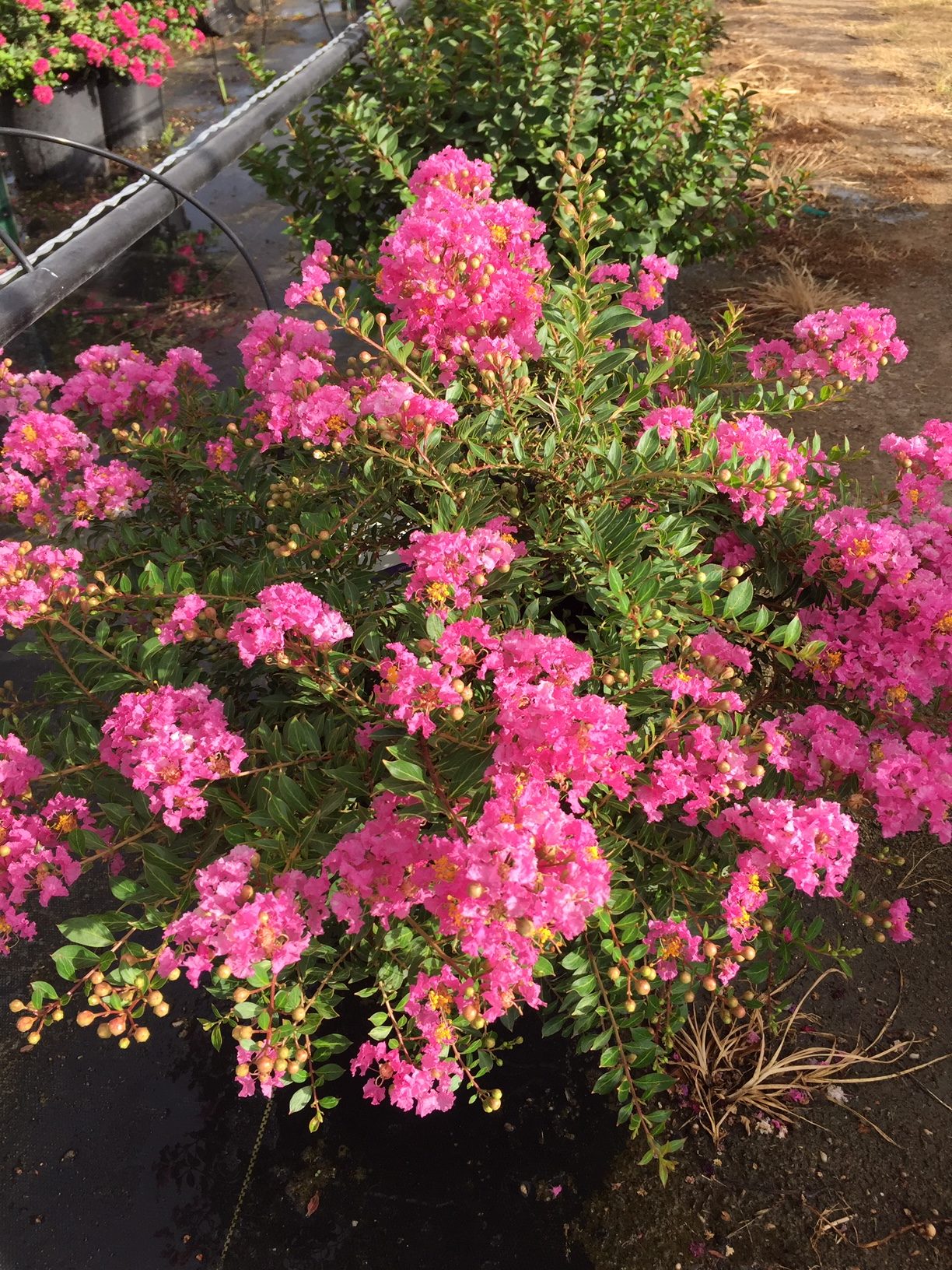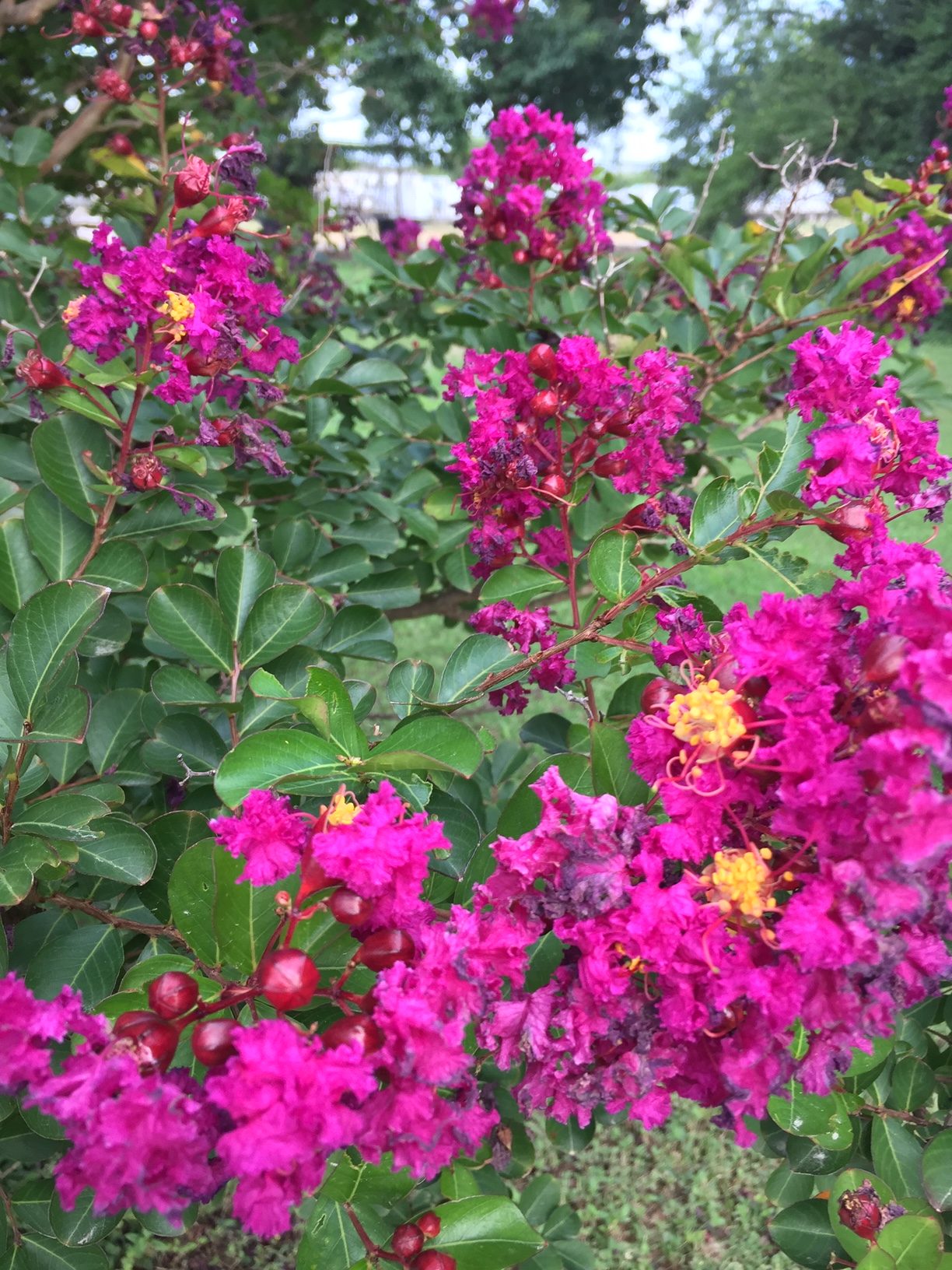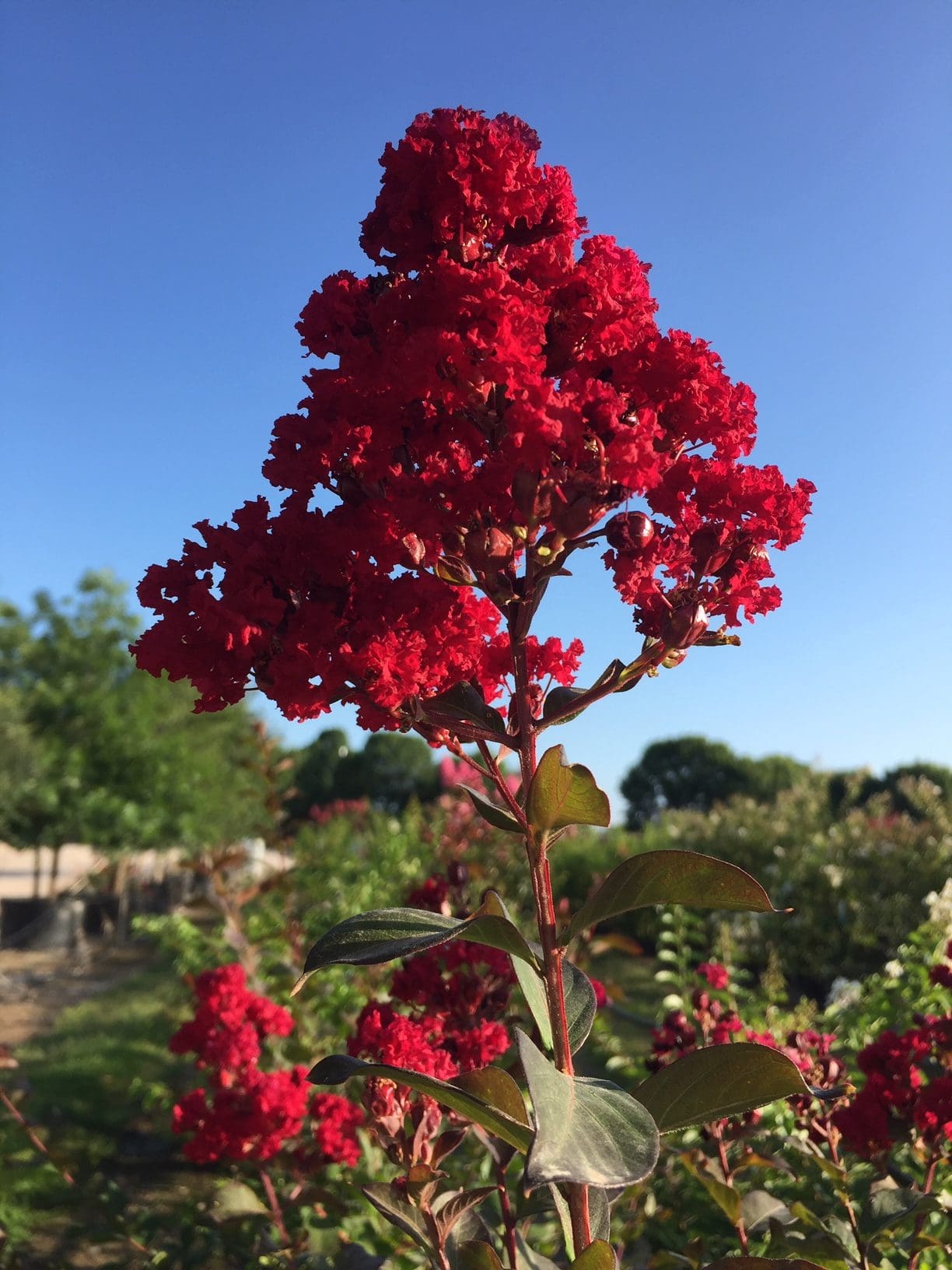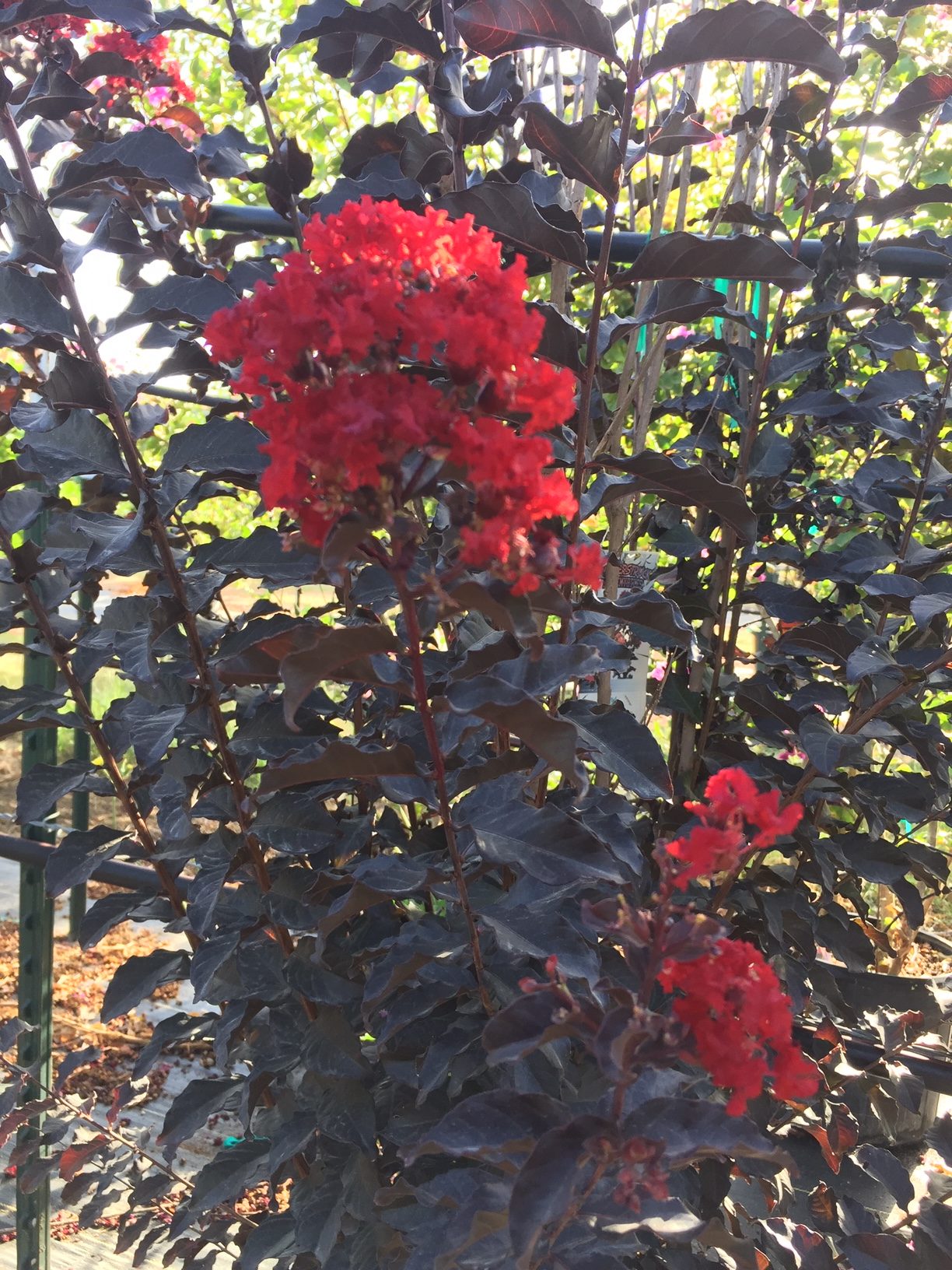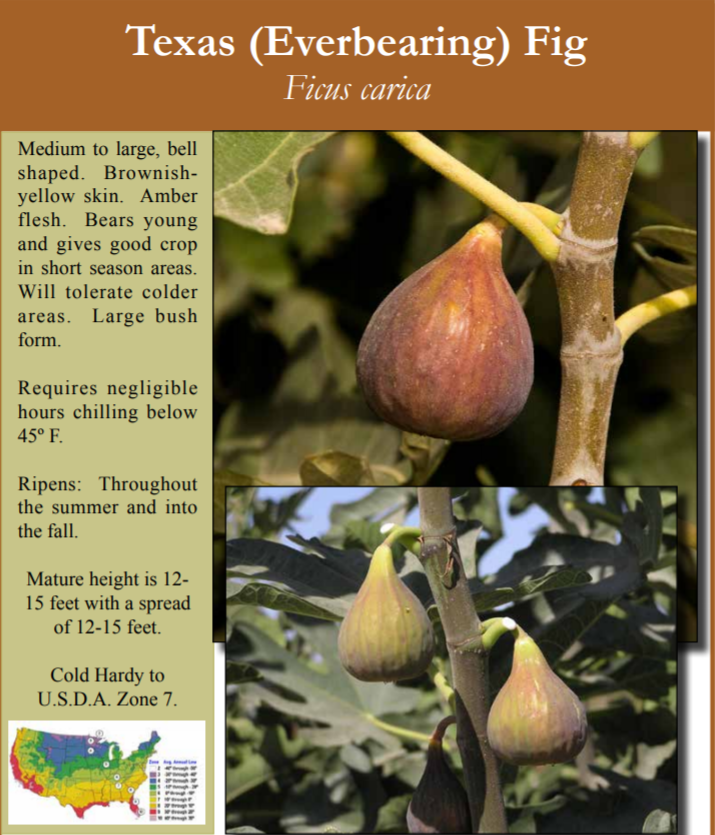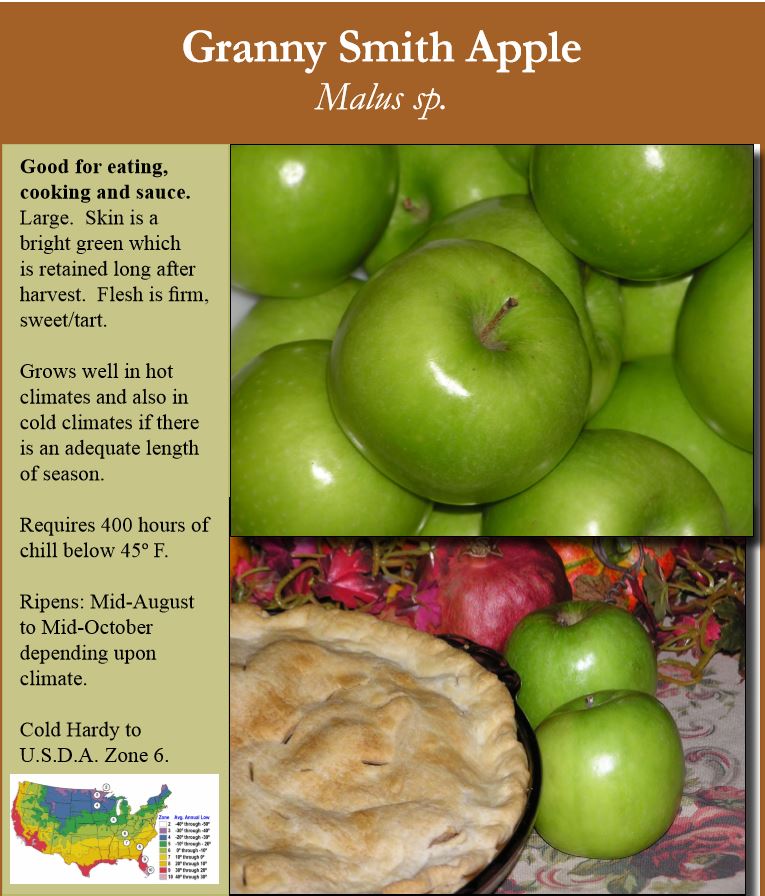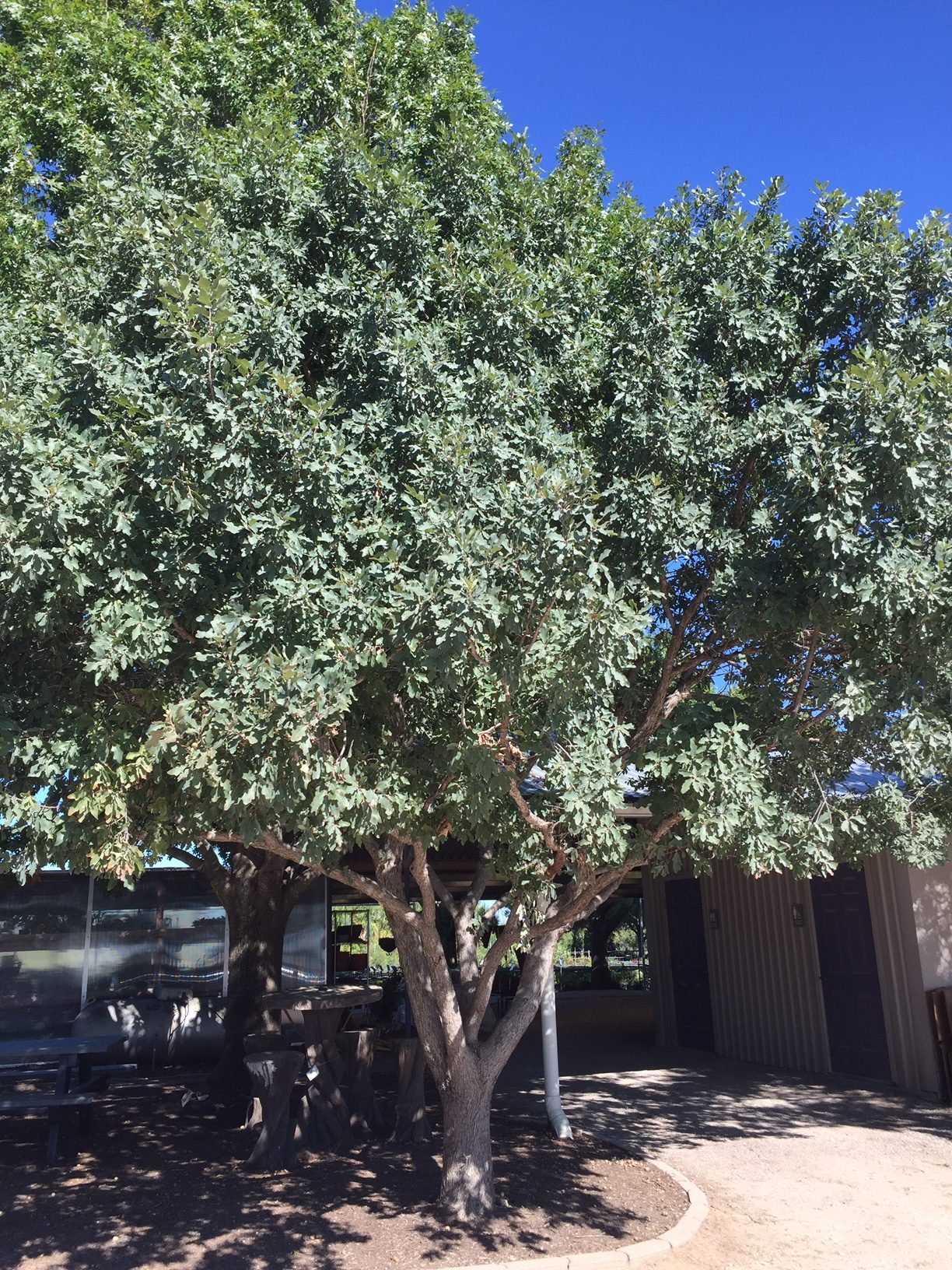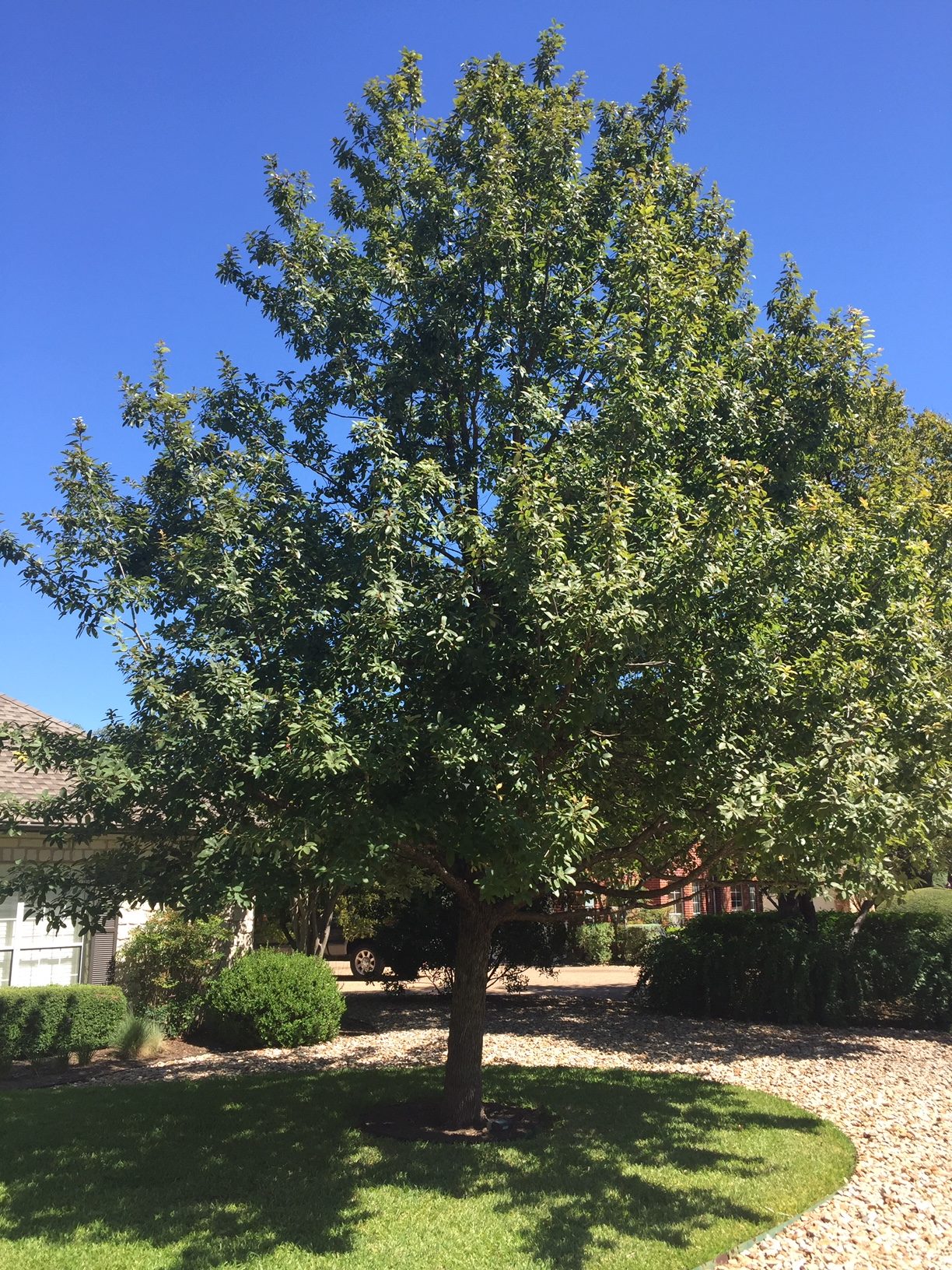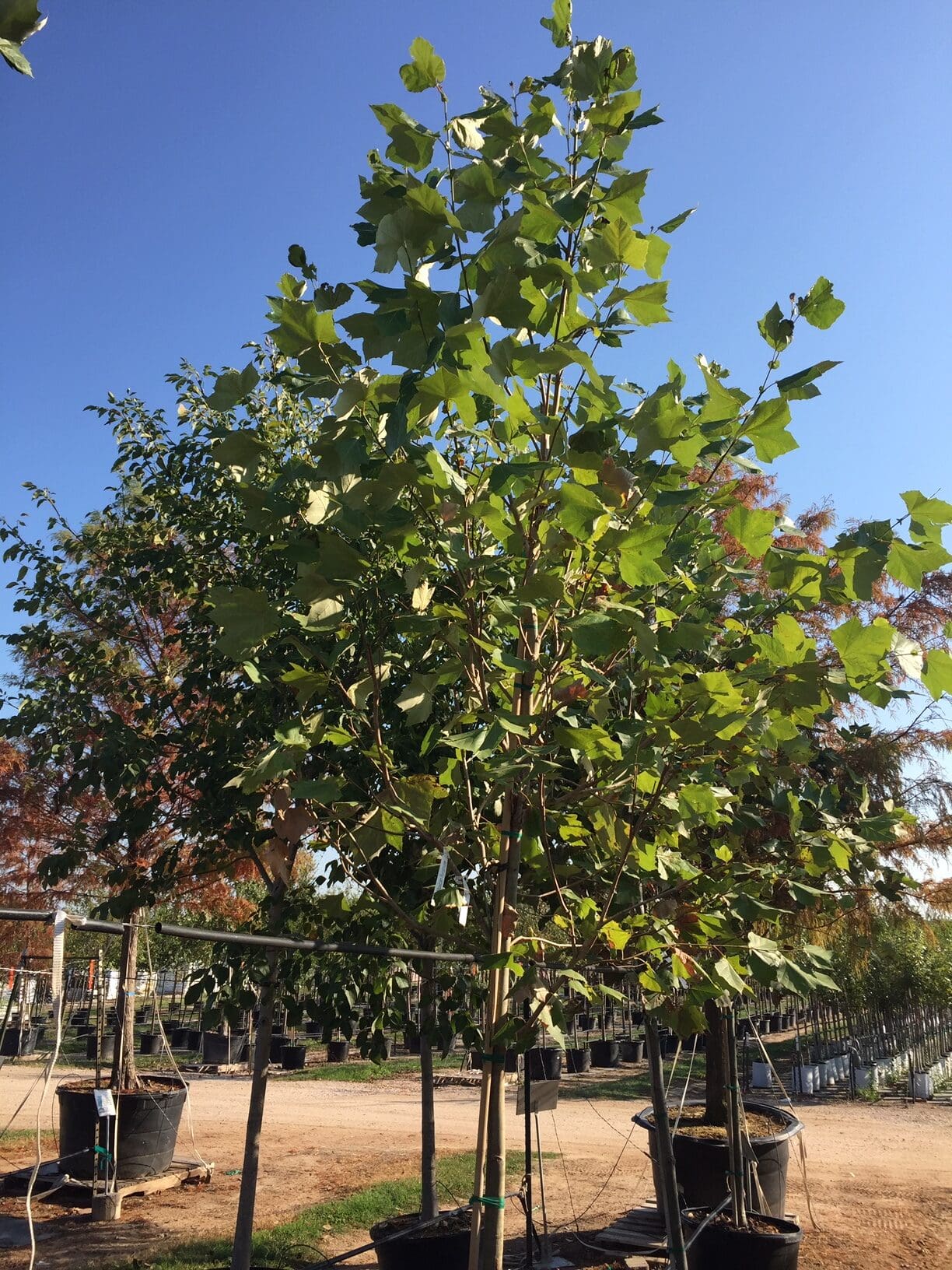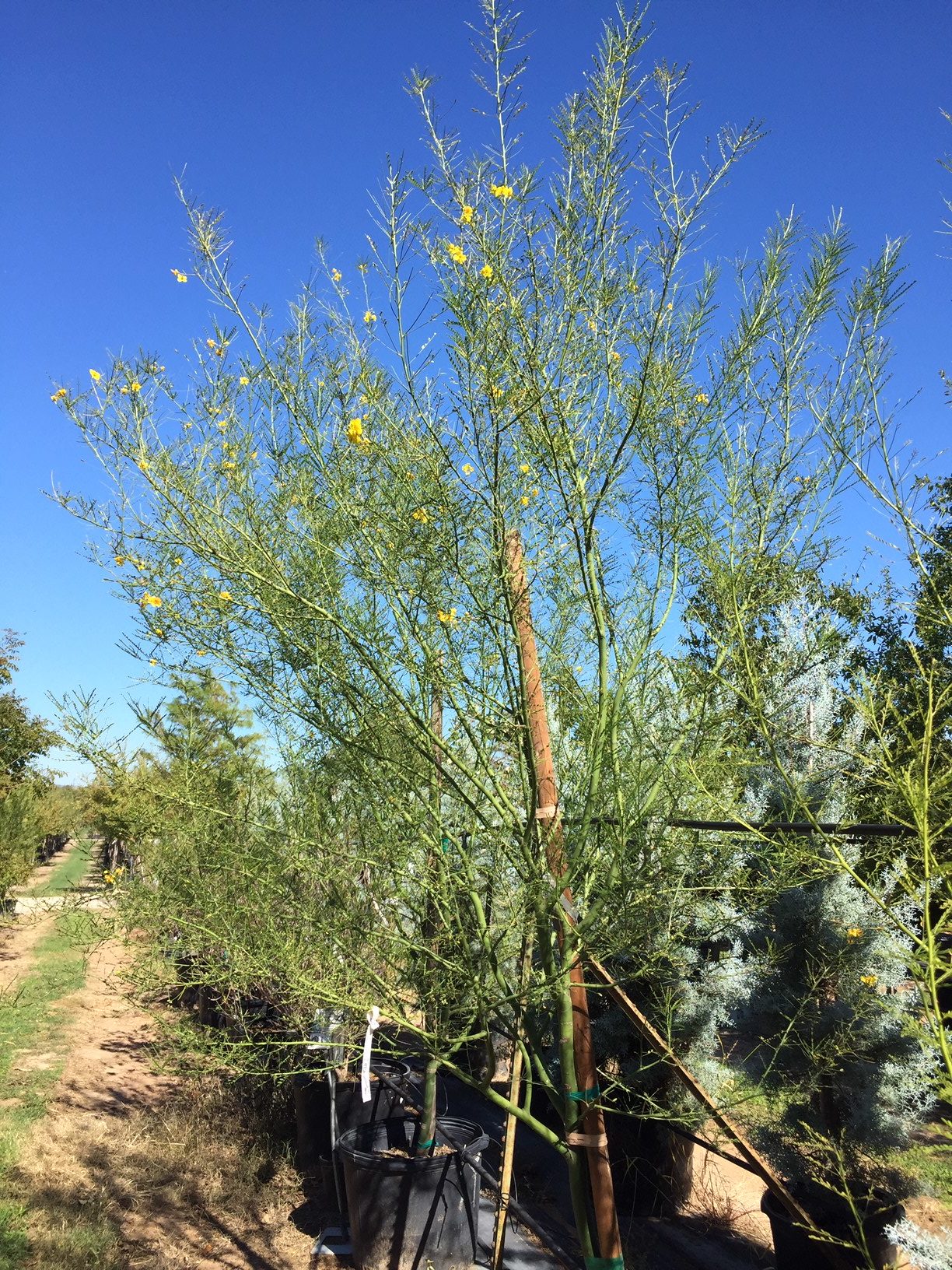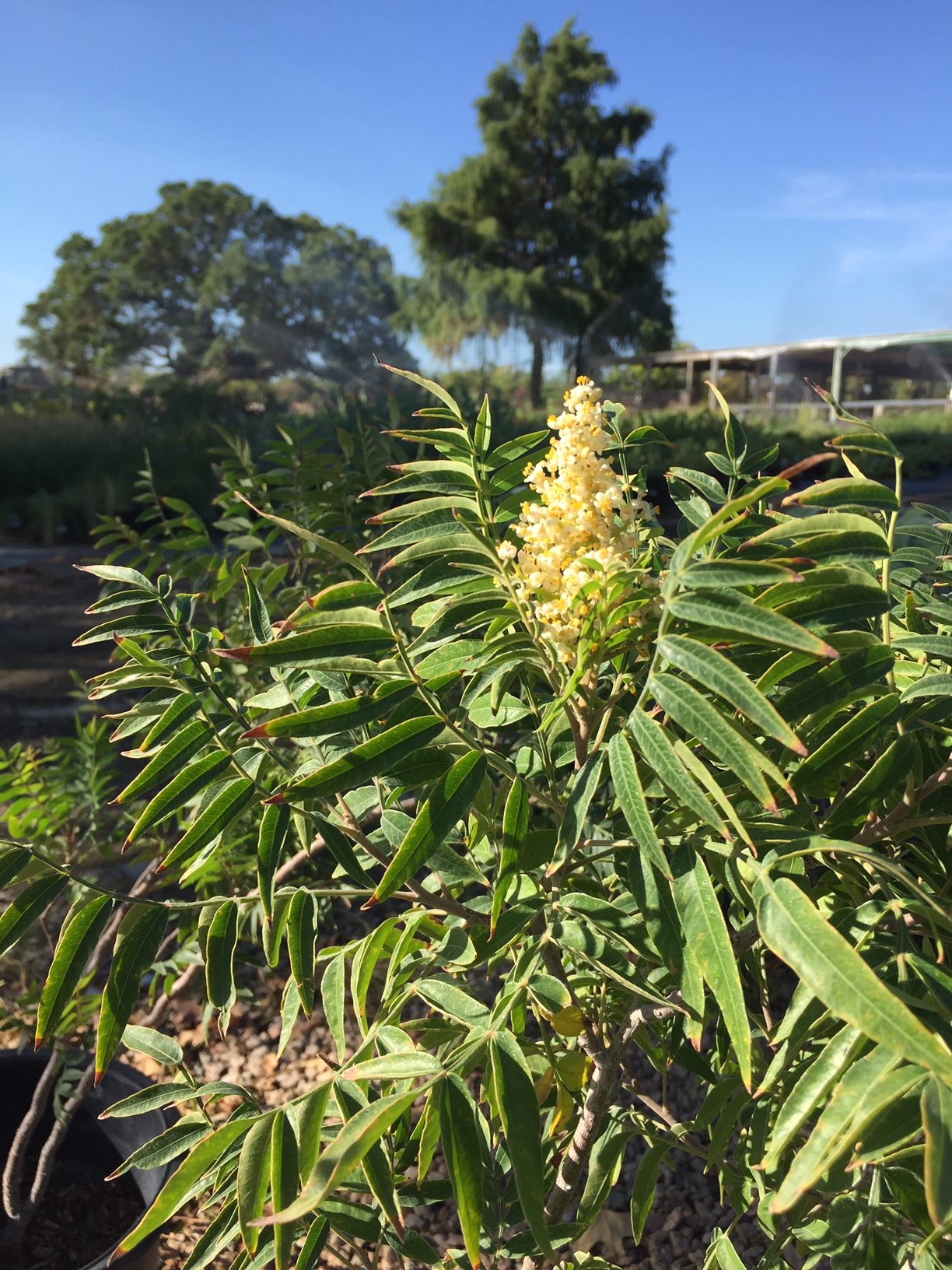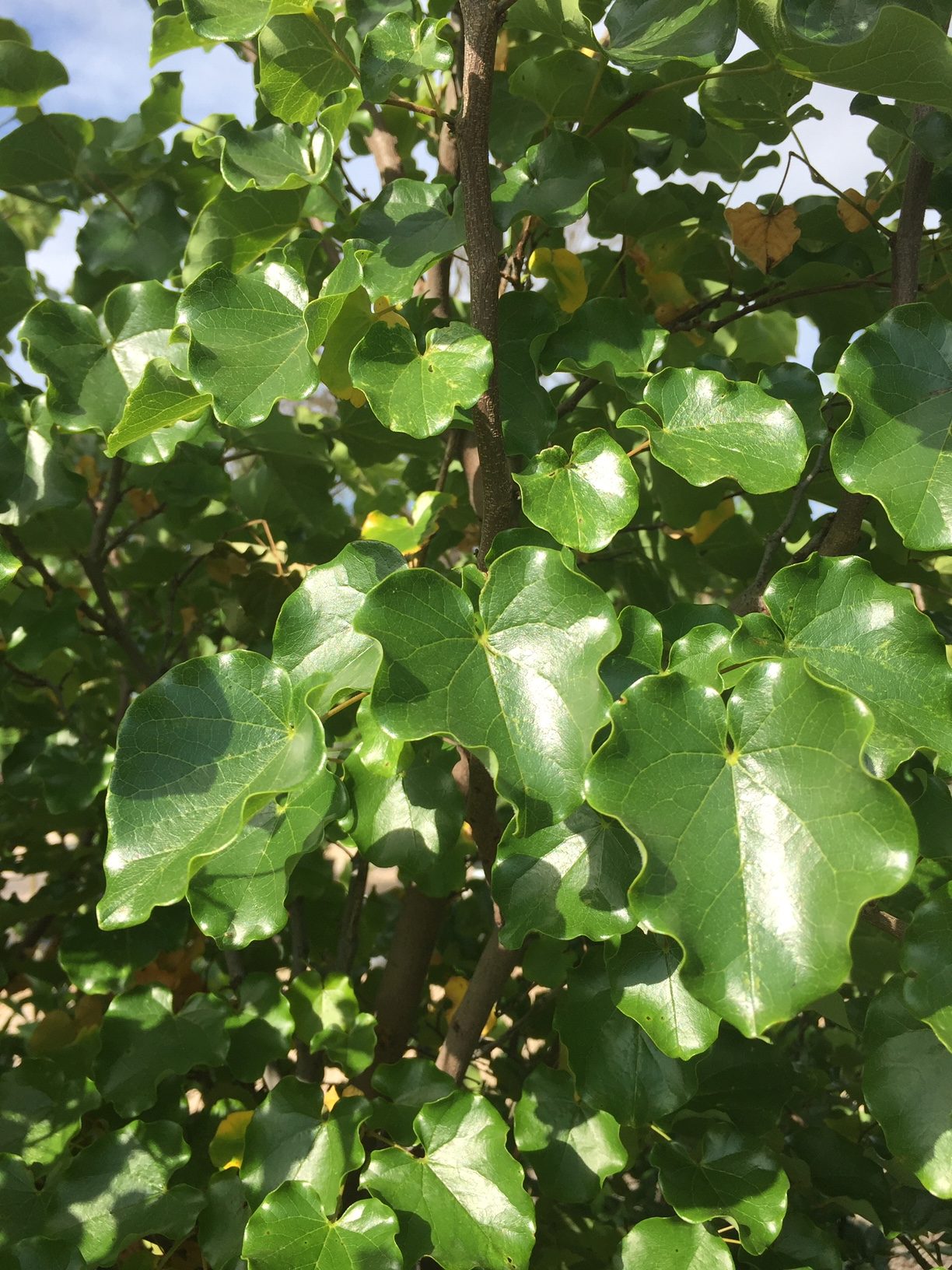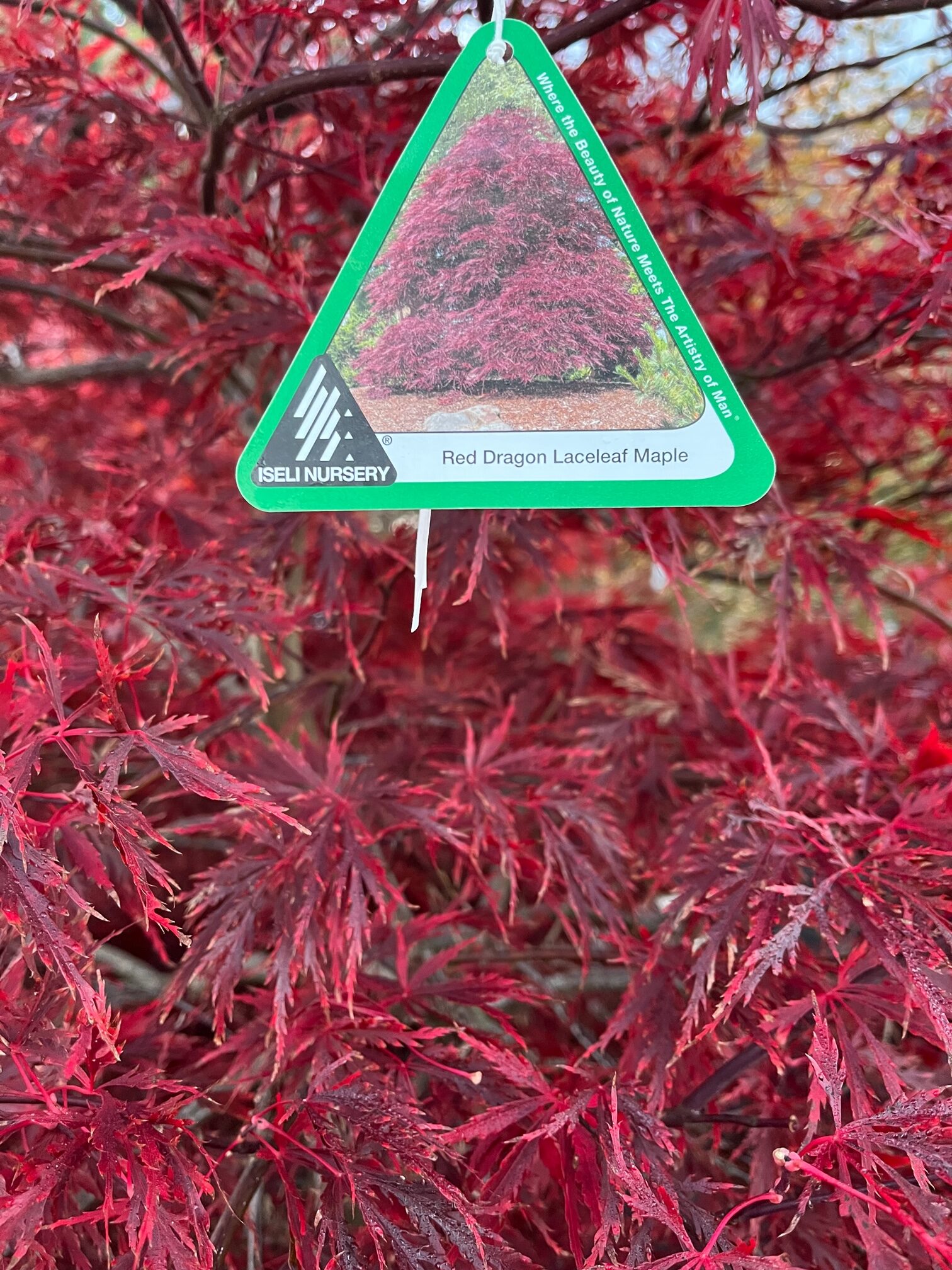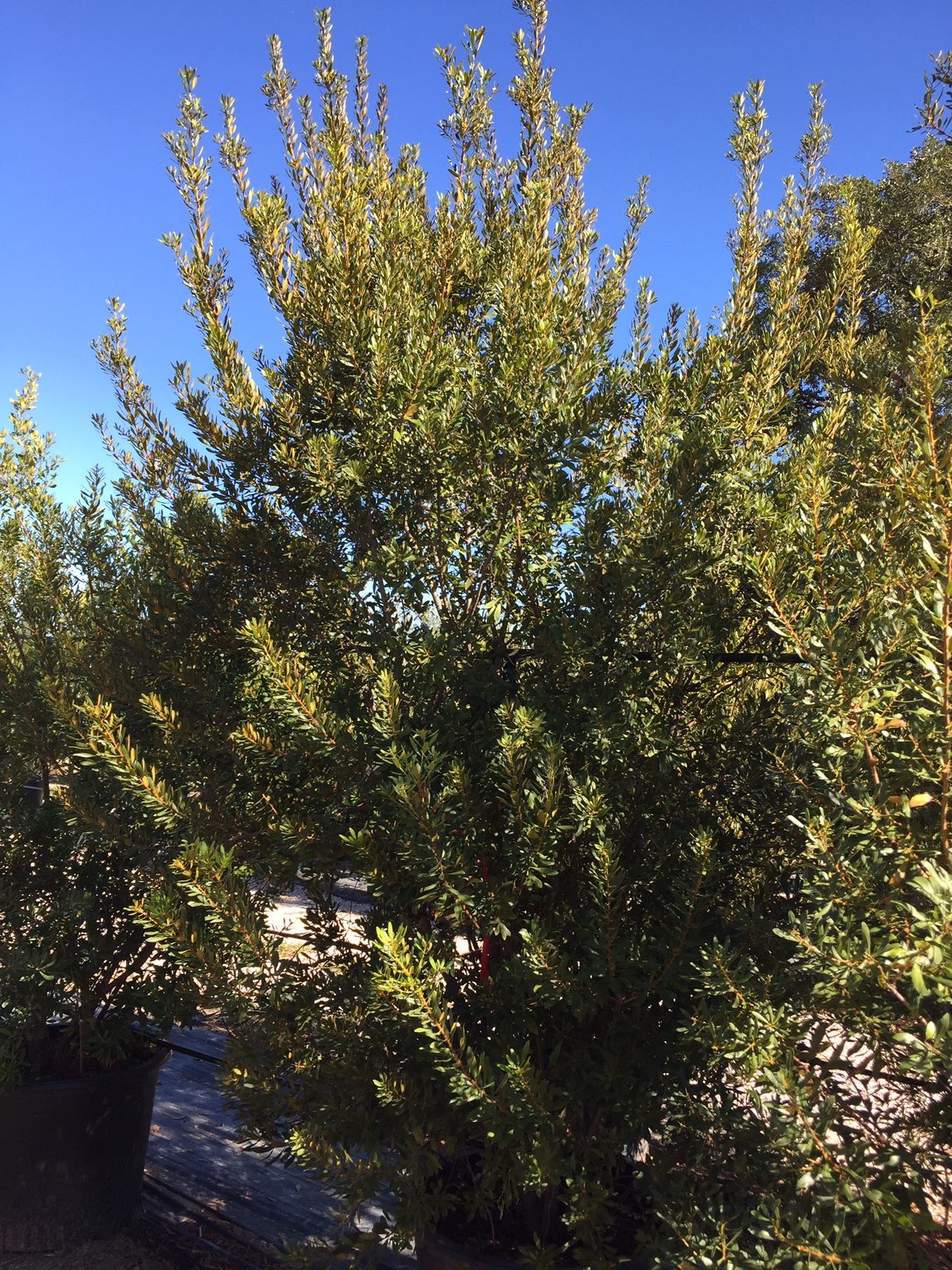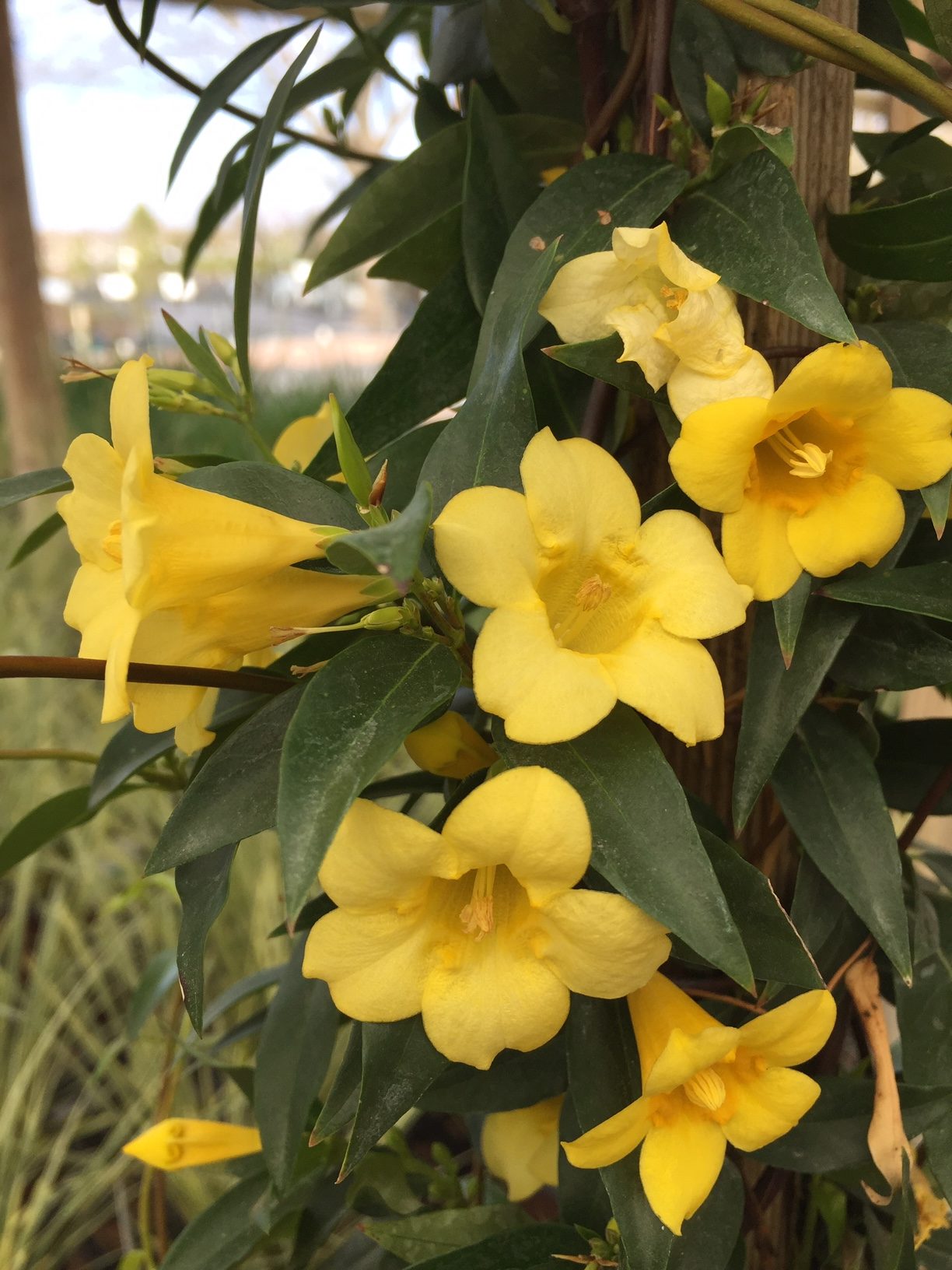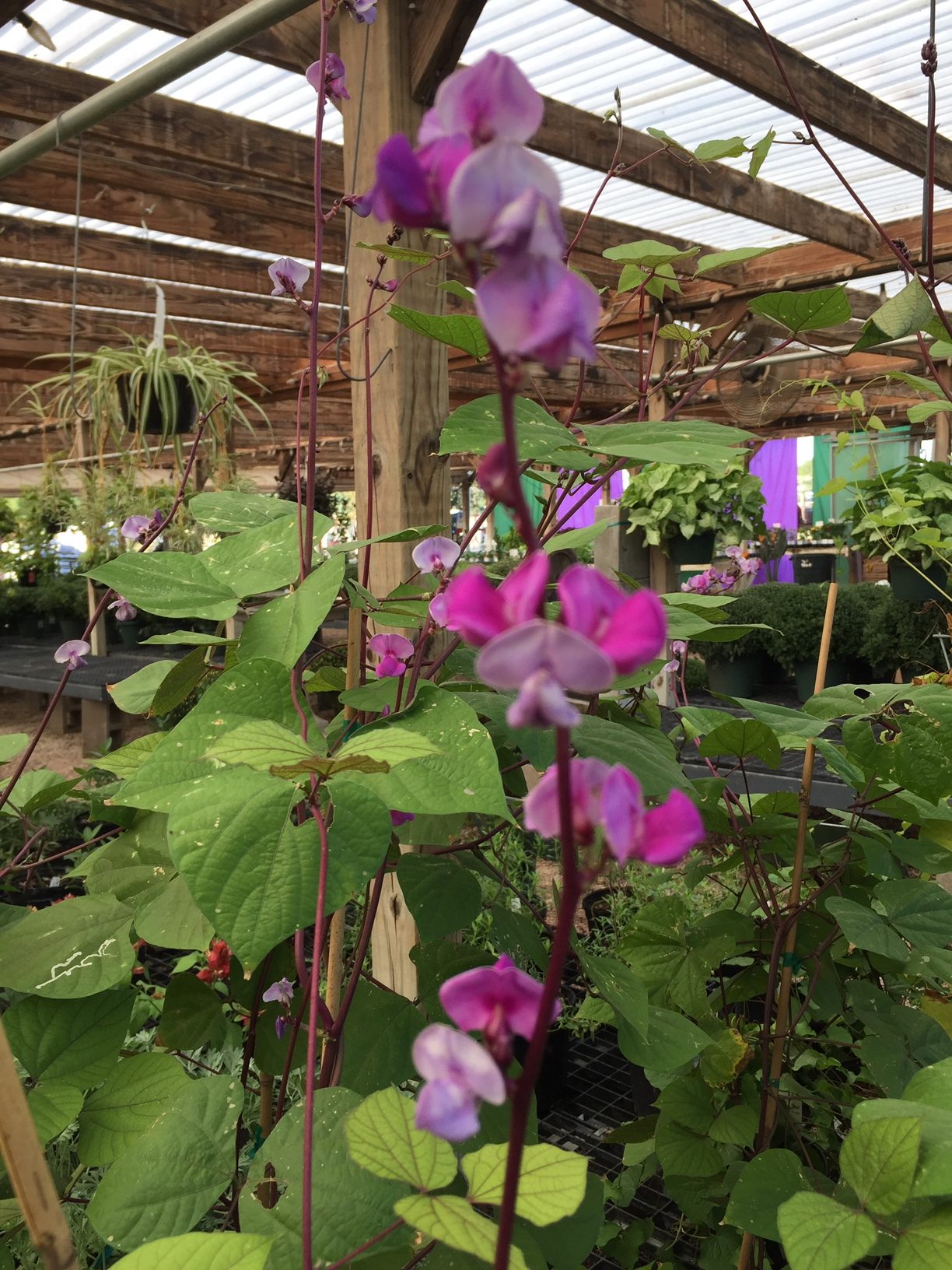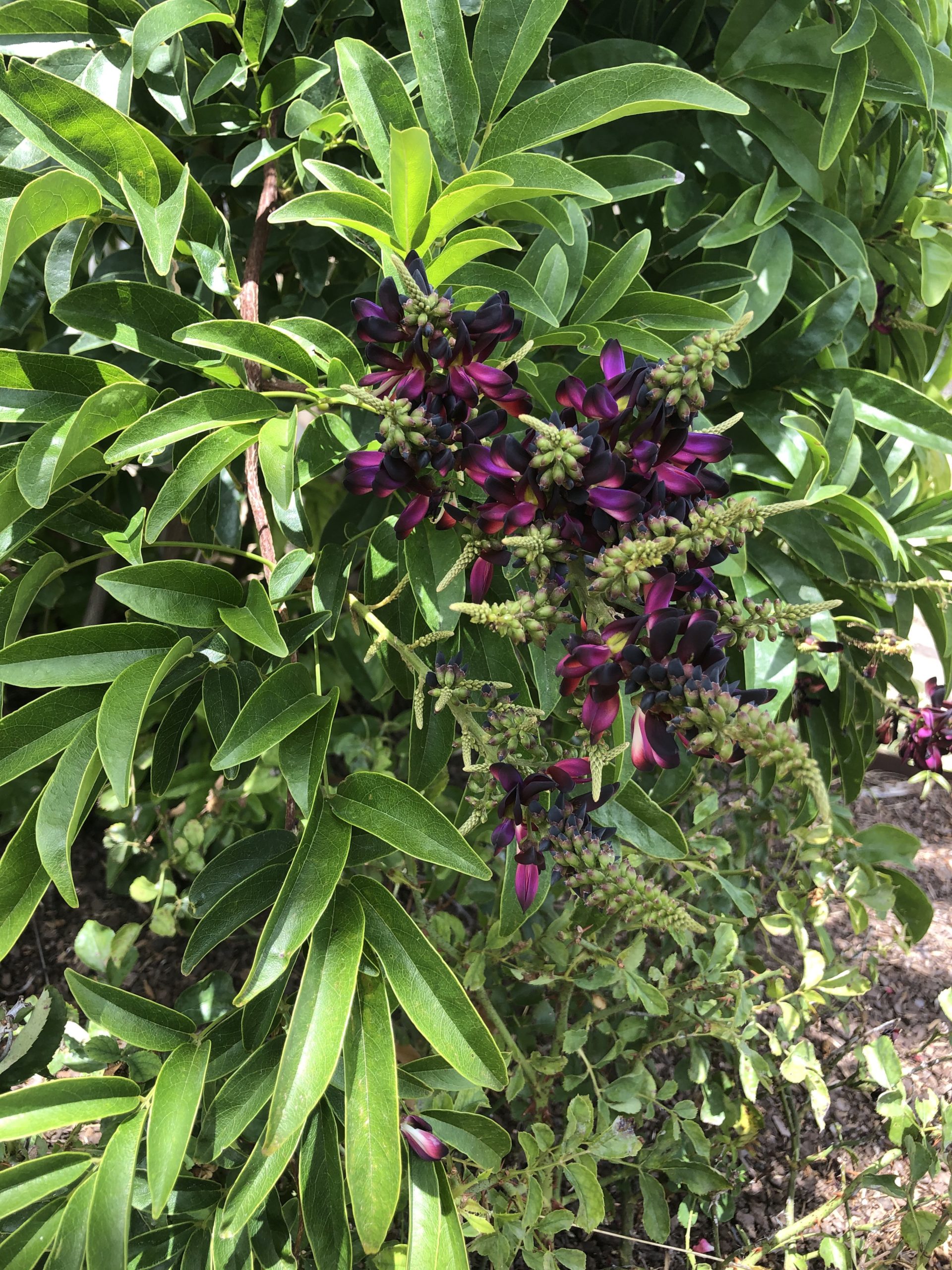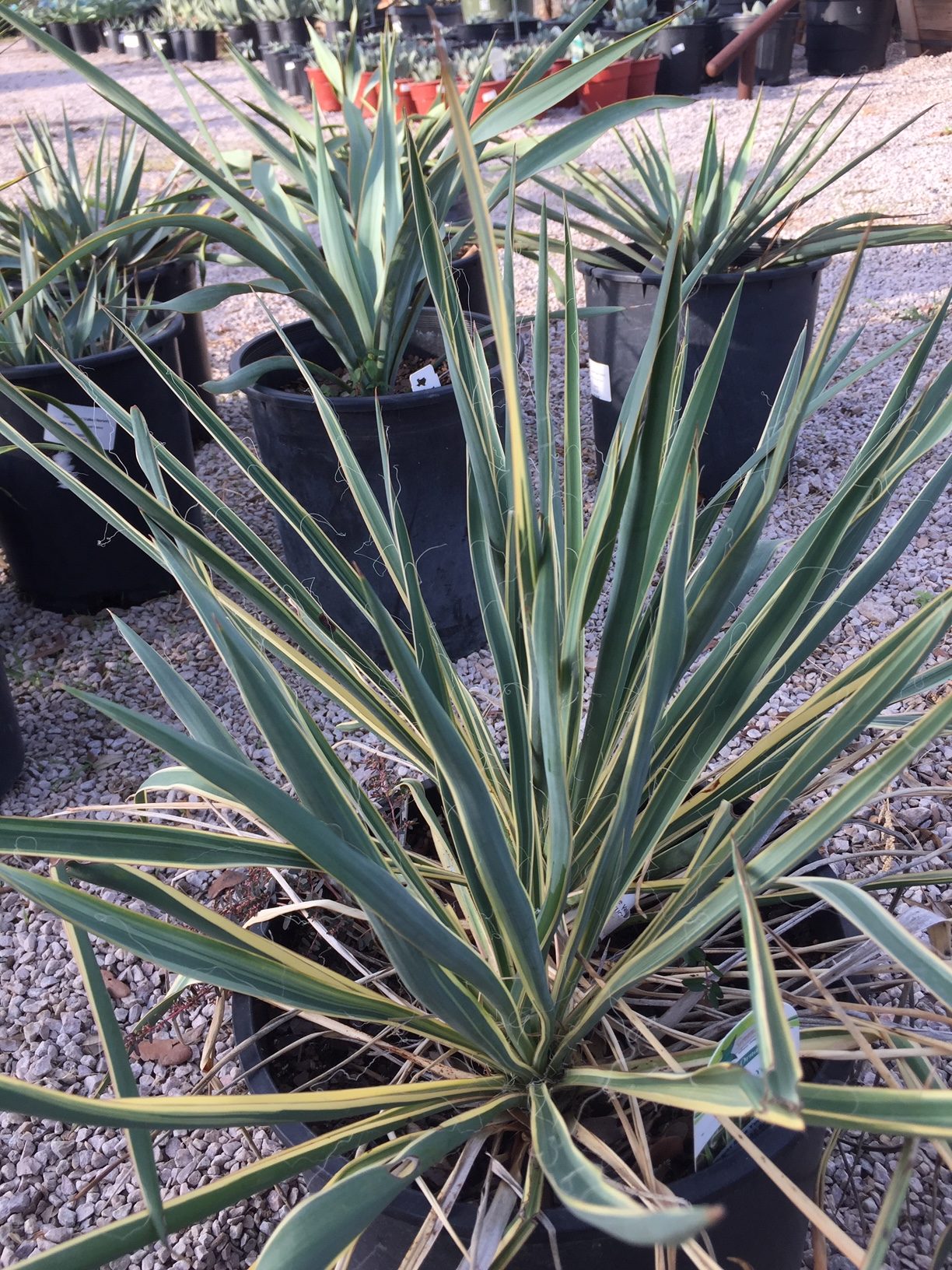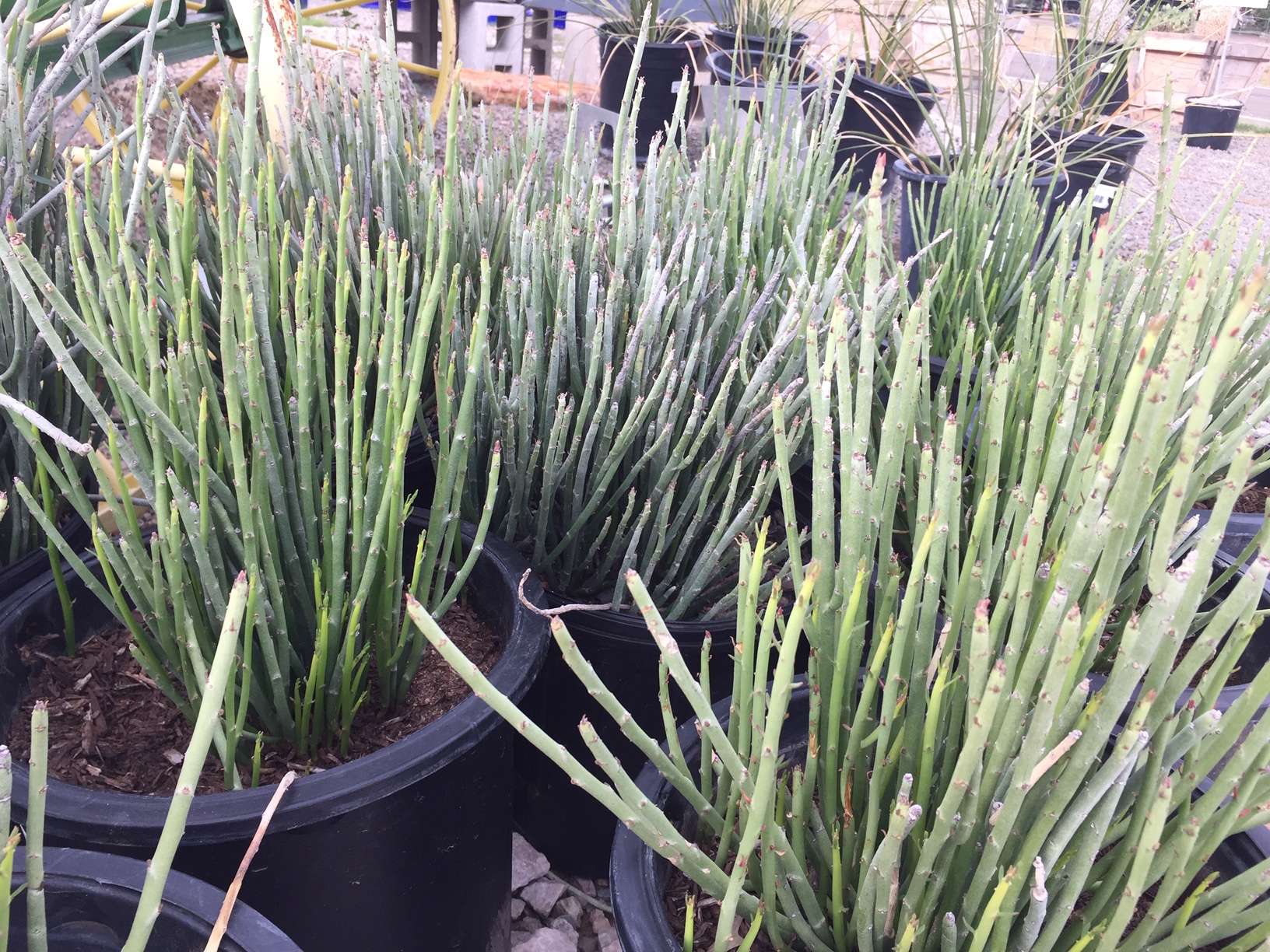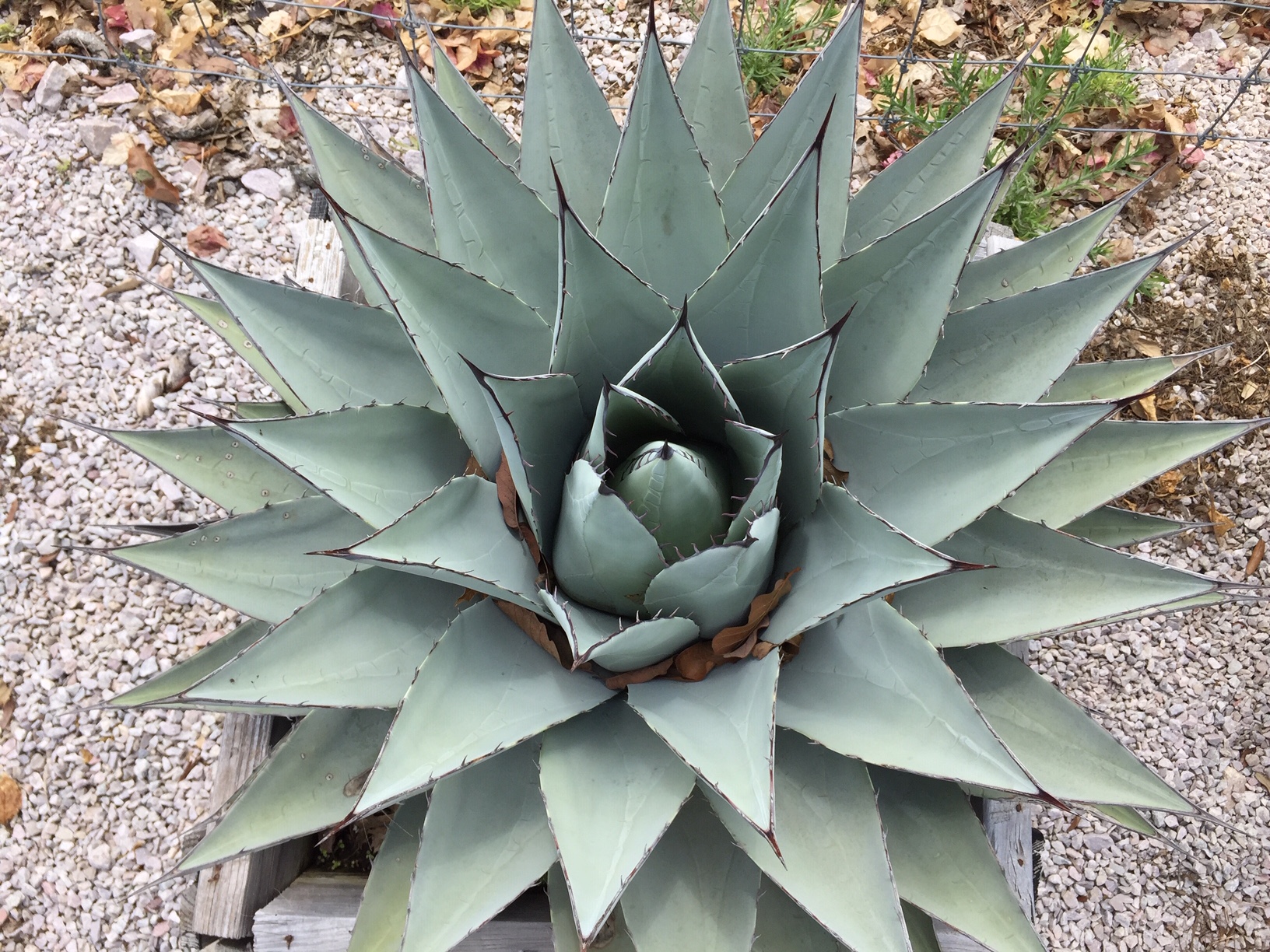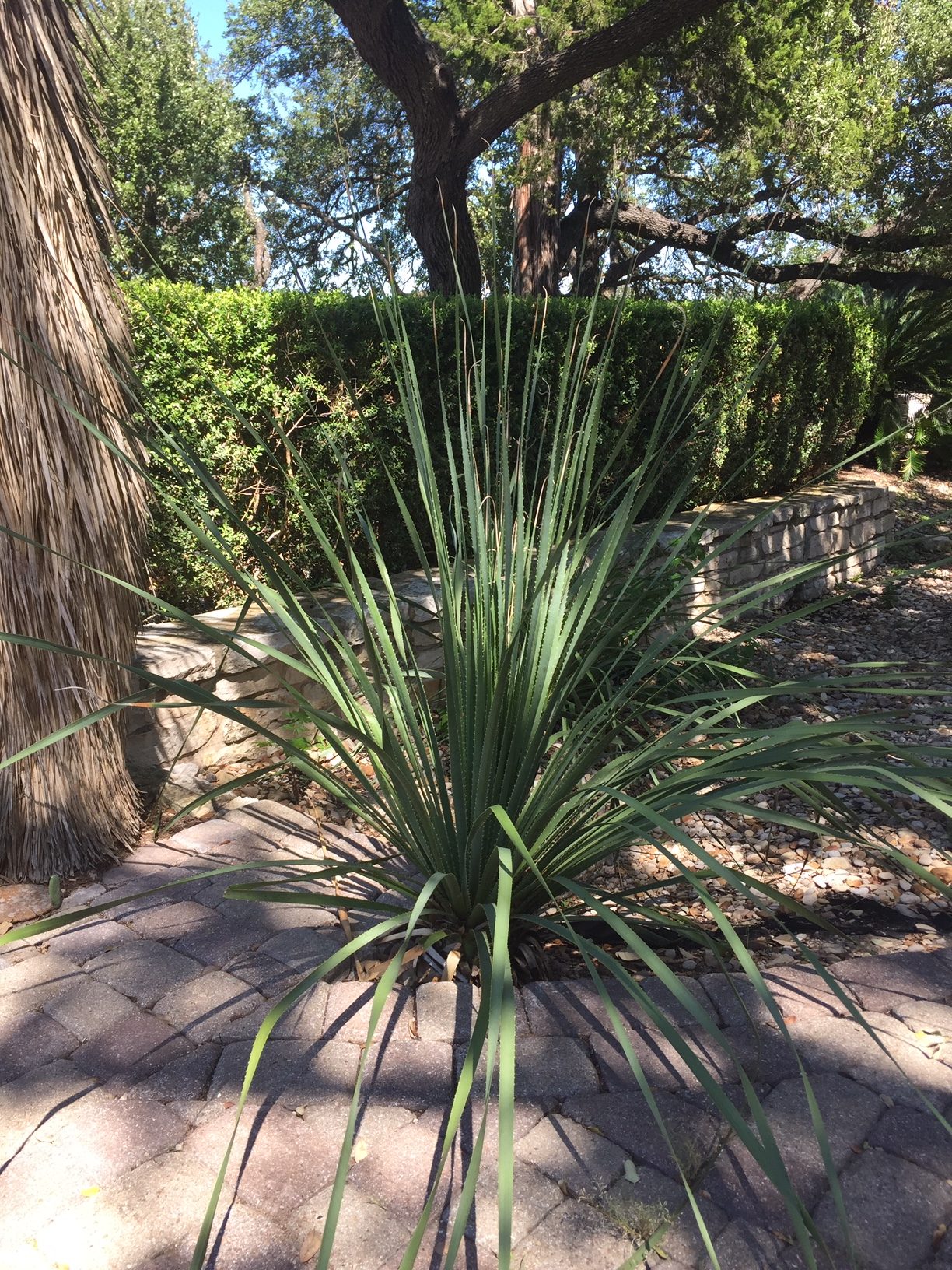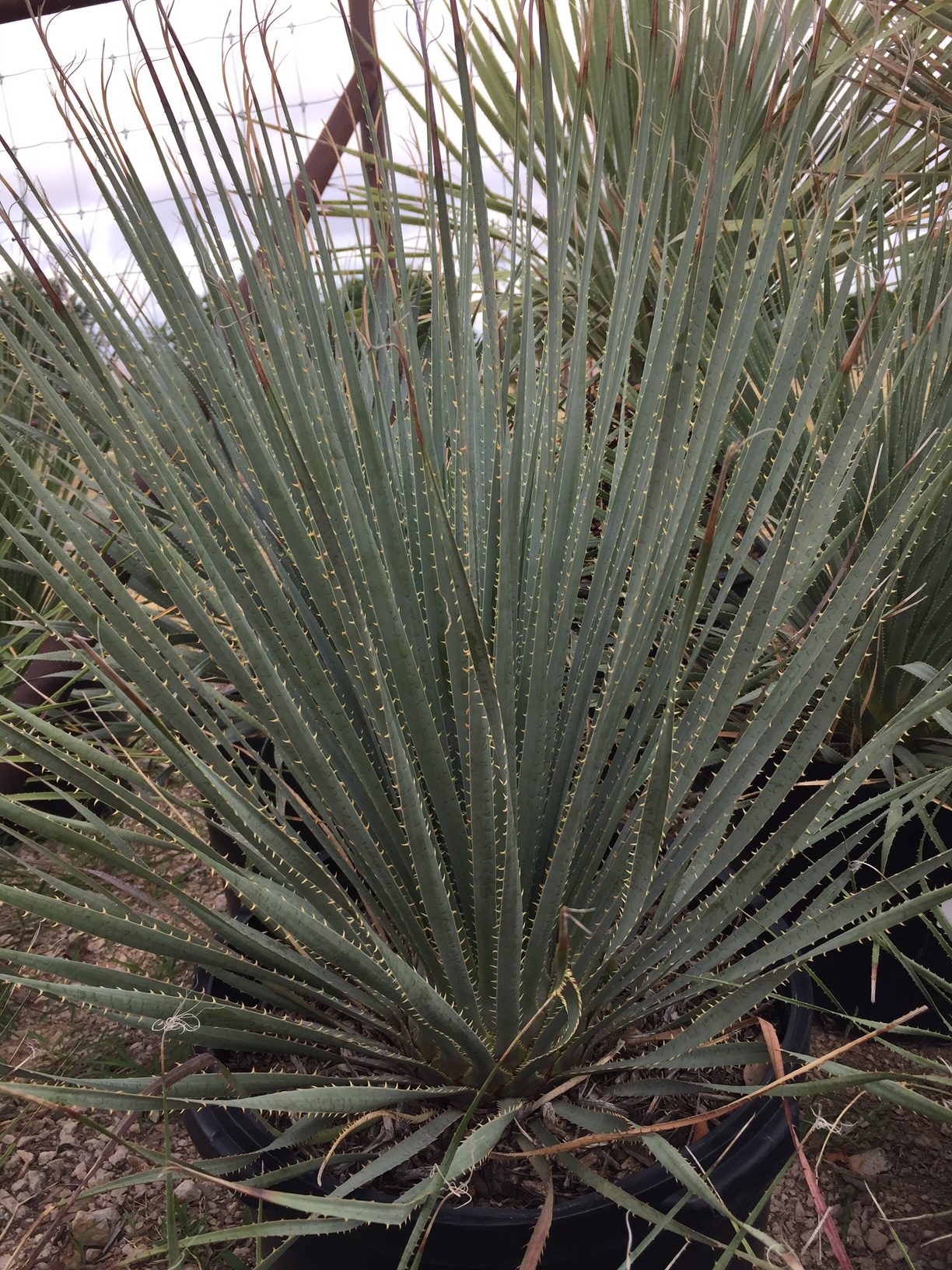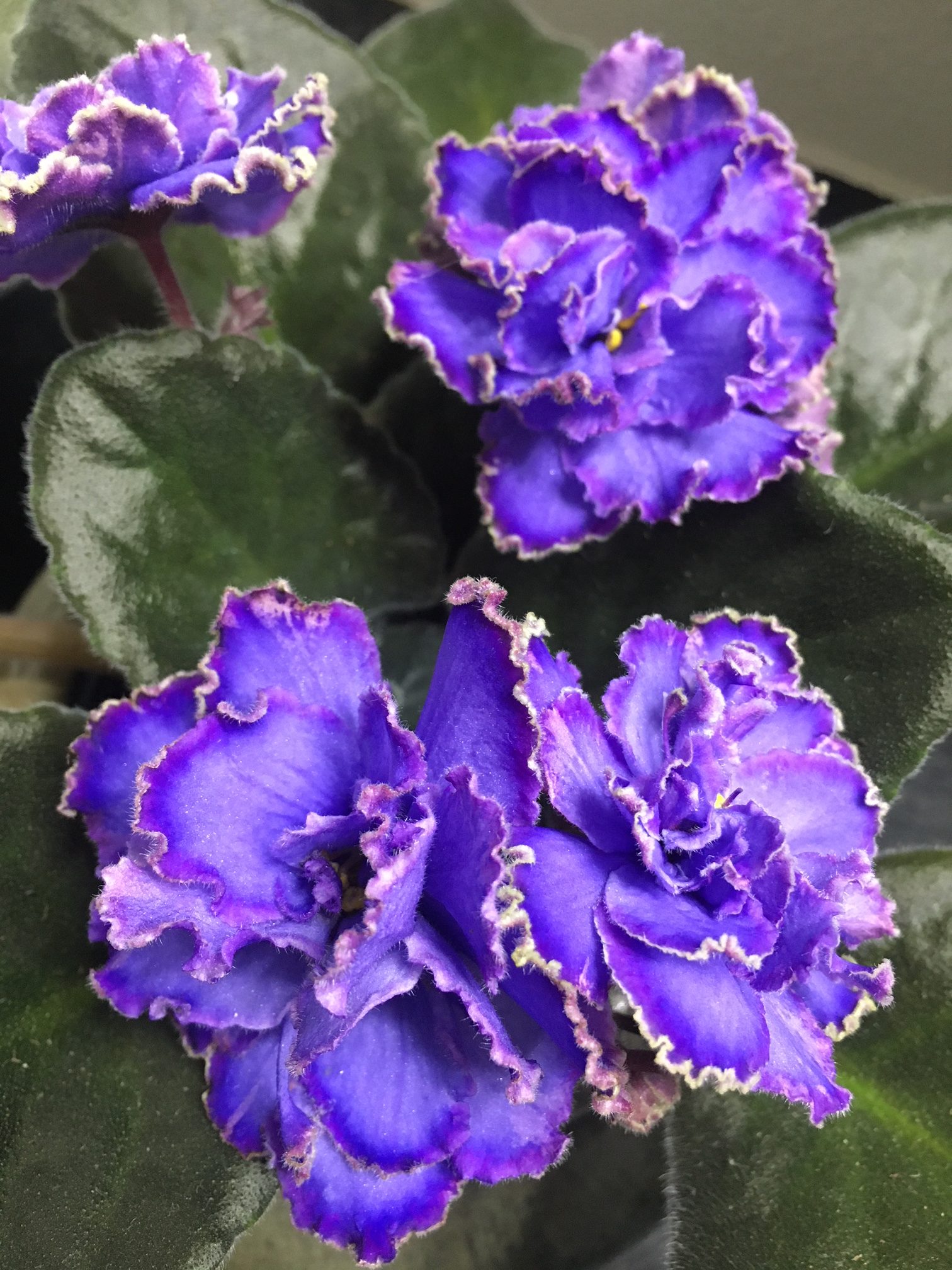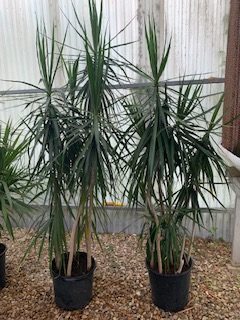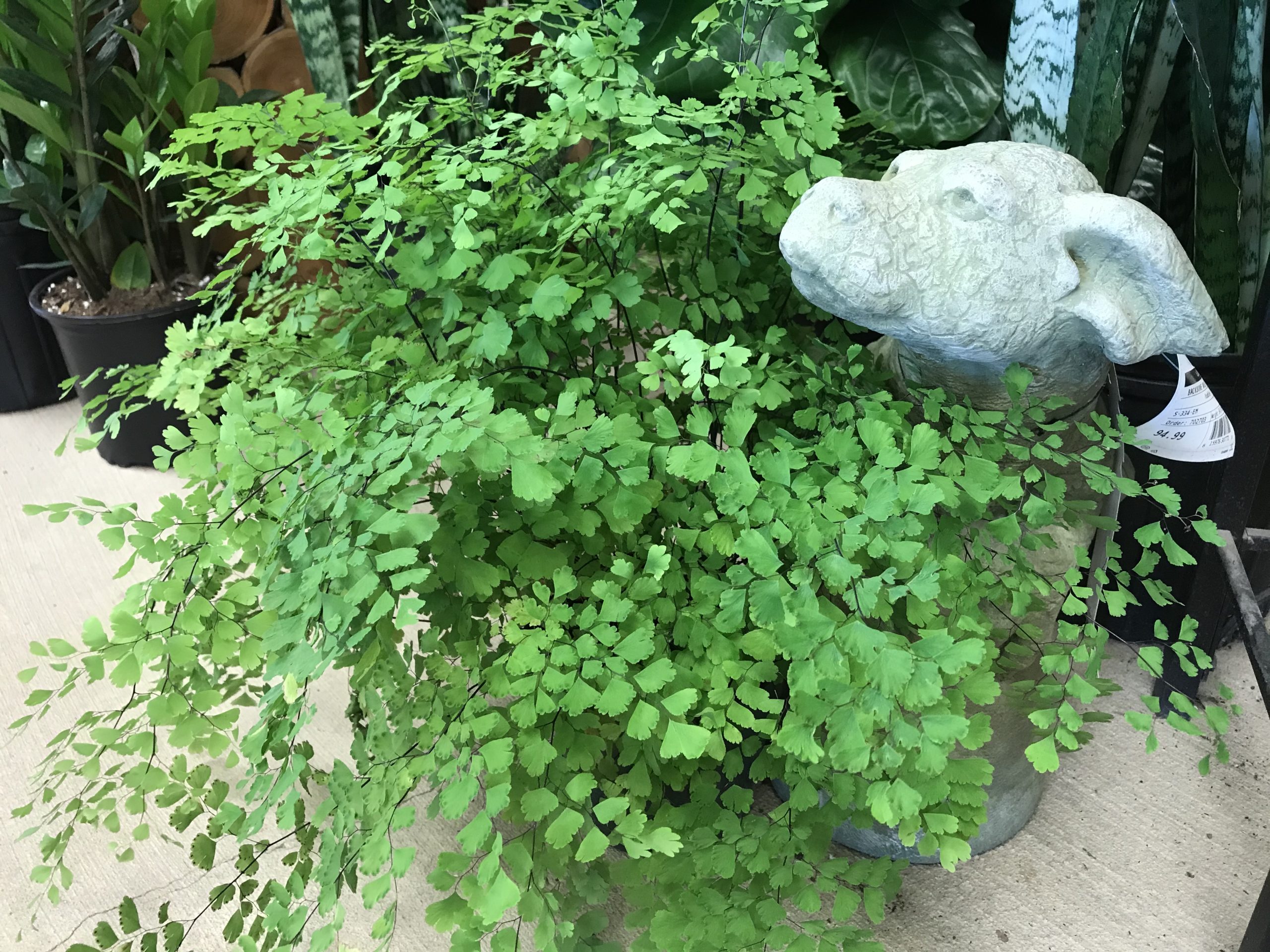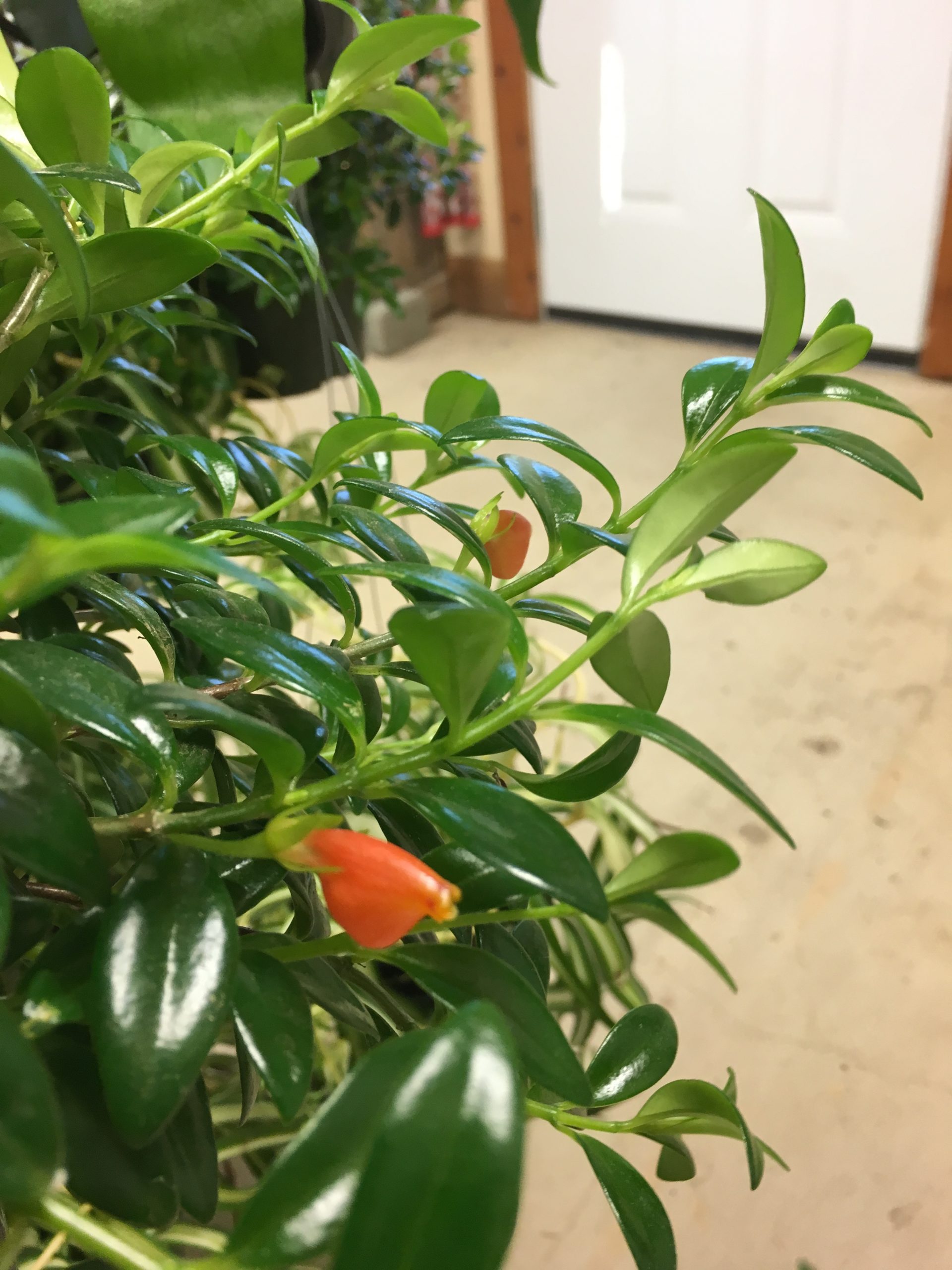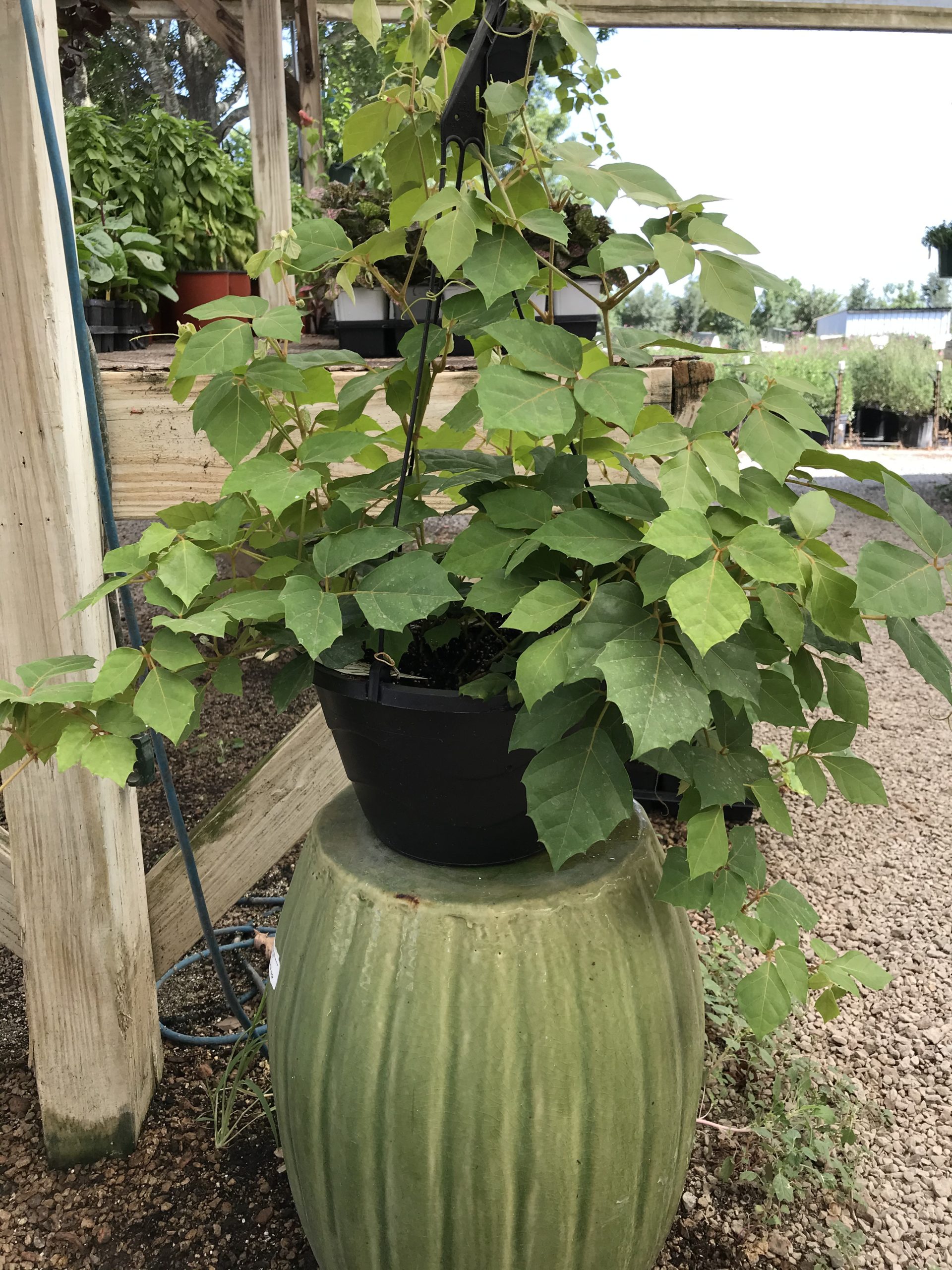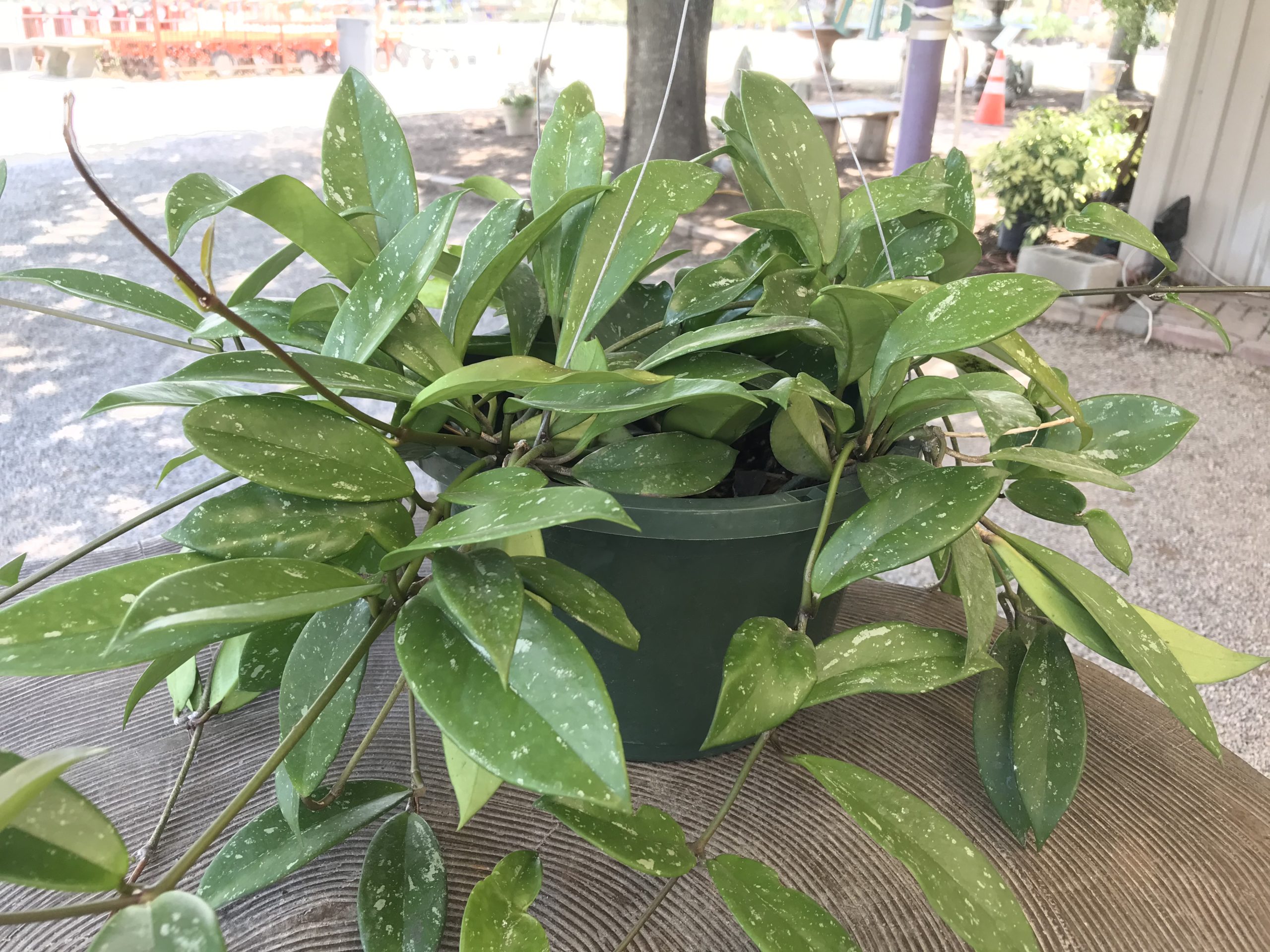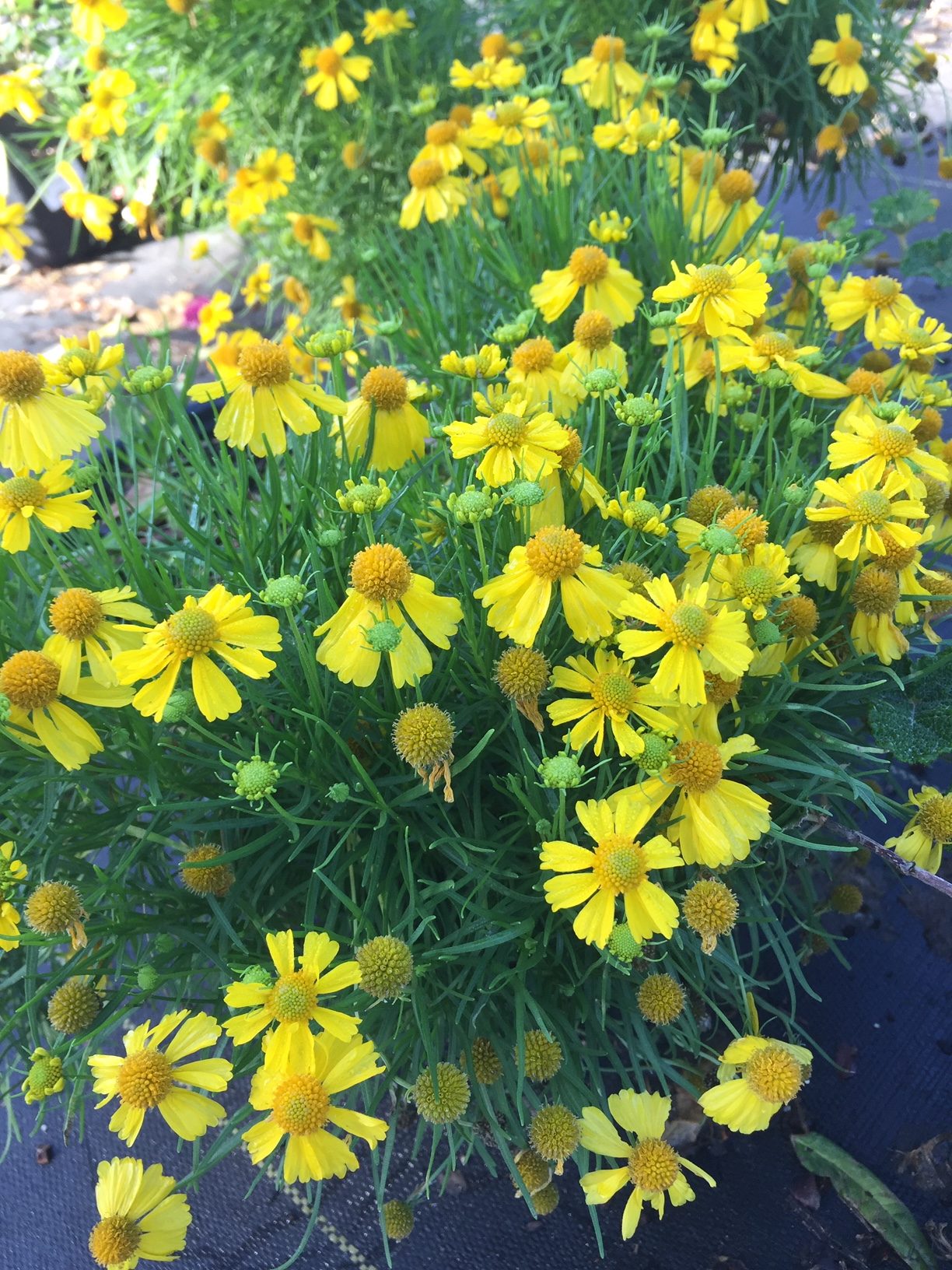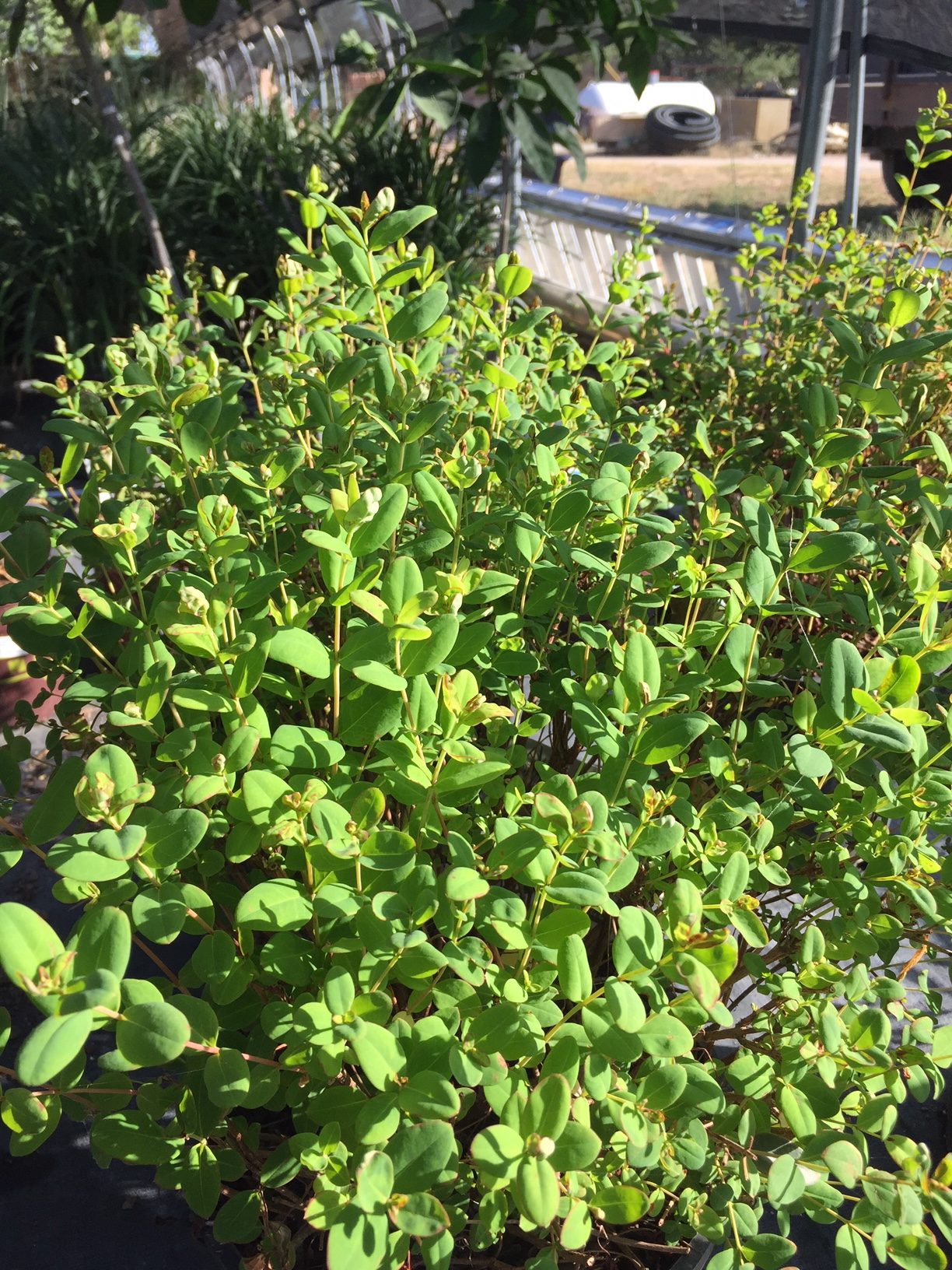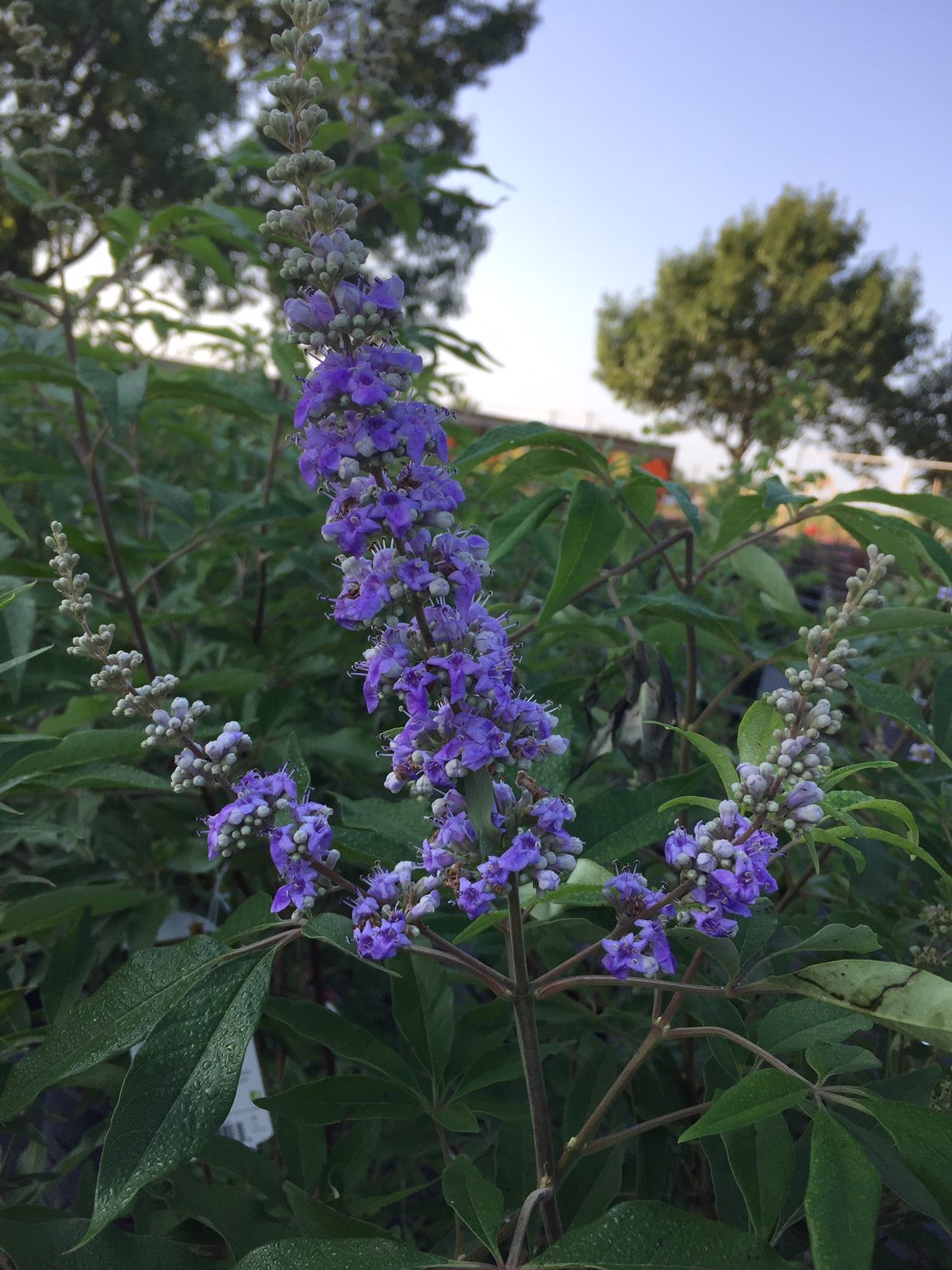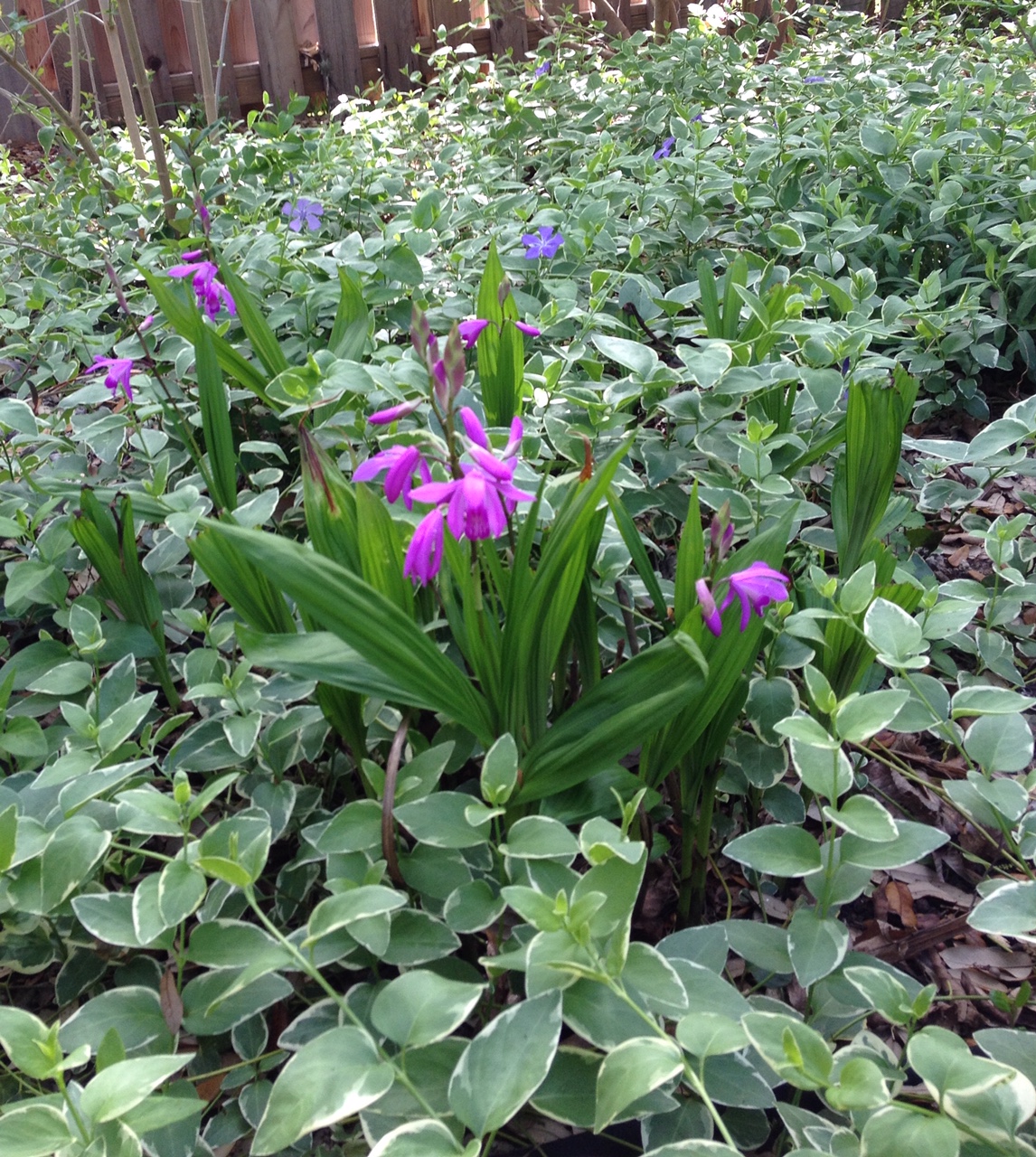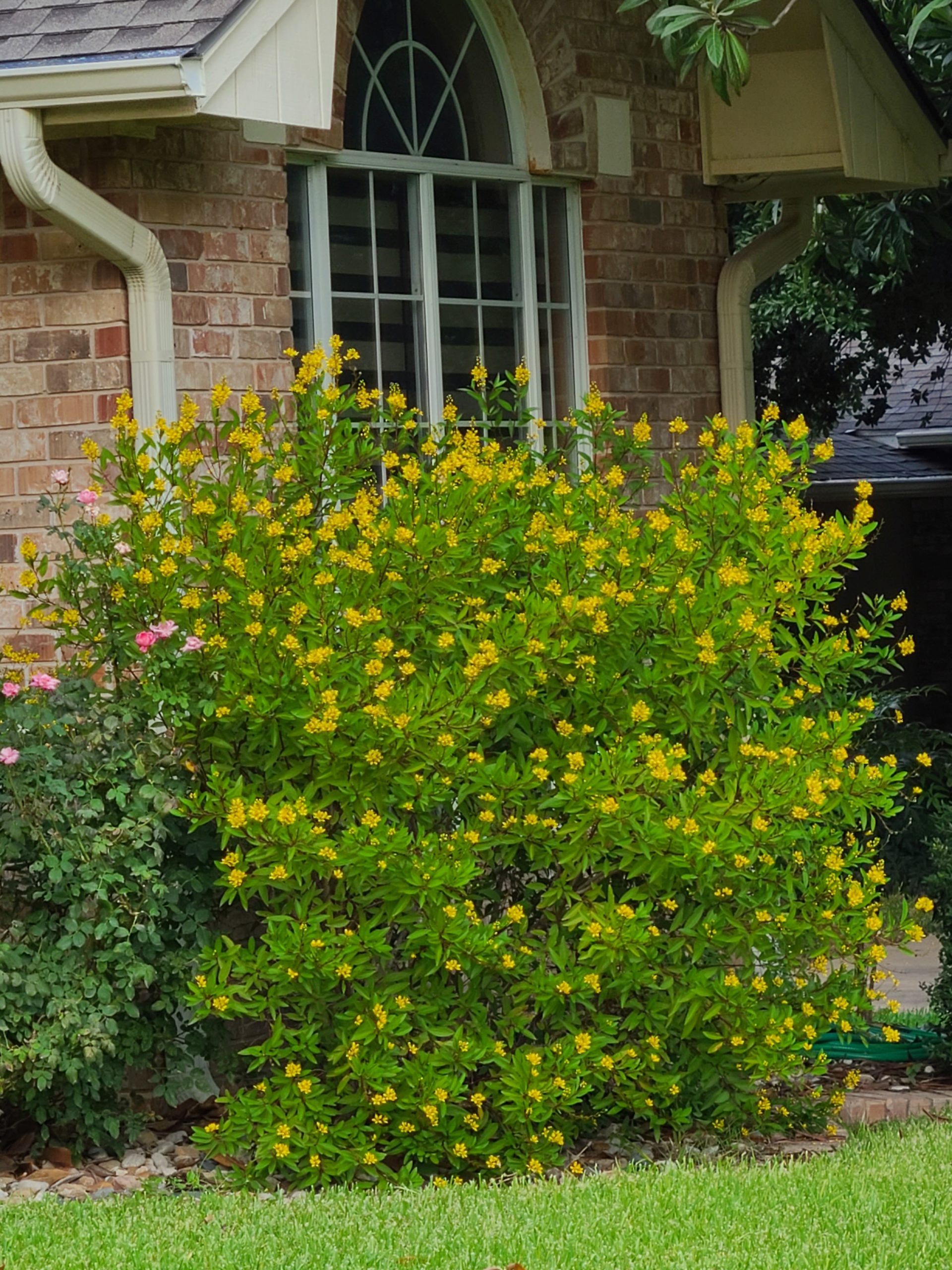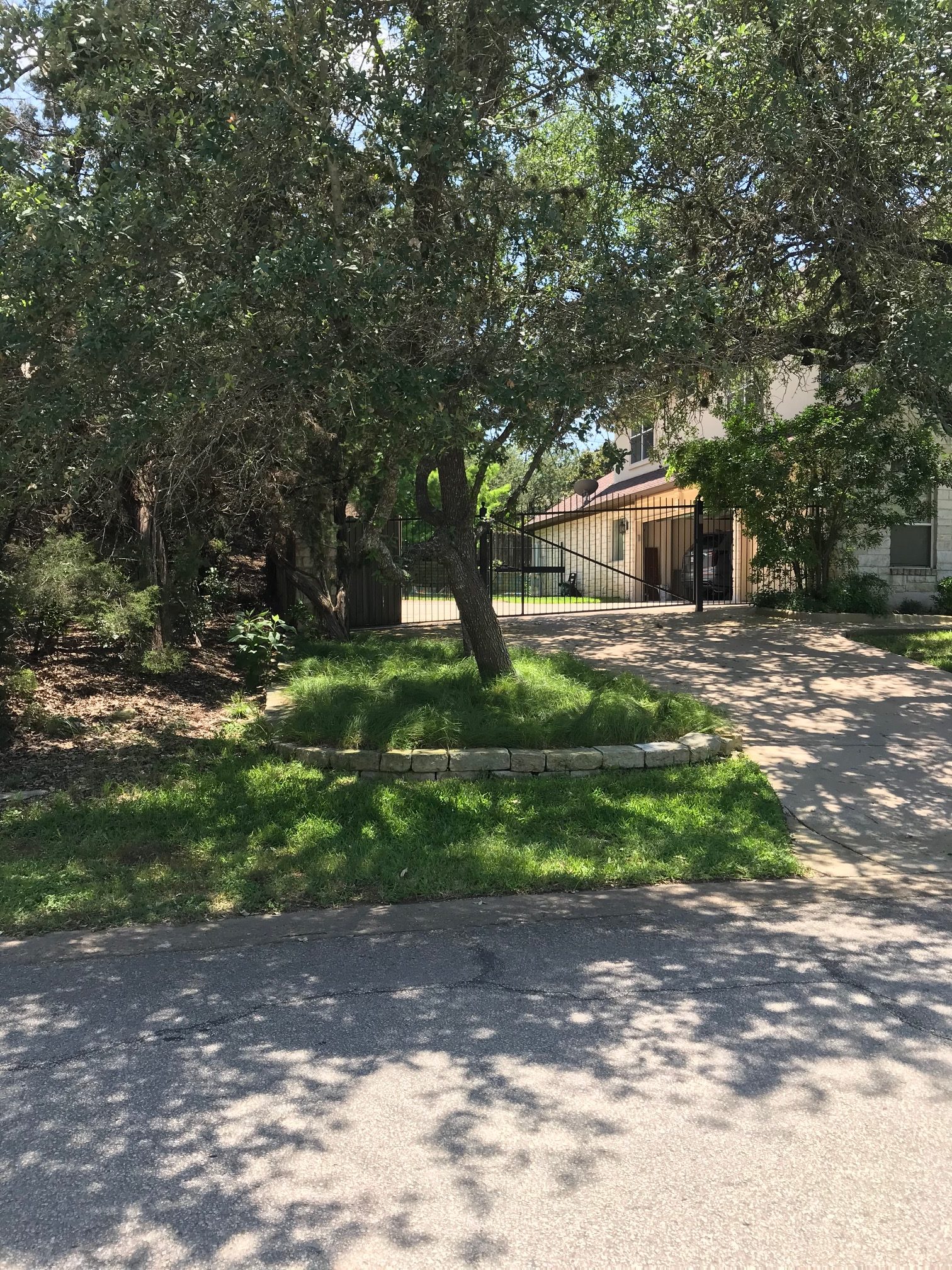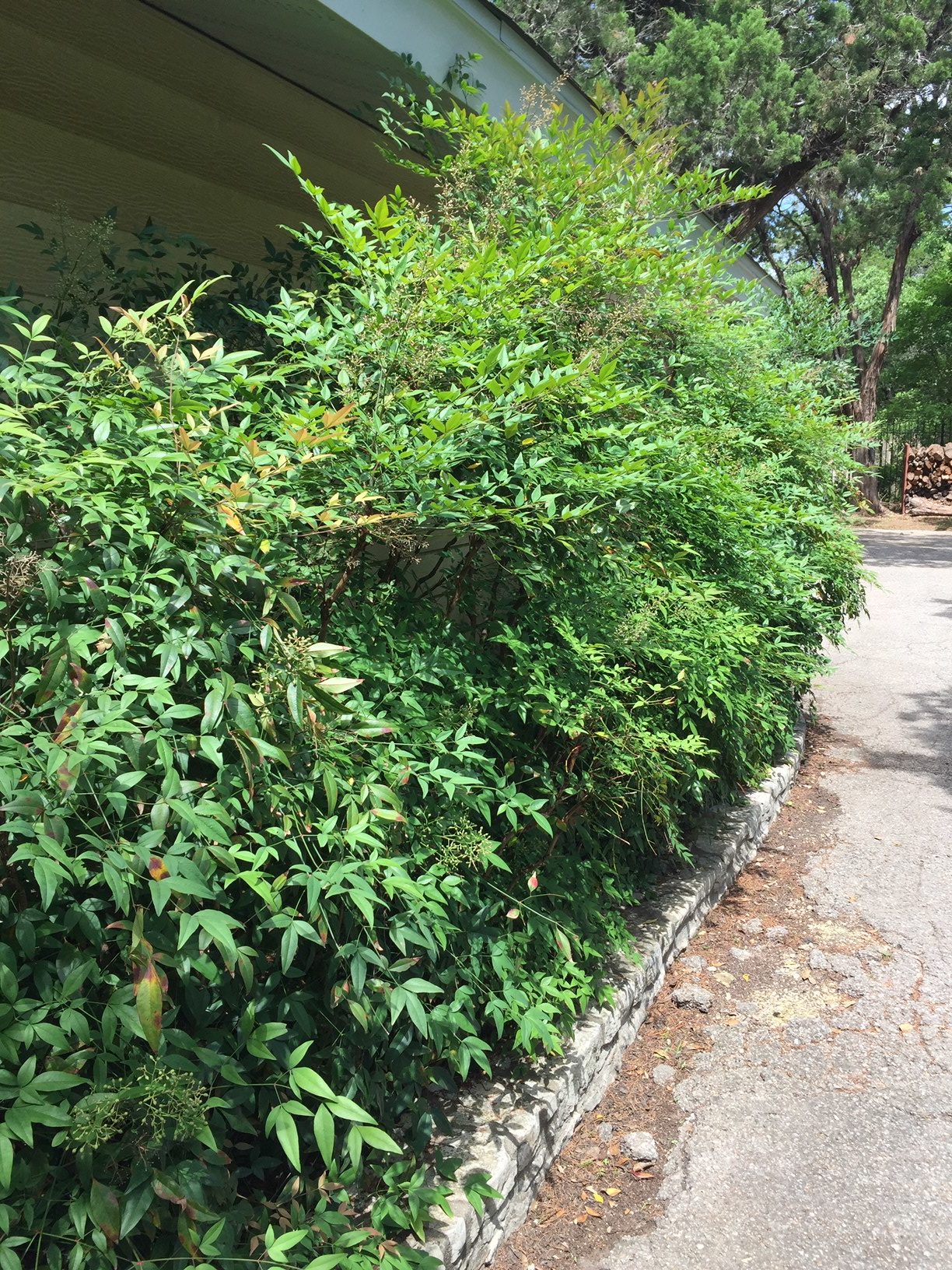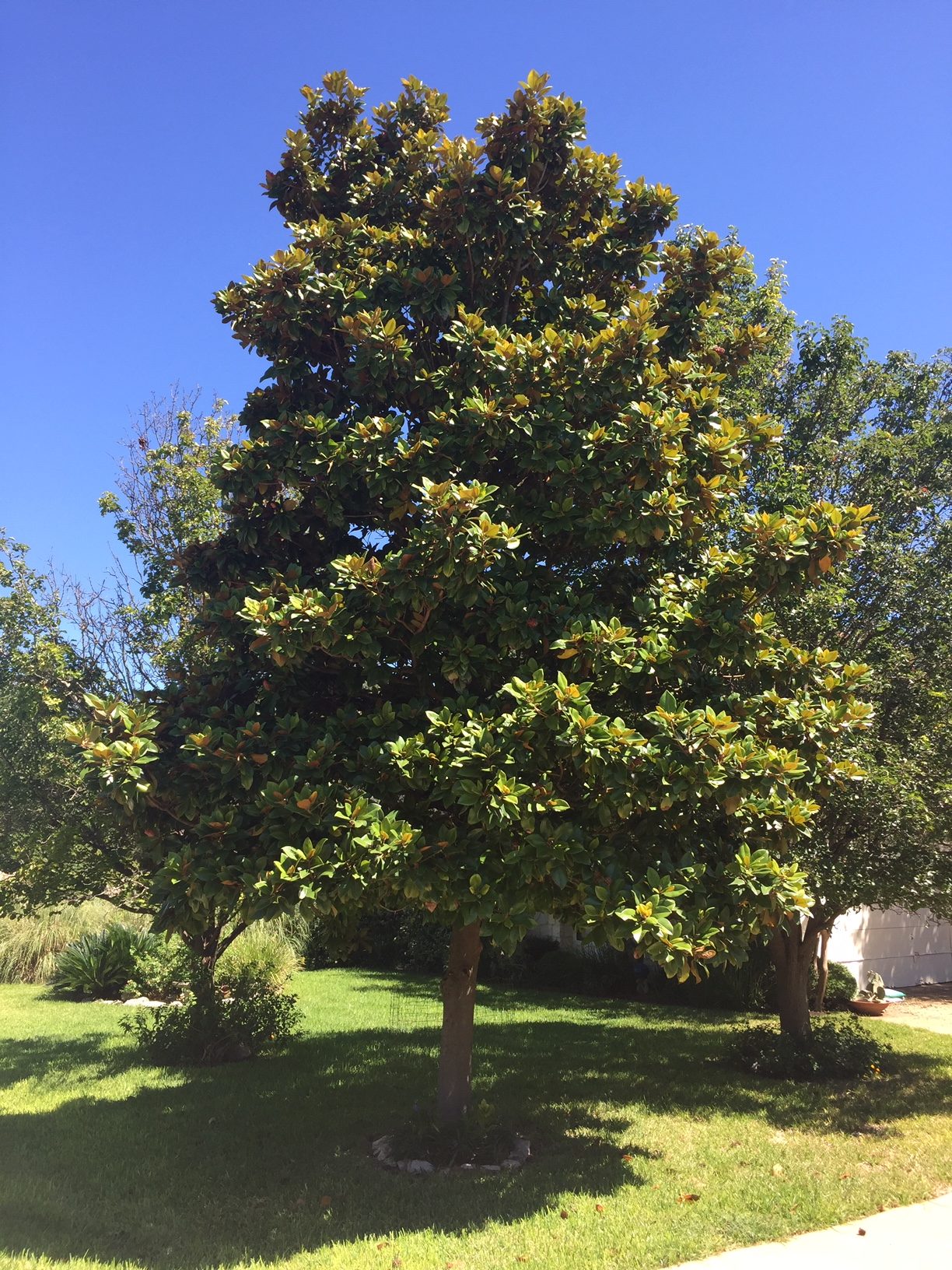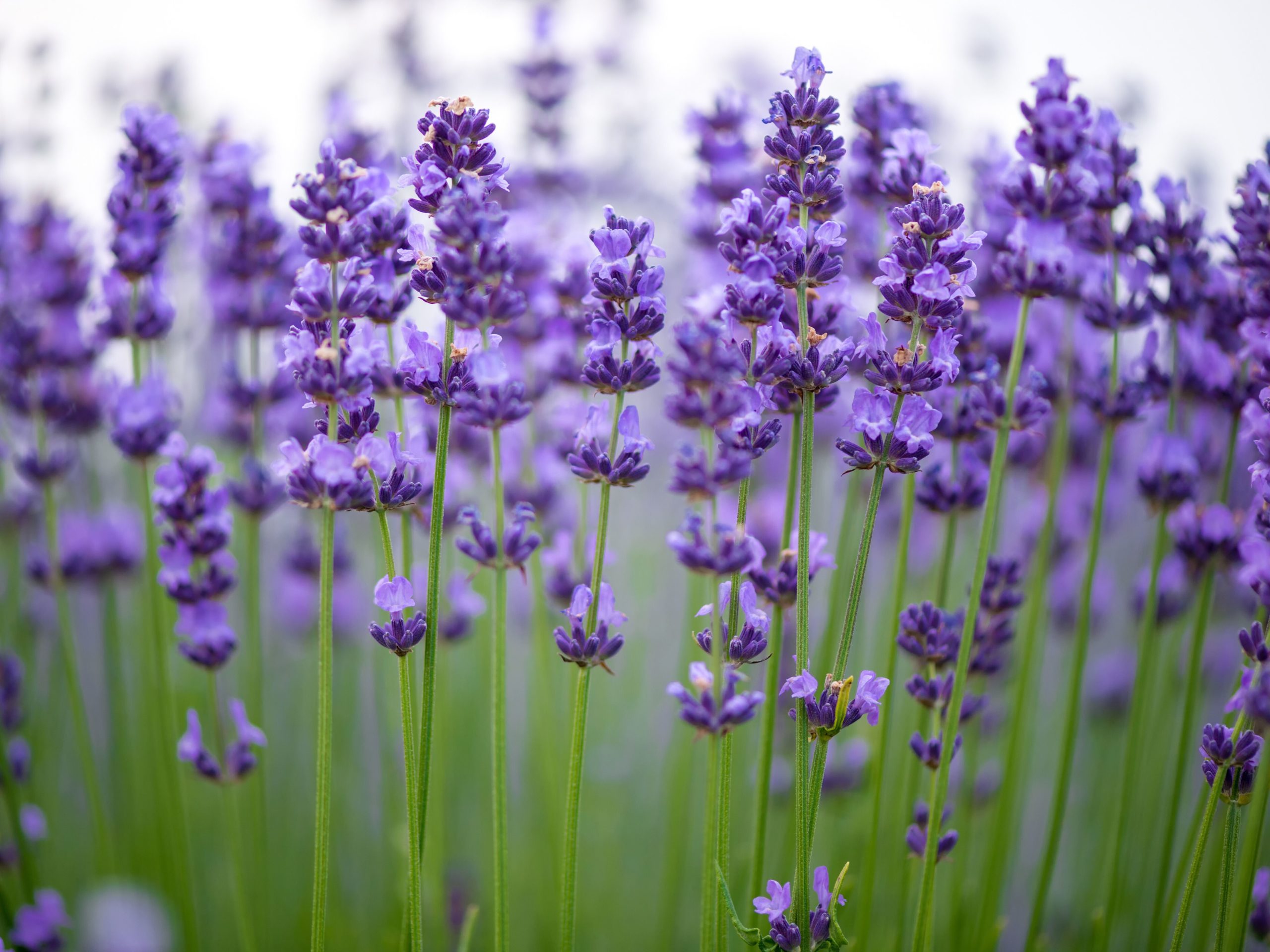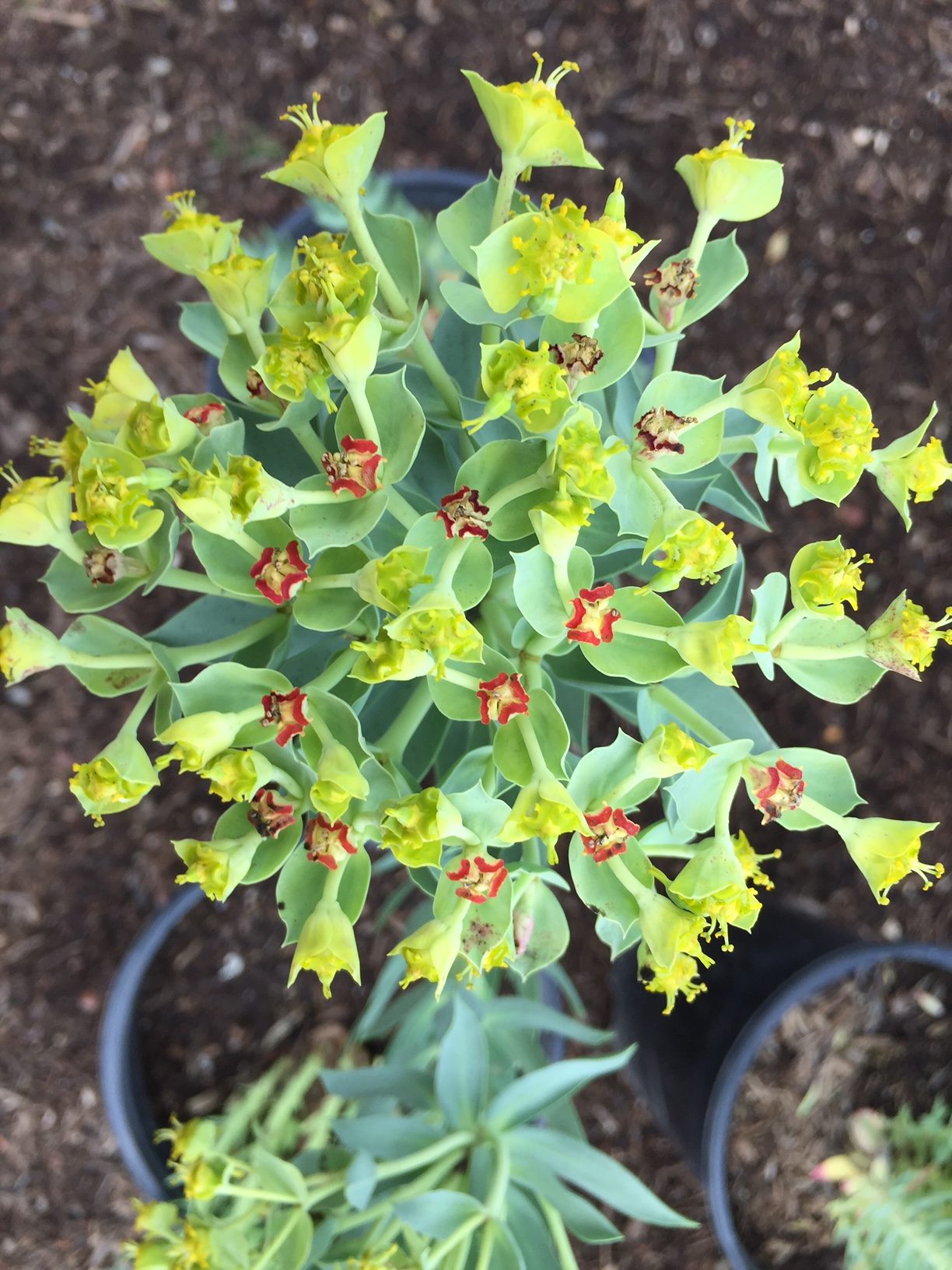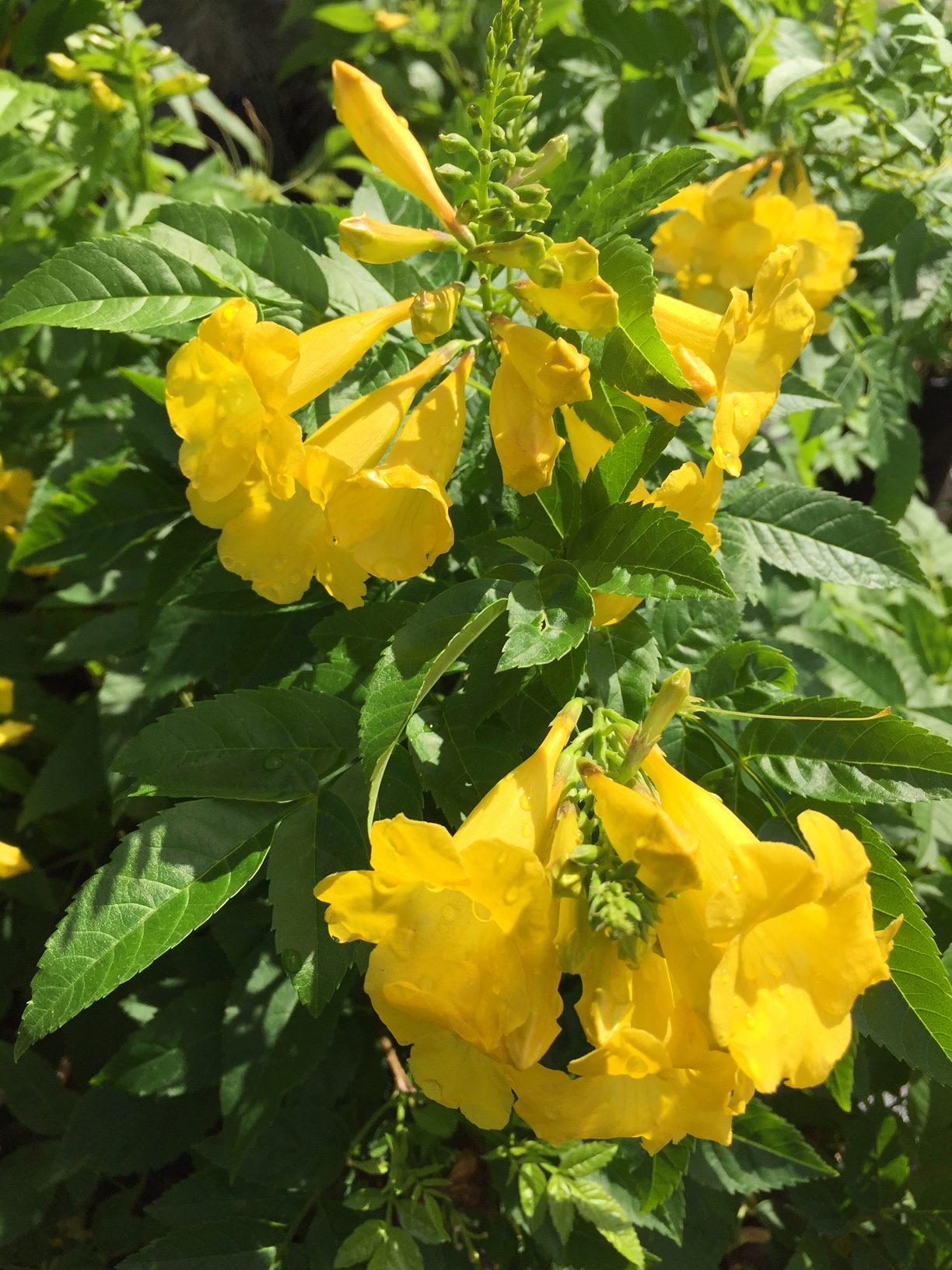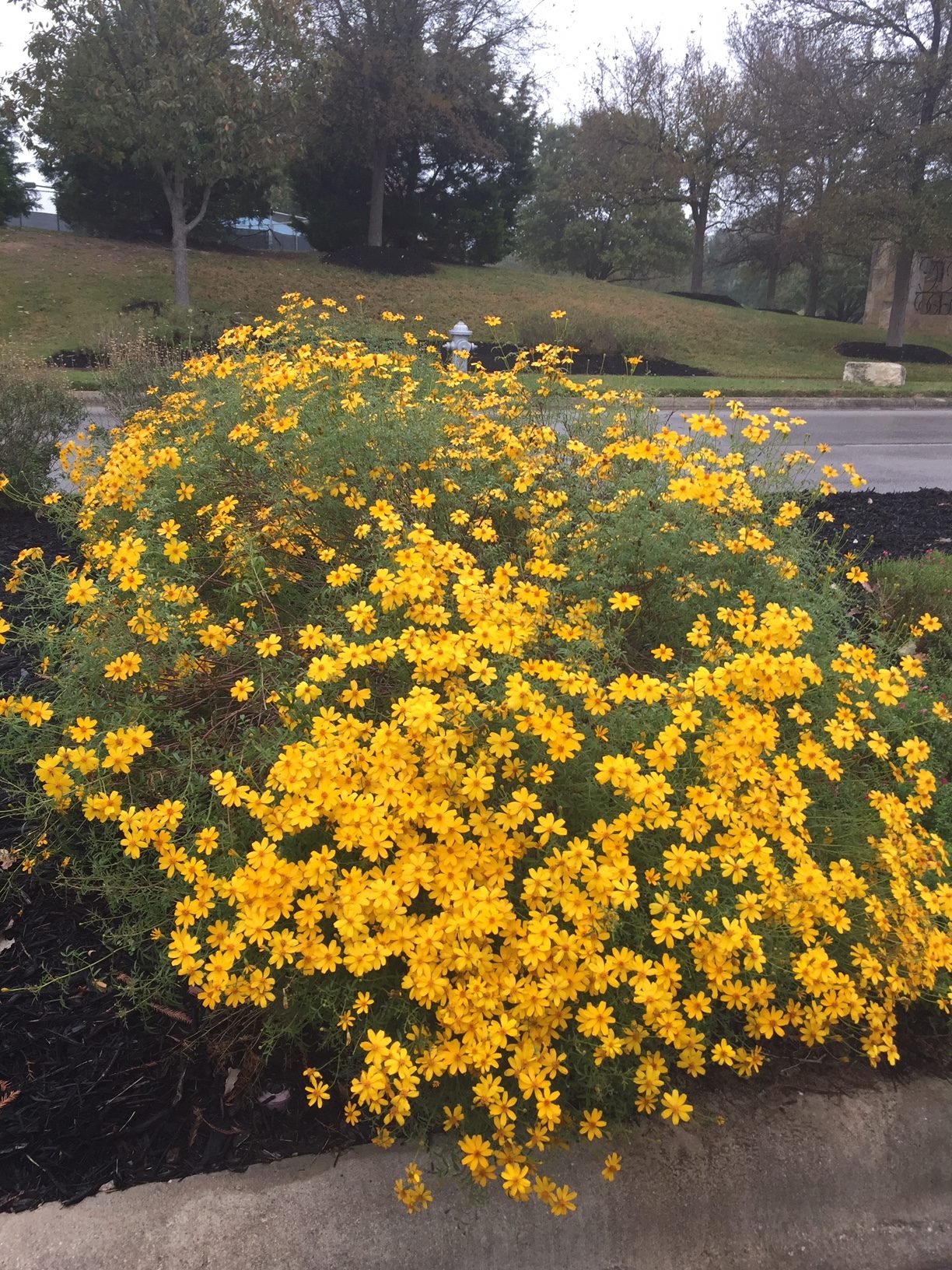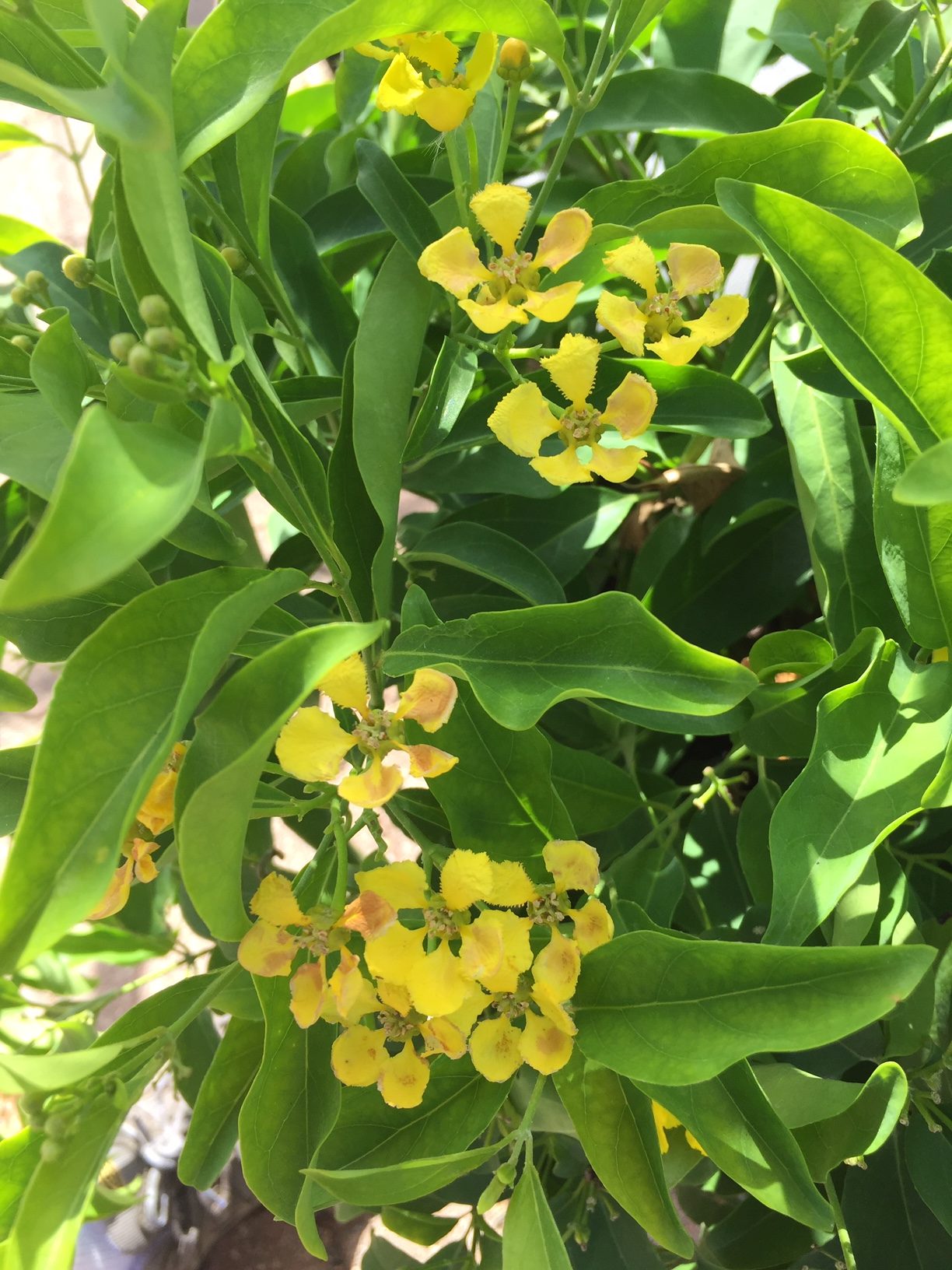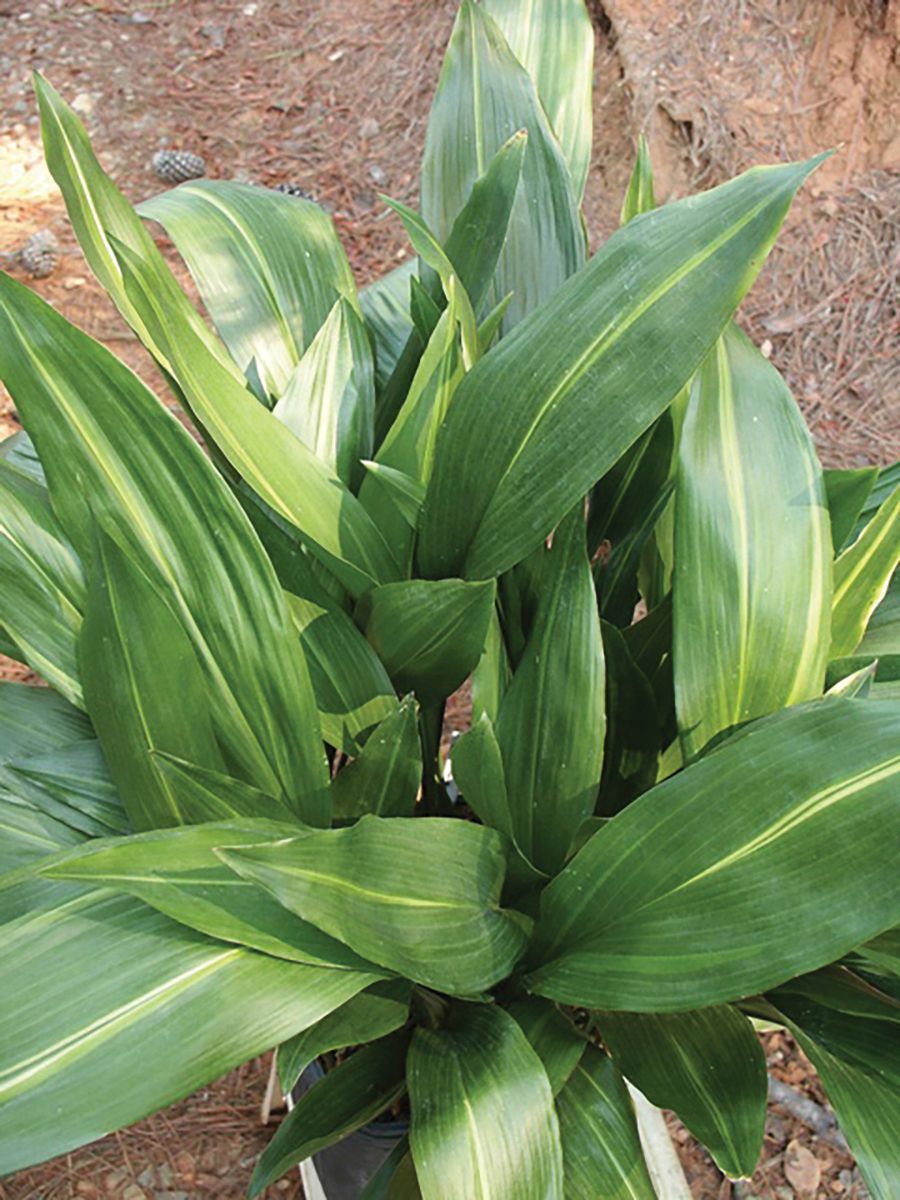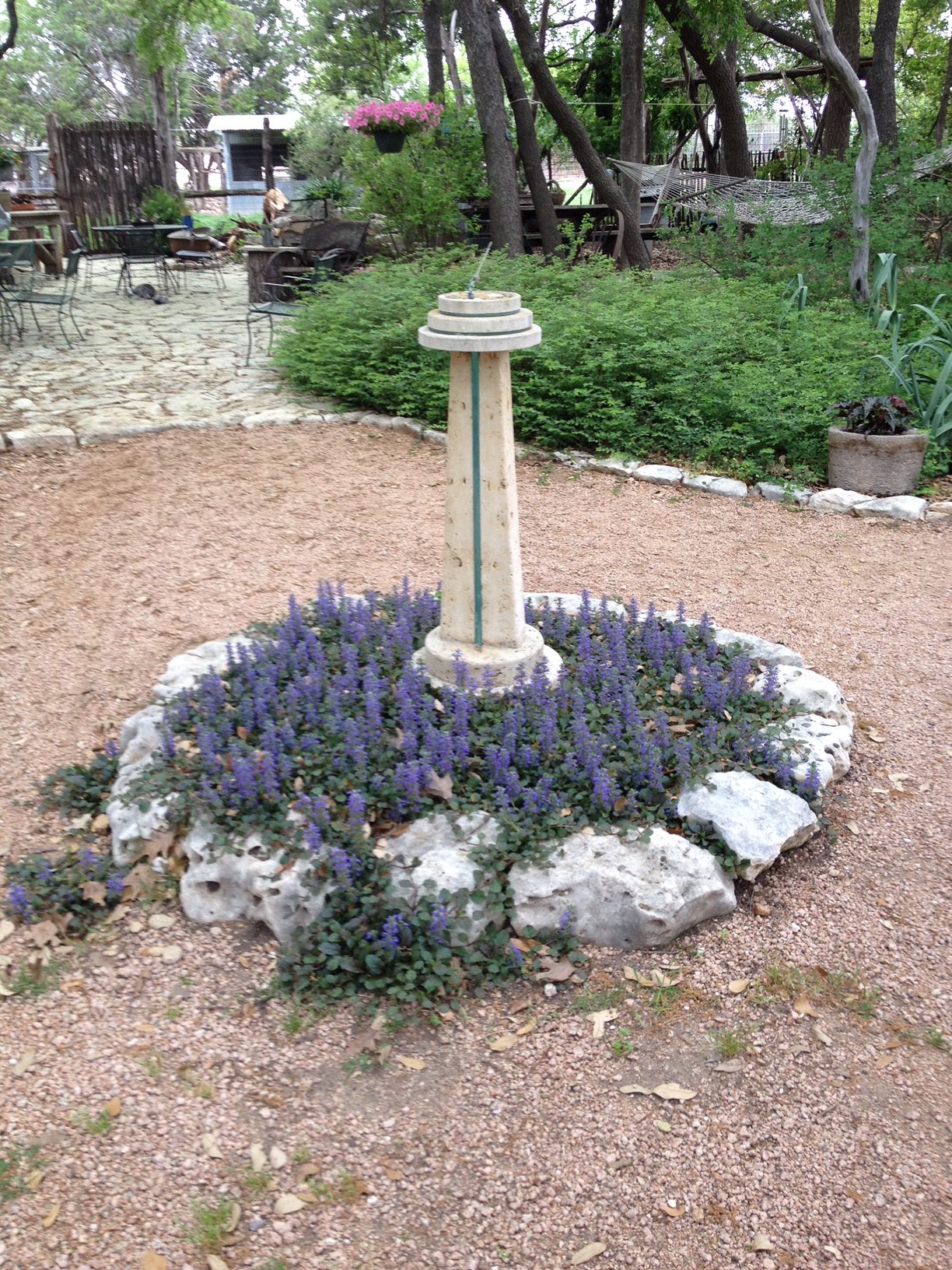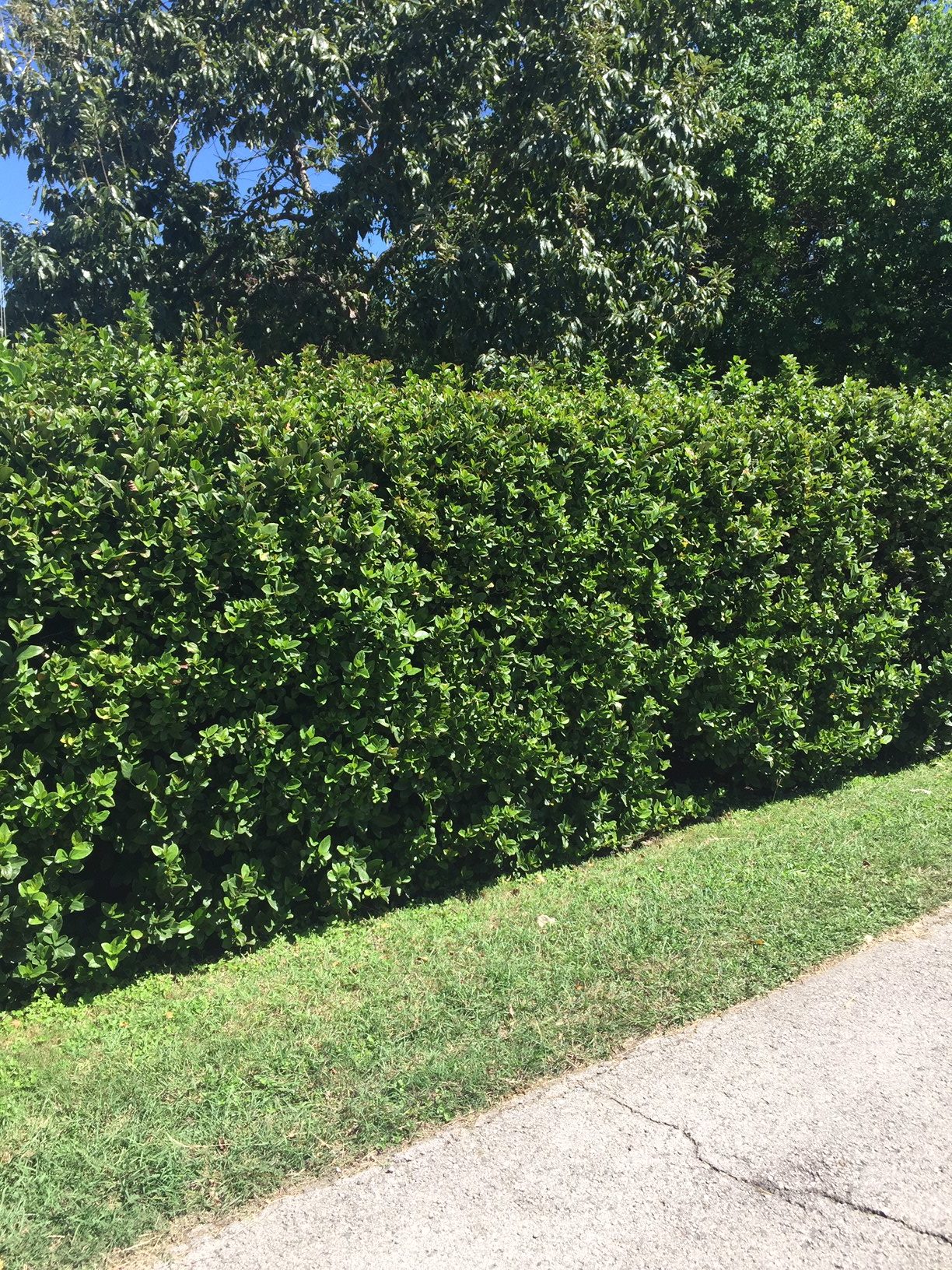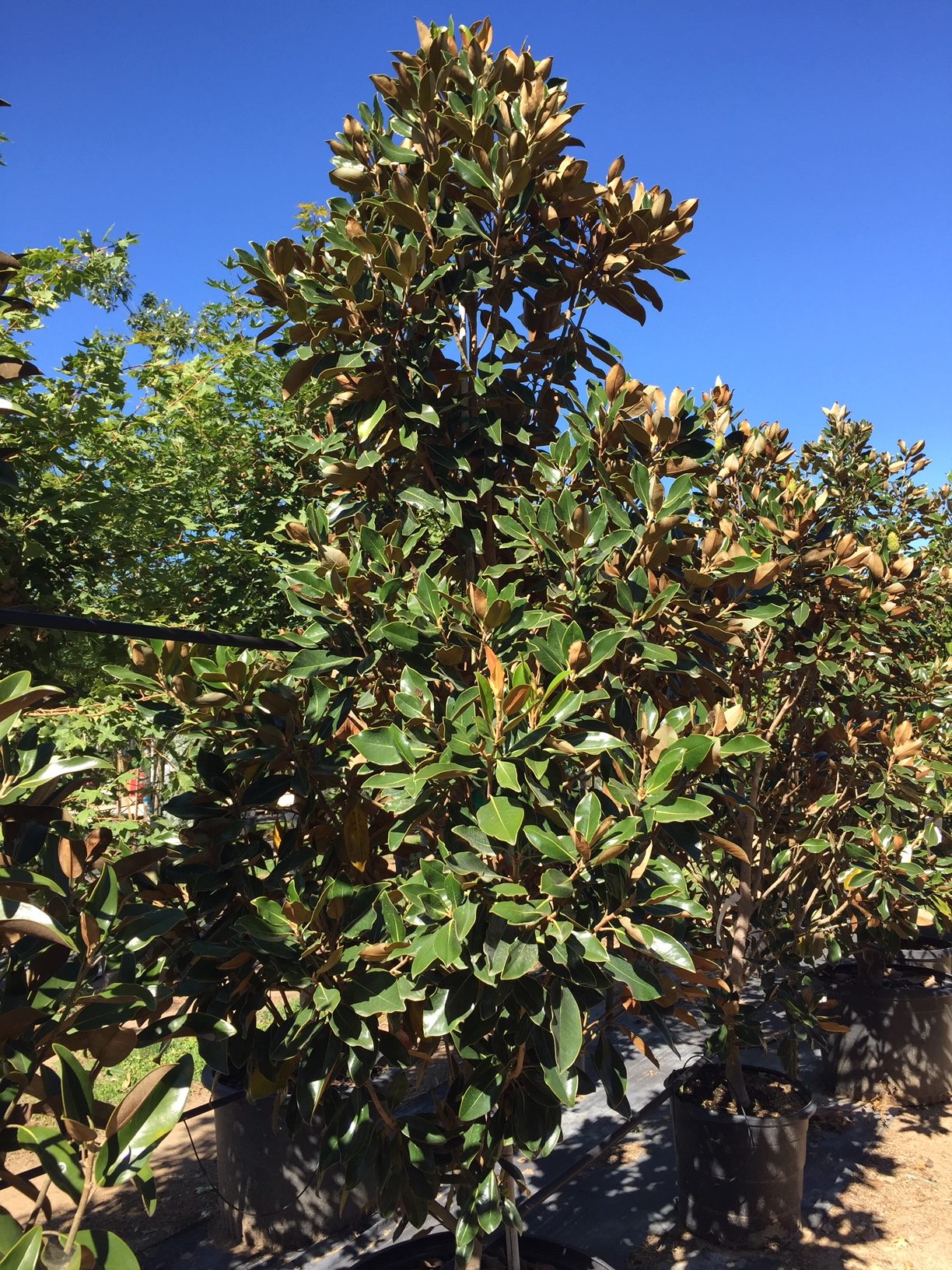PRODUCTS AT BACKBONE VALLEY NURSERY
RAISED BED MIX
- 20% Pine humus
- 60% mixed pine
- 10% granite sand
- 10% The Ground Up compost
Call for pricing.
TOP DRESSING/LAWNS
- 50% granite sand
- 25% poultry mushroom compost
- 25% The Ground Up compost
Call for pricing.
LANDSCAPE MIX/GARDEN SOIL
- 30% topsoil
- 30% humus compost
- 20% mixed pine
- 10% poultry mushroom compost
- 10% The Ground Up compost
Call for pricing.
COMPOST MIX
- 40% humus compost
- 40% mixed pine
- 10% poultry mushroom compost
- 10% The Ground Up compost
Call for pricing.
THE GROUND UP COMPOST
Native plant and veggie compost.
Call for pricing.

EBONY & IVORY (AKA BLACK DIAMOND ‘WHITE’)
Striking white blooms with contrasting black foliage. Good fall color. Mildew resistant. Drought tolerant.
Size: 10′-12′
ENDURING SUMMER WHITE
This dwarf Crape Myrtle sports bright white blooms on glossy, dark green foliage. Excellent accent plant or may be grown in a container. Color: Bright white
Size: 4’-5’
THUNDERSTRUCK WHITE LIGHTNING
Masses of white blooms against green foliage that fades to black on this fast-growing Crape Myrtle is quite a contrast.
Color: White
Size: 20’-30’
BLACK DIAMOND ‘MYSTIC MAGENTA’
Magenta blooms contrast with dark, almost black foliage on this striking tree.
Size: 10′-12′
PINK VELOUR
Upright fast growing cultivar. Dark orange fall color. Fair mildew resistance.
Size: 10′-20′
PRINCESS KYLIE
Perfect for mass plantings, this moderate grower reaches 3′-4′ tall and wide. Magenta flowers appear summer through fall. A drought-resistant variety
PRINCESS LYLA
Rose-pink flowers bloom from summer to fall on this dimunitative Crape Myrtle. Reaching only 1′-2′ tall and wide, it is perfect for containers or borders. Dark green leaves turn gold in the fall.
PRINCESS ZOEY
Red and pink flowers adorn this plant from summer to fall. The dark green leaves turn reddish-purple in the fall.
Size: 4′-5′
RASPBERRY BELINI
A compact deciduous shrub with a mounding form. Great for mixed borders or low hedge. Resistant to powdery mildew.
Color: Raspberry Pink
Size: 3′ – 4′
RASPBERRY SUNDAE
An upright, nearly columnar form with raspberry pink blooms edged in white. New growth emerges bronze the turns medium green. Great red-orange fall color.
Color: Raspberry Pink
Size: 15′
RHAPSODY IN PINK
A vigorous grower with dark wine colored new growth and soft pink flowers. Drought tolerant and mildew resistant. Prolonged flowering season due to new flower buds being formed on old flower panicles.
Size: 10′-15′
GRAPE BELINI
A truly compact dark lavender-purple Crape Myrtle which blooms earlier than other varieties. Resistant to powdery mildew.
Color: Dark Lavender
Size: 3′ – 4′
ENDURING SUMMER LAVENDER
Vibrant purple flowers against glossy, dark green foliage make this disease resistant Crape Myrtle a winner. Color: Bright purple
Size: 4’-5′
PRINCESS JADEN
This slow grower reaches only 1′-2′ tall and wide, and is perfect for borders or narrow plantings. The lavender flowers appear summer through fall. Leaves turn copper to reddish-purple in the fall.
Size: 1′-2′ x 1′-2′
VELMA’S ROYAL DELIGHT
Large arching clusters of magent-purple flowers last for an extra-long bloom time in the summer. Upright, compact growth habit to 6′-8′.
COLORAMA SCARLET
Deep scarlet blooms on contrasting dark-green foliage make this a standout in the landscape. Color: Scarlet red
Size: 15\’-20\’
DOUBLE FEATURE
Wine-red foliage with ruby-red blooms forms the “double-feature”‘ on this colorful Crape Myrtle. Forming almost a perfect ball, it grows to 6′-8’ tall and wide.
EBONY FLAME (AKA BLACK DIAMOND ‘RED’)
Vibrant, dark red flowers contrast with black foliage. Mildew resistant. Heat tolerant. Holds color through summer.
Size: 10′-15′
ENDURING SUMMER RED
Prolific bright red blooms on a tight rounded habit make this a standout in the landscape. Color: Bright Red
Size: 4’-5’
THUNDERSTRUCK RUMBLIN’ RED
Fast -growing tree with ruby-red flowers against near-black ruffled foliage.
Color: Ruby red
Size: 12’-15’
APACHE BLACKBERRY
Thornless with very upright canes. Very large fruit. Excellent flavor.
Chilling Hours: N/A
Pollinizer Required? Self-Fertile
Ripening Period: Mid-June
ARAPAHO BLACKBERRY
Thornless variety. Disease resistant with a long shelf life. Fast grower. Sweet flavor.
Chilling Hours: N/A
Pollinizer Required? Self-Fertile
Ripening Period: Mid-June
NATCHEZ BLACKBERRY
Thornless variety, large berries that store well. Semi-upright.
Chilling Hours: N/A
Pollinizer Required? Self-Fertile
Ripening Period: Mid-June
PRIME ARK 45
A thorny Primocane-bearing blackberry with an erect growth habit. Floricanes ripen in mid summer and primocanes ripen in the fall. Firm, medium fruit with extended harvest.
Chilling hours: 300
Pollinizer Required? Self-Fertile
Ripening Period: June, July
PRIME ARK FREEDOM
A great thornless blackberry for the home garden. Fall-bearing on primocanes and earlier on floricanes.
Chilling hours: 500
Pollinizer Required? Self-Fertile
Ripening Period: Summer, Fall
PRIME ARK TRAVELER
A great thornless blackberry for the home garden. Fall-bearing on primocanes and earlier on floricanes.
Chilling hours: 300
Pollinizer Required? Self-Fertile
Ripening Period: Summer, Fall
BRIGHTWELL BLUEBERRY
Self-fruitful but pollinizer recommended for better yields. (Austin is pollinizer.) Medium-sized fruit, mid to late season Rabbiteye cultivar, can reach 6′-10′.
Chilling Hours: 350-400
Pollinizer Required? Yes/No
Ripening Period: Early June – Early July
POWDER BLUE BLUEBERRY
Medium sized, light blue fruit with good production. (Use Brightwell as pollinizer.)
Chilling Hours: 550-650
Pollinizer Required? Yes
Ripening Period: Late June – Late July
TIFFBLUE BLUEBERRY
Self-fruitful but pollinizer recommended for better yields. (Brightwell is pollinizer.) Small-medium-sized berries are tart if not fully ripe.
Chilling Hours: 600-650
Pollinizer Required? Yes/No
Ripening Period: Late June – Late July
BLANC DU BOIS GRAPE
Popular for making white table wine, jelly, or juice. Hints of citrus flavor. Disease resistant.
Chilling Hours: N/A
Pollinizer Required? No
Ripening Period: July
BLACK SPANISH GRAPE
Small blackish blue, heavy producer, good for jellies.
Chilling Hours: N/A
Pollinizer Required? No
Ripening Period: August-September
CHAMPANEL GRAPE
Large, vigorous red grape with high heat tolerance. Tolerant of akaline soils. Great for jelly.
Chilling Hours: N/A
Pollinizer Required? No
Ripening Period: Early July
FLAME SEEDLESS
A red seedless table grape with a crisp flavor. Prefers a pH of 6.5. This one is found in grocery stores.
Chilling Hours: N/A
Pollinizer Required? No
Ripening Period: September
VICTORIA RED
A 2-seeded table grape with large red berries borne in large clusters. Tolerant to Pierce’s Disease. Skin is tender and resists cracking.
Chilling Hours: N/A
Pollinizer Required? No
Ripening Period: Early July
CHOCOLATE PERSIMMON
Med. sized, non-astringent. Orange fruit with choc. colored flesh.
Chilling Hours: 150-200
Pollinizer Required? No
Ripening Period: Late October-Early November
FUYU JIRO PERSIMMON
Medium sized, flat shaped fruit. Crunchy when ripe. Non-astringent.
Chilling Hours: 200
Pollinizer Required? No
Ripening Period: October 15th – November 30th
TEXAS PINK POMEGRANATE
Medium sized pink to dark red fruit with med-large sized edible pink seeds. Red flowers in the spring with fruit ripening in the fall.
Chilling Hours: 150-200
Pollinizer Required? Self-fertile
Ripening Period: September
WONDERFUL POMEGRANATE
Extra large fruit with blush red skin. Flesh red,juicy with sharp flavor. Most well-known of the Pomegranates.
Chilling Hours: 150-200
Pollinizer Required? Self-fertile
Ripening Period: October
BLACK ITALIAN FIG
Large 25′ tree with red pulped, black-skinned fruit. Two crops each year. First on old wood, second crop on new wood.
Chilling Hours: N/A
Pollinizer Required? Self-Fertile
Ripening Period: Early Summer and again in Late Summer
BLACK MISSION FIG
Produces two crops of sweet, highly desirable figs per year. Figs have purple-black skin and light strawberry flesh with a medium open eye.
Chilling Hours: N/A
Pollinizer Required? Self-fertile
Ripening Period: Early Summer and again in Fall
BROWN TURKEY FIG
Medium to large fruit with purple brown skin. Sweet strawberry colored flesh. Best eaten fresh.
Chilling Hours: N/A
Pollinizer Required? Self-Fertile
Ripening Period: August through frost
CELESTE FIG
Small to medium fruit with purple brown skin. Flesh white with rose center. Firm, juicy, and very sweet. Most frost resistant variety.
Chilling Hours: N/A
Pollinizer Required? Self-Fertile
Ripening Period: August through frost
LITTLE MISS FIGGY FIG
4-6′ x 3-4′ dwarf form. Great in containers with dark purple fruits.
Chilling Hours: N/A
Pollinizer Required? Self-Fertile
Ripening Period: Late Summer
LSU PURPLE FIG
Medium sized purple to burgundy skin with light amber to light red pulp with excellent flavor. Nematode resistant with a closed eye.
Chilling Hours: N/A
Pollinizer Required? Self-fertile
Ripening Period: June, then July-Sept.
TEXAS EVERBEARING FIG
Medium sized fig with violet-brown skin and amber flesh. Upright growth habit. Two crops per year.
Chilling Hours: N/A
Pollinizer Required? No
Ripening Period: Late May-early June Late Sept. -early Nov.
BRUCE PLUM
Large red skinned fruit with yellow-orange flesh. Like other Japanese plum varieties, it is best to leave on tree until ripe.
Chilling Hours: 450
Pollinizer Required? Yes
Ripening Period: Early June
METHLEY PLUM
Small to medium size with a mottled purple peel and juicy red flesh with sweet flavor. One of the best to use as a pollinizer.
Chilling Hours: 250
Pollinizer Required? Self-Fertile
Ripening Period: Late May – Early June
MORRIS PLUM
Mediums-sized red to purple plum with red flesh. Good for eating, canning and preserves. Tx. A & M introduction.
Chilling Hours: 650
Pollinizer Required? Yes
Ripening Period: Early June
SANTA ROSA PLUM
Large, oval fruit with purplish-red skin. Firm flesh, yellow to dark red near skin. Rich, pleasing, tart flavor.
Chilling Hours: 400
Pollinizer Required? Self-Fertile
Ripening Period: Late June
FUJI APPLE
Dense, sweet flesh, crisp with long shelf life. Medium reddish-green skin. Will take summer heat.
Chilling Hours: 350-400
Pollinizer Required? Yes
Ripening Period: Early to Late September
GALA APPLE
Top-quality, crisp, sweet apple. Gold skin with red blush. Will take summer heat. Plant more than one for better production.
Chilling Hours: 500
Pollinizer Required? Partial Self-Pollinizer
Ripening Period: Late July-Early August
GRANNY SMITH APPLE
Bright green apple with pink blush. Excellent for eating, cooking, and sauce. High juice content and stores very well.
Chilling Hours: 400-600
Pollinizer Required? Yes
Ripening Period: Late September-Early October
MOLLIES RED DELICIOUS APPLE
Firm, sweet, juicy, light yellow flesh of excellent quality. Well-adapted to mild minter areas.
Chilling Hours: 400
Pollinizer Required? Yes
Ripening Period: Late August – Early September
EARLY ELBERTA PEACH
Large fruit with golden-yellow skin blushed red. Sweet yellow flesh. Freestone. Good all-around peach.
Chilling Hours: 750
Pollinizer Required? Self-Fertile
Ripening Period: Early June
HARVESTER PEACH
Freestone. Medium to large. Resistant to bacterial leaf spot. Acidic, good quality peach with sweet yellow flesh.
Chilling Hours: 750
Pollinizer Required? Self-Fertile
Ripening Period: Late June
JUNE GOLD PEACH
Clingstone to semi-freestone. Fruit is large with yellow flesh and good flavor.
Chilling Hours: 450
Pollinizer Required? Self-Fertile
Ripening Period: Late May – Early June
LA FELICIANA PEACH
Freestone. Medium to large peach. Dark red blush on skin. Frim flesh with great texture and flavor. Yellow flesh with red specks.
Chilling Hours: 400-500
Pollinizer Required? Self-Fertile
Ripening Period: Late June – Early July
LORING PEACH
Large, yellow skin and flesh with red blush. Flesh yellow, firm, melting, an extremely good flavor. Resistant to bacteriosis.
Chilling Hours: 800
Pollinizer Required? Self-Fertile
Ripening Period: Mid-July
REDSKIN PEACH
Skin is deep red over yellow wiath yellow flesh. Large freestone fruit, resistant to bacteriosis. Excellent for eating, shipping and canning.
Chilling Hours: 750
Pollinizer Required? Self-Fertile
Ripening Period: Early August
KIEFFER PEAR
Large fruit with greenish-yellow skin blushed red. Coarse,crisp and juicy white flesh with mild pear flavor. Stores well. Good resistance to fireblight.
Chilling Hours: 400
Pollinizer Required? Yes
Ripening Period: October – November
MOONGLOW PEAR
Large fruit with brownish-green skin. Resembles Bartlett in shape. Soft flesh, moderately juicy and nearly free of grit cells. Very resistant to fireblight.
Chilling Hours: 500
Pollinizer Required? Yes
Ripening Period: August
PANAMINT NECTARINE
A red-skinned yellow freestone fruit with good flavor and sweetness. Low chill, and will produce in warm winter climates.
Chilling Hours: 250
Pollinizer Required? Self-Fertile
Ripening Period: Late July – Early August
AUSTIN POMEGRANATE
Large fruit with pink skin, high juice content. Sweet with hint of tart.
Chilling Hours: 150-200
Pollinizer Required? No
Ripening Period: October
WONDERFUL POMEGRANATE
Extra large fruit with blush red skin. Flesh red,juicy with sharp flavor. Most well-known of the Pomegranates.
Chilling Hours: 150-200
Pollinizer Required? No
Ripening Period: October
CYPRESS, BALD
Taxodium distichum
Large, fast growing pyramidal tree that requires deep, moist soil. Tolerates poor drainage and seasonal wetness. Will do well in heavily irrigated locations. Tends to form “knees” which may interfere with mowing.
Height: 60’ – 100′
Spread: 35’-50’
Light: Sun/Part Sun
ELM, CEDAR
Ulmus crassifolia
Upright, vase-shaped tree. Adapted to rocky soils and seasonal wetness. Drought-tolerant once established. Moderate growth.
Height: 40’ – 50′
Spread: 25’-35’
Light: Sun/Part Sun
ELM, LACEBARK
Ulmus parvifolia
Named for distinctive grey bark with orange flakes, this fast-growing tree is native to China. Requires irrigation.
Height: 60′
Spread: 40′
Sun
MAGNOLIA – DD BLANCHARD
M. grandiflora ‘DD Blanchard’
Large glossy leaves with rusty-brown undersides make this large Magnolia a stand-out in the landscape. Huge white flowers appear in the spring. Does best with consistent irrigation. Mod. growth.
Height: 50′
Spread: 25-35′
Sun
MAGNOLIA ‘DD BLANCHARD’
M. grandiflora ’DD Blanchard’
Large glossy leaves with rusty-brown undersides make this large Magnolia stand out in the landscape. Huge white flowers appear in the spring. Requires regular irrigation. Creates heavy shade.
Height: 50’
Spread: 25’-35’
Light: Sun
MAPLE, BIGTOOTH
Acer grandidentatum
Native to the sheltered canyons of the Edwards Plateau, this tree grows in limestone soils as well as in deeper soils in river canyons. Fall color is usually red-yellow-orange. Drought-resistant once established. Slow growth rate.
Height: 20’-60’
Spread: 20’-30’
Light: Sun/Part-Shade
Deciduous
MAPLE, SHANTUNG
Acer truncatum
This long-lived hardwood Maple has yellow to red fall color and is fairly drought tolerant once established.
Height: 25’
Spread: 20’
Light: Sun/Part Shade
OAK, CANBY
Quercus canbyii
Semi-evergreen oak with a pyramidal form when young and an open irregular shape when grown. Leaves turn red in winter.
Height: 40’-50’
Spread: 40’-50’
Light: Sun Semi-Evergreen
OAK, CHINQUAPIN
Quercus muhlenbergii
This oak grows in a wide range of soils. Forms a stately tree with branches suitable for climbing! Fall color ranges from yellow to purple to brown. Resistant to Oak Wilt.
Height: 50’-70’
Spread: 30’-40’
Light: Sun
OAK, LACEY
Quercus laceyi
Small tree ideal for smaller yards. Adaptable to shallow limestone soils. Blue-green leaves give contrast in the landscape. Resistant to Oak Wilt. Drought-resistant once established.
Height: 30’
Spread: 25’
Light: Sun/Part Shade
OAK, MEXICAN WHITE/MONTEREY
Q. polymorpha
Holds leaves most winters, then sheds in spring before new leaves emerge. New leaves are peach color. Adaptable to wide range of well-drained soils. Resistant to Oak Wilt.
Height: 45’-60’
Spread: 30’-40’
Light: Sun
OAK, SHUMARD
Q. shumardii
Fast growing tree with rich green leaves and scarlet fall color. Plant in rich, well-drained soil. Suseptible to Oak wilt. “February thru June, do not prune” to avoid spread of Oak wilt Fungus.
Height: 60’
Spread: 50’-60′
Light: Sun
Decidous
OAK, TEXAS RED/SPANISH
Quercus buckleyi
Adapts to rocky soils. Can have brilliant red fall color. Suseptible to Oak Wilt. “February thru June, do not prune” to avoid spread of Oak Wilt Fungus.
Height: 60’-75’
Spread: 15’-30’
Light: Sun Deciduous
SYCAMORE, MEXICAN
Platanus mexicana
Requires moist, deep soil conditions. Very fast growing. Large leaves. Does best with regular irrigation.
Height: 60’
Spread: 40
Light: Sun/Part-shade
Deciduous
PISTACHE, CHINESE
Pistachia chinensis
A shorter growing shade tree for small landscapes. Adapts well to poor soils with good drainage. Fast-growing with red-orange-yellow fall color. Female trees have red berries.
Height: 40’
Spread: 30’
Light: Sun
SENNA, COMMON TREE
Senna corymbosa
Yellow summer blooms on this large evergreen large attract bees and butterflies. Requires full sun and good drainage. Somewhat deer resistant.
Height: 8’
Spread: 8’
Light: Sun Evergreen
PLUM, MEXICAN
Prunus mexicana
White flowers in spring followed by small red fruit July-Sept.
Height: 15’-20’
Spread: 15’-20’
Light: Sun/Part Shade Deciduous
PALO VERDE, DESERT MUSEUM
Parkinsonia x ’Desert Museum’
A thornless Palo Verde hybrid with lime-green bark and bright yellow blooms in March thru May, and sporadic blooms through the summer. Adapted to a wide range of well-drained soils.
Height: 25’
Spread: 25’
Light: Sun
VIBURNUM, RUSTY BLACKHAW
Viburnum rufidulum
Good understory tree or small specimen tree. Prefers deep, well-drained soils. Yellow, orange and red fall color. White flowers in spring followed by blue-black berries favored by birds.
Height: 15’-20’
Spread: 10’-15’
Light: Sun/Part Shade
SUMAC, FLAMELEAF
Rhus lanceolata
Thicket-forming sumac with orange-red fall color. Native to limestone soils. Red berries provide food for wildlife.
Height: 12’-15
Spread: 10’-20’
Light: Sun/Part Shade Deciduous
SUMAC, EVERGREEN
Rhus virens
Glossy leaves turn red-burgundy in cold weather. White blooms late summer produce fuzzy red berries for wildlife. Requires good drainage and is drought tolerant once established.
Height: 8’-10’
Spread: 8’-10’
Light: Sun/Part Shade

TEXAS MOUNTAIN LAUREL
Dermatophyllum secundiflorum
Lovely evergreen native with showy purple flowers in March. Grape bubble gum fragrance. Native to rocky, limestone cliffs. Requires excellent drainage and is quite drought tolerant once established.
Height: 12’-20’
Spread: 8’-12’
Light: Sun/Part Shade
WILLOW, DESERT
Chilopsis linearis
Excellent small ornamental tree that creates light shade for plantings underneath. Blooms throughout the summer. Requires well-drained soils.
Height: 15’-20’
Spread: 15’-20’
Light: Sun/Part Shade Deciduous
ANACACHO ORCHID
Bauhinia lunarioides
Excellent understory tree or small specimen. White blooms in April to May attract butterflies and bees. Requires well-drained soil. Unique leaf shape resemble “cloven hooves”.
Height: 12’
Spread: 12’
Light: Sun/Part Shade
REDBUD, FOREST PANSY
Cercis canadensis
New growth is brilliant scarlet-purple, maturing to maroon. Rosy pink flowers appear before leaves in the spring.
Height: 20’
Spread: 25’
Light: Sun
Deciduous
REDBUD, MERLOT
Cercis canadensis ’Merlot’
Excellent for smaller landscapes, the maroon leaves hold color into the summer. Lavender-pink flowers appear before the leaves in spring.
Height: 12’-15’
Spread: 12’-15’
Light: Sun
Deciduous
REDBUD, MEXICAN
Cercis canadensis var. ’mexicana’
Smaller leaves than Texas Redbud. Leaves are glossy and wavy on margins. Smaller grower than Texas Redbud, and often multi-trunk.
Height: 10’-15’
Spread: 10’-15’
Light: Sun/Part Shade
Deciduous
REDBUD, OKLAHOMA
Cercis canadensis var. texensis \\’Oklahoma
Selected for its profusion of purple-red flowers in spring, this grafted tree has a rounded vase-shaped habit. Leaves are dark green and shiny.
Height: 15’-20’
Spread: 15’-20’
Light: Sun/Part Shade
REDBUD, RUBY FALLS WEEPING
C. can. ’Ruby Falls’
A compact weeping redbud with burgundy foliage that is perfect for a small landscape. Lavender-red flowers appear before the leaves in early spring.
Height: 6’-8’
Spread: 5’-6’
Light: Sun/Part Shade
REDBUD, TRAVELLER WEEPING
C. canadensis \’Traveller\’
A weeping form of the Texas Redbud with glossy heart-shaped leaves that emerge reddish when they appear in spring. Rose-pink flowers appear in the spring before leaves emerge.
Height: 6’
Spread: 6’
Light: Sun/Part Shade
REDBUD, TEXAS
C. canadensis var. ’texensis’
Large glossy leaves with a slight wavy margin. Pinkish-purple blooms before leaves appear in spring.
Height: 15’-20’
Spread: 10’-15’
Light: Sun/Part Shade Deciduous
HOLLY, POSSUM HAW
Haw Ilex decidua
Warren’s Red’ is a female variety with heavy production of red berries. Winter appearance of bright red berries against silver bark is striking. Will tolerate wet soils.
Height: 10’-15’
Spread: 5’-10’
Light: Sun/Part Sun
CORAL BARK
This large Japanese Maple with coral-red to salmon bark gives a striking contrast in winter. The palmate new growth is yellow-orange, turning to green in the summer. Brilliant yellow-gold fall color.
Zone 5
Size: 20′-25′ x 15′-20′
CRIMSON QUEEN
This heat-resistant Maple maintains its dark purple to red foliage through the summer. Leaves are deeply dissected. Fall color runs an arrray of scarlet tones.
Zone 5
Size: 10’ x 10’
ORANGEOLA
This tree has arching branches with dissected leaves that turn from green to purple to a brilliant orange in the fall. It is a real stand-out as a specimen or as an accent plant, and a great contrast against green-leaved plants.
Zone 5.
Size: 12’-15’ x 4’-6’
RHODE ISLAND RED
Bright red palmate leaves emerge in the spring and darken as they age. A very nice dwarf selection with a broad upright form. Fall foliage is orange to red. The dark red stems stand out in the winter months.
Zone 5.
Size: 12’ x 12’
TAMUKEYAMA
A laceleaf weeping Maple that has deep purple to red foliage. It holds its deep color through the heat of the summer, turning bright red in the fall.
Zone 5
Size: 8′ x 12′
CHERRY LAUREL
Exceptionally tight growth on this Cherry Laurel makes for a great accent or screen. Leaves are shiny and dark green. Tolerates pruning.
Height: 8’-10’
Spread: 6’-8’
Light: Sun
Evergreen
CHERRY LAUREL ‘CENTRE COURT’
Prunus caroliniana ’GRECCT’
A large growing Cherry Laurel with a pyramidal form. May be pruned as a tall hedge or allowed to grow to a natural form for additional screening.
Height: 30’
Spread: 15’
Light: Sun Evergreen
CHERRY LAUREL, COMPACT
Prunus caroliniana \’Compacta\’
This Cherry Laurel only grows to half the height of the standard Cherry Laurel. May be kept pruned as a hedge or allowed to grow to a natural form for screening.
Height: 8’-10’
Spread: 6’-8’
Light: Sun
CYPRESS, ARIZONA
Cupresus arizonica
Most varieties have striking blue foliage and rapid growth rate. Drought resistant once established. Deer usually leave them alone, but may browse on occasion.
Height: 30’
Spread: 20’
Light: Sun Evergreen
CYPRESS, LEYLAND
Cupressus leylandi
Graceful, open form on this fast-growing evergreen makes it useful as screening. Best used in combination with other plants. Must have excellent drainage.
Height: 30’-40’
Spread: 25’
Light: Sun Evergreen
HOLLY, DWARF BURFORD
I. cornuta ’Dwarf Burford’
This shrub may be pruned regularly to keep as a hedge or allowed to grow taller as a small screen. Red berries contrast with shiny foliage in the winter.
Height: 8’-10’
Spread: 6’-8’
Light: Sun/Part Sun
HOLLY, NELLIE STEVENS
Ilex x ‘’Nellie R. Stevens’ Vigorous grower with a broad pyramidal habit. Red berries in winter contrast with dark green leaves.
Height: 15’-25’
Spread: 10’-15’
Light: Sun/Part Sun
Evergreen
HOLLY, YAUPON
Ilex vomitoria
‘Pride of Houston’ is a female variety selected for heavy berry production. Birds are attracted to the berries in the winter. Grown as a multi-trunk tree.
Height: 20’
Spread: 12’
Light: Sun/Part Sun
Evergreen
JUNIPER, BLUE POINT
J. chinensis ’Blue Point’
Blue-green foliage on this teardrop-shaped Juniper is useful as a focal point in a small landscape.Maintains its form with little pruning.
Height: 12’
Spread: 8’
Light: Sun
Evergreen
JUNIPER, HOLLYWOOD
Juniperus torulosa
Interesting twisted form, useful as specimen or screening. Give room to grow!
Height: 15’
Spread: 10’
Light: Sun Evergreen
JUNIPER, SPARTAN
J. chinensis ’Spartan’
Symmetrical pyramidal form seldom needs pruning. Excellent accent or screen.
Height: 15’
]Spread: 4’-5’
Light: Sun
Evergreen
LOQUAT, JAPANESE
Eriobotrya japonica
Large-leafed evergreen with fragrant blooms in late Fall to Winter. Edible fruit will form if temperatures do not go below 27°F. Adapts to most well-drained soils. Water regularly.
Height: 20’
Spread: 15’-20
Light: Sun/Part Sun
MAGNOLIA, ALTA
M. grandiflora ’TMGH’
Very slow growing pyramidal form, it remains tight and upright without pruning. Great for smaller spaces. White summer blooms.
Height: 20’-50’
Spread: 9’-10’
Light: Sun
Evergreen
MAGNOLIA, TEDDY BEAR
M. grandiflora ’Southern Charm’
Slow growing compact upright grower. Dark green leaves with reddish brown undersides. White fragrant flowers in the summer months.
Height: 16’-20’
Spread: 10’-12’
Light: Sun
Evergreen
PHOTINIA, RED TIP
Photinia fraseri
Fast-growing tree used for screening. May be pruned as a hedge.
Height: 20’
Spread: 8’
Light: Sun
Evergreen
WAX MYRTLE, SOUTHERN
Myrica cerifera
Fast growing and easily pruned as hedge or simply shaped to keep full. It is deer resistant but not drought resistant. Requires soil and regular watering.
Height: 12’-15’
Spread: 8’-10’
Light: Sun/Part Sun
ANNUAL MORNING GLORY VINE
Ipomoea sp.
Twining vines grow rapidly after sowing in spring. Attracts hummingbirds and butterflies. Readily self-seeds. Annual.
Height: 10’-15’
Light: Sun
Zone: Z10
Evergreen? No
AMETHYST FALLS WISTERIA
Wisteria frutescens ’Amethyst Falls’
This twining vine grows at 1/3 the rate of the Asian Wisteria. Blooms are lightly fragrant purple racemes that appear in late spring. May re-bloom lightly in summer.
Height: 8’-10’ up to 30’
Light: Sun to Part Sun
Zone: Z5
Evergreen? No
BLUE CAERULEA PASSION FLOWER VINE
Passiflora caerulea
Vigorous vine with tendrils to attach to structures, its 4″ blue and white flowers have the scent of grapes. Although it produces an edible fruit, it is not usually eaten raw but rather cooked as you would blackberries. It is the “host plant” for Gulf Fritillary Butterfly caterpillars.
Height: 25’
Light: Sun to Part Sun
Zone: Z7
Evergreen? Semi-Evergreen
CAROLINA JESSAMINE
Gelsemium sempervirens
This vigorous twining vine will grow up trellises or along the ground as a groud cover. Flowering best in full sun, it produces scented yellow tubular blooms in early spring. All parts of plant are poisonous.
Height: 10’-20’
Light: Sun to Part Sun
Zone: Z6
CLEMATIS HYBRIDS
Clematis spp.
Perfect for growing on trellises where a smaller vine is desired.”Tops in the sun, roots in the shade” for best growth. Spring flush of blooms with scattered blooms in summer to fall.
Height: 6’-10’
Light: Part Sun
Zone: Z4
CLEMATIS, SWEET AUTUMN
Clematis paniculata
Twining vines vigorously cover arbors or fences. Masses of white fragrant flowers late summer to fall are a pleasant surprise in a tired landscape.
Height: 20′
Light: Part Sun
Zone: Z4
Evergreen? Deciduous
CONFEDERATE STAR JASMINE
Trachelospermum jasminoides
Twining evergreen vine with spectacularly fragrant flowers in May-June. Blooms best in full sun. (Variety ‘Madison Hardy’ is a Zone 7 plant.)
Height: 20’
Light: Sun to Part Sun
Zone: Z8
Evergreen? Yes
CORAL HONEYSUCKLE
Lonicera sempervirens
Twining vine that flowers profusely in early spring, then sporadically throughout the summer. Tubular red-orange flowers attract butterflies and hummingbirds. Red to orange berries attract Finches and Robins. Fairly deer resistant.
Height: 10’-15’
Light: Sun to Part Sun
Zone: Z4
Evergreen? Semi-Evergreen
CORAL VINE aka ‘QUEEN’S WREATH’
Antigonon leptopus
Delicate vine with heart-shaped leaves and bright pink clusters of flowers. It begins its greatest round of flowers with the late summer rains. Dies back to sweet-potato like tubers at first frost. Truly an old-fashioned plant with spectacular blooms.
Height: 30’+
Light: Sun to Part Sun
Zone: Z8
Evergreen? No
CYPRESS VINE
Ipomoea quamoclit
Vigorous twining vine with red flowers in summer which attract hummingbirds and butterflies. Re-seeds readily in Zones 6-9 and may be invasive. Annual.
Height: 10’+
Light: Sun Zone: Z10
Evergreen? No
HYACINTH BEAN VINE
Lablab purpurea
Twining vine with purple-pink flowers all summer. Collect seed to re-plant in spring. Pods are not edible. Annual.
Height: 10’-15’
Light: Sun
Zone: Z9
Evergreen? No
LAVENDER LADY PASSION FLOWER VINE
Passiflora ’Lavender Lady’
Vigorous vine with 5″ purple flowers that bloom all summer. A sterile hybrid that does not produce fruit, and is an annual most years. Host plant for Gulf Fritillary Butterfly caterpillars. Attaches with tendrils.
Height: 20’
Light: Sun to Part Sun
Zone: Z9
Evergreen? No
SEMI-EVERGREEN WISTERIA
Milletia reticulata
Vigorous twining vine with lightly fragrant reddish-purple clusters of flowers June-August. Not invasive like the “true” Wisteria. Evergreen in mild winters.
Height: 20’+
Light: Sun to Part Sun
Zone: Z8
Evergreen? Yes/No
TANGERINE BEAUTY CROSSVINE
Bignonia capreolata ’Tangerine Beauty’
This self-clinging vine attaches to structures with tendrils. It boasts a long season of bloom beginning in late spring with a spectacular show of tangerine tubular blooms which attract hummingbirds. Scattered blooms throughout the summer.
Height: 30’
Light: Sun to Part Sun
Zone: Z6
Evergreen? Semi-Evergreen
AMERICAN AGAVE/CENTURY PLANT
Agave americana
Gray to gray-blue leaves, produces offsets readily. A large Agave, so give it some room!
Size: 6’-10’ x 13’
Zone: 8
ARTICHOKE AGAVE
Agave parryi tuncata
A compact form which resembles an Artichoke. Leaves are ovate with bright blue color. The reddish-brown leaf margins, teeth and terminal spines form an interesting contrast. Readily forms offsets. Cold hardy to 10-15°F.
Size: 2’-3’ x 3’-4’
Zone: 7
BEAKED YUCCA
Yucca rostrate
This adaptable Yucca grows in full sun to light, filtered shade and can grow to 10’ tall and 3’ wide. Its blue-green narrow leaves end in a sharp terminal spine. It is a slow to moderate grower and is cold hardy to -20° F.
Size: 10’x5’
Zone: 5
BEAR GRASS
Nolina lindheimeriana
Native to the Edwards Plateau, this drought resistant plant has narrow, leathery leaves wsith small teeth along the margins. It requires full sun and well-drained soil.
Size: 2’-3’ x 2’-3’
Zone: 5
BLUE YUCCA
Yucca rigida
This trunk-forming Yucca can reach 12′ tall. The powder-blue leaves have yellow margins and are fairly rigid. It thrives in well-drained soil in full sun or light shade.
Size: 12’ x 8’
Zone: 6
BRAKE LIGHTS YUCCA
Hesperaloe parviflora \”Perpa\”
A compact version of the native Red Yucca with bright red blooms. It rarely forms seedpods, which means a prolonged flowering season over the summmer. Excelllent for planting in pots, as it is cold hardy to -10°F.
Size: 2’ x 2’-3’
Zone: 5
BRIGHT EDGE YUCCA
Yucca flaccida ’Bright Edge’
This low-growing Yucca has stiff sword-shaped leaves with a green center and yellow margins. In late spring a 4′ spike of creamy white flowers adds additional interest to the garden.
Size: 2’ x 2’
Zone: 4
CANDELLIA/EUPHORBIA ANTISYPHILITICA
Thin, upright blue-green leafless stems grow in clumps in well-drained soil. Tiny pink and white flowers occur on the stems in early summer.
CABBAGE HEAD AGAVE
Agave parrasana
This gray to blue-gray Agave does well in partial shade or sun. It look best when viewed from above. The leaves are held tight, almost as a bud, giving it a distinct appearance. Cold hardy to 15°- 22°F.
Size: 2.5’-3’ x 3’
Zone: 5b
CHISOS AGAVE
Agave havardiana
This is one of the most cold-hardy Agaves. It is slow growing, forming medium sized rosettes with blue-gray leaves. It will tolerate light shade in hot climates and is cold hardy to -20°F.
Size: 2’-3’ x 3’-4’
Zone: 5b
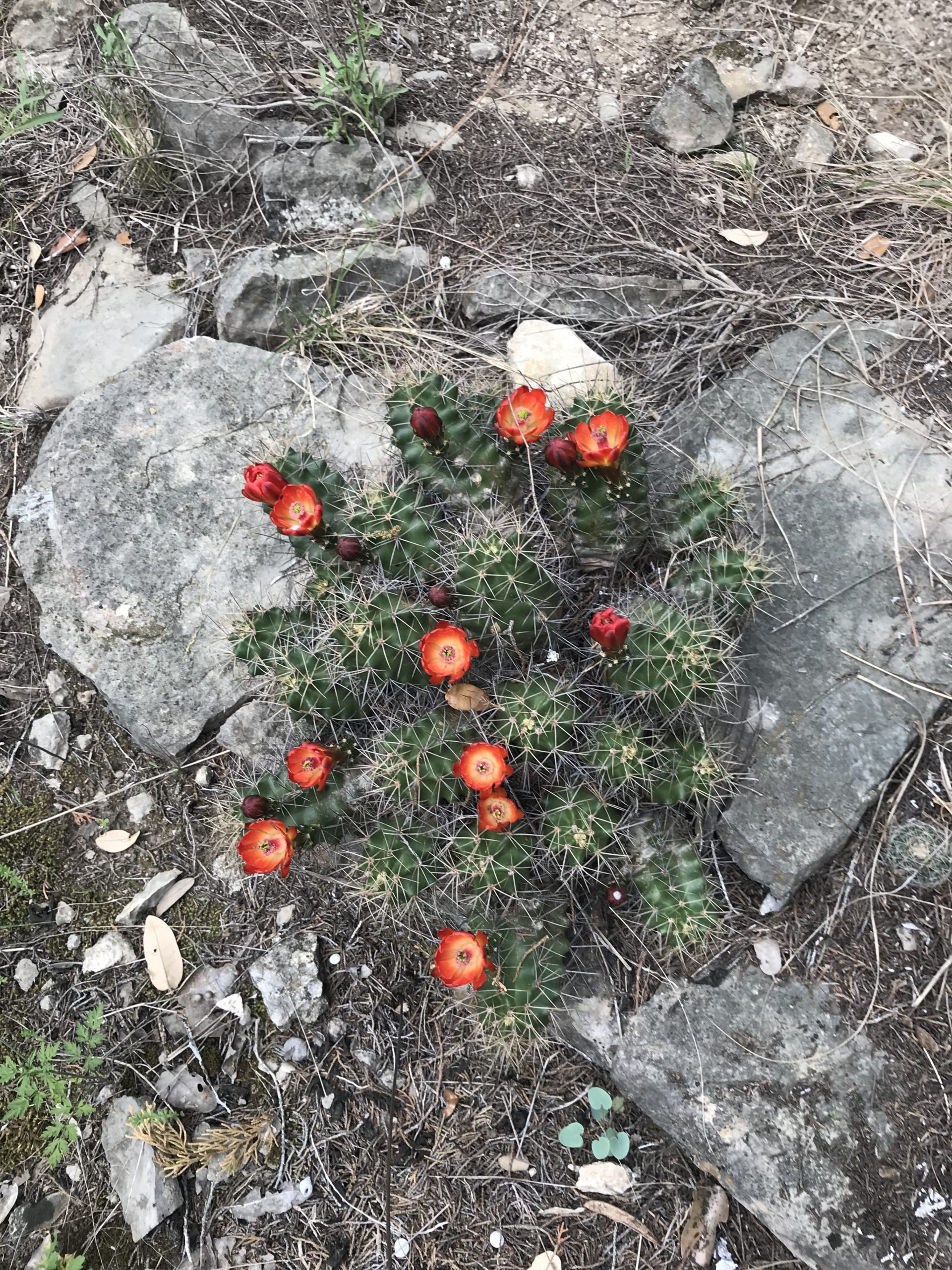
CLARET CUP CACTUS/ECHINOCEREUS TRIGLOCHIDIATUS
One of the most attractive Hedgehog cacti. Cylindrical, low growing stems sport bright red-orange flowers in early summer. Stunning!
COLOR GUARD YUCCA
Yucca filamentosa ’Color Guard’
This heat and drought tolerant Yucca grows in full to part sun. The green and yellow striped leaves add accent color to the landscape.
Size: 2’-3’ x 2’-3’
Zone: 4

GOLDEN BARREL CACTUS/ECHINOCACTUS GRUSONII
Bright yellow spines adorn this globe-shaped cactus. It will produce offsets with age, but may not flower until it is 20 years old.
GREEN GOBLET
Agave salmiana var. ferox
A selection of Agave salmiana var. ferox with wide dark green leaves. Excellent size for averge landscapes. Cold hardy to 0°F.
Size: 3’-4’ x 4’-5’
Zone: 7a
HEDGEHOG AGAVE
Agave stricta
This compact, colony-forming Agave is a great contrast in a Xeric garden. Give it room to spread! Cold hardy to 28°F.
Size: 2’ x 3’
Zone: 8
HEDGEHOG CACTUS/ECHINOCEREUS SP.
Low clumps of cylindrical stems up to 12” tall with large red or pink flowers on this Texas native in early summer. Can grow up to 3’ wide.
HESPERALOE PARVIFLORA
Hesperaloe parviflora
A compact version of the native Red Yucca with bright red blooms. It rarely forms seedpods, which means a prolonged flowering season over the summmer. Excelllent for planting in pots, as it is cold hardy to -10°F.
Size: 2’ x 2’-3’
Zone: 5
MAGUEY DE PULQUE
Agave salmiana ferox
This dark green attractive Agave puts out offsets readily. It is cold hardy to about 25°F.
Size: 6’-8’
Zone: 8b
MEXICAN GRASS TREE/ TOOTHLESS SOTOL
Dasylirion longissimum
A spectacular accent plant that grows slowly, forming a trunk to 10′ tall. The leaves are flexible and “unarmed”-meaning no spines!. Adapts to full sun to shade and requires good drainage.
Size: 10’ x 5’
Zone: 8
MOUNTAIN AGAVE
Agave montana
A medium sized glossy green Agave with large teeth at the margins. This Agave is solitary and does not form offsets. Tolerates poor soils with good drainage. Grows in sun or shade. Cold hardy to 10°F.
Size: 3’-4’ x 4’-5’
Zone: 7
NELSON’S BEARGRASS
Nolina nelsonii
This slow-growing, trunk-forming Nolina forms dense rosettes of narrow blue-green leaves with fine-toothed margins.It requires full sun to part shade. The plants are dioecious with male and female flowers on separate plants. It makes a stunning accent in the garden. Cold-hardy to 0°F.
Size: 6’ x 10’
Zone: 7
NEW MEXICO AGAVE
Agave neomexicana
Dark burgundy spines add handsome accents to each leaf. The main rosette is open and atttactively shaped. Cold hardy to -20 degrees F. Full sun to part shade.
Size: 1.5’ x 2’
Zone: 5
PALE LEAF YUCCA
Yucca pallida
This low clumping yucca can eventually form wide clumps with up to 30 heads. Tall flower stalks with pure white bell-shaped floweres are produced in the late spring.
Size: 1’-2’ x 1’-3’
Zone: 6
PARRY AGAVE
Agave parryi
This Agave thrives in partial shade with good drainage. Leaves are blue-gray with brown terminal spines. Solitary or can form colonies of offsets. Cold hardy to 0°F.
Size: 18” x 18”
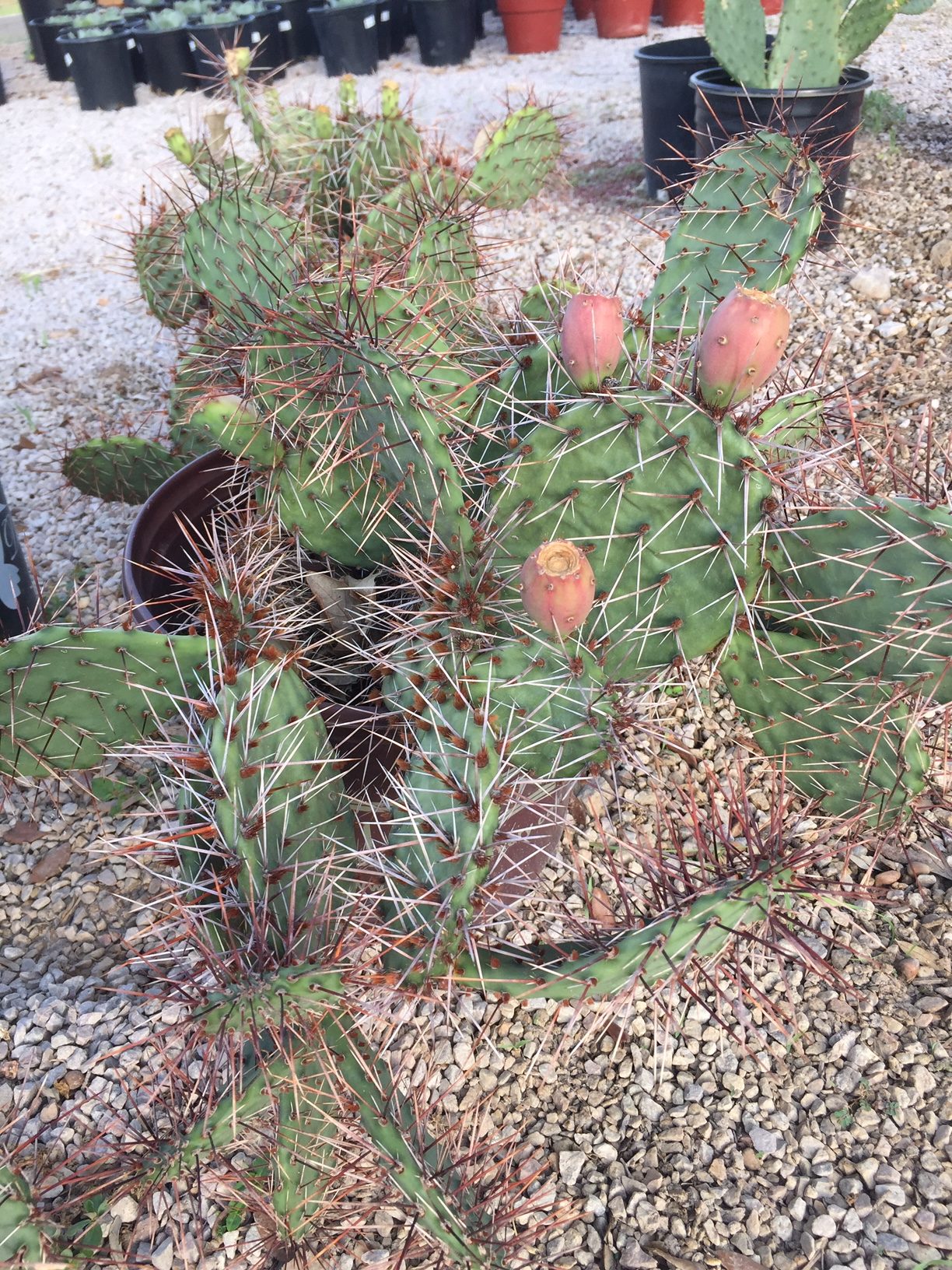
PRICKLY PEAR, BEAVER TAIL/OPUNTIA BASILARIS
Low growing prickly pear with pads shaped lik a beaver tail. Magenta blooms appear in early summer. Spineless but beware of glochids.

PRICKLY PEAR, BUNNY EARS/OPUNTIA MICRODASYS
Spineless pads are covered with white, yellow or cinnamon-colored tufts of glochids. Pads growing in pairs resemble the ears of a rabbit. Yellow flowers in early summer.
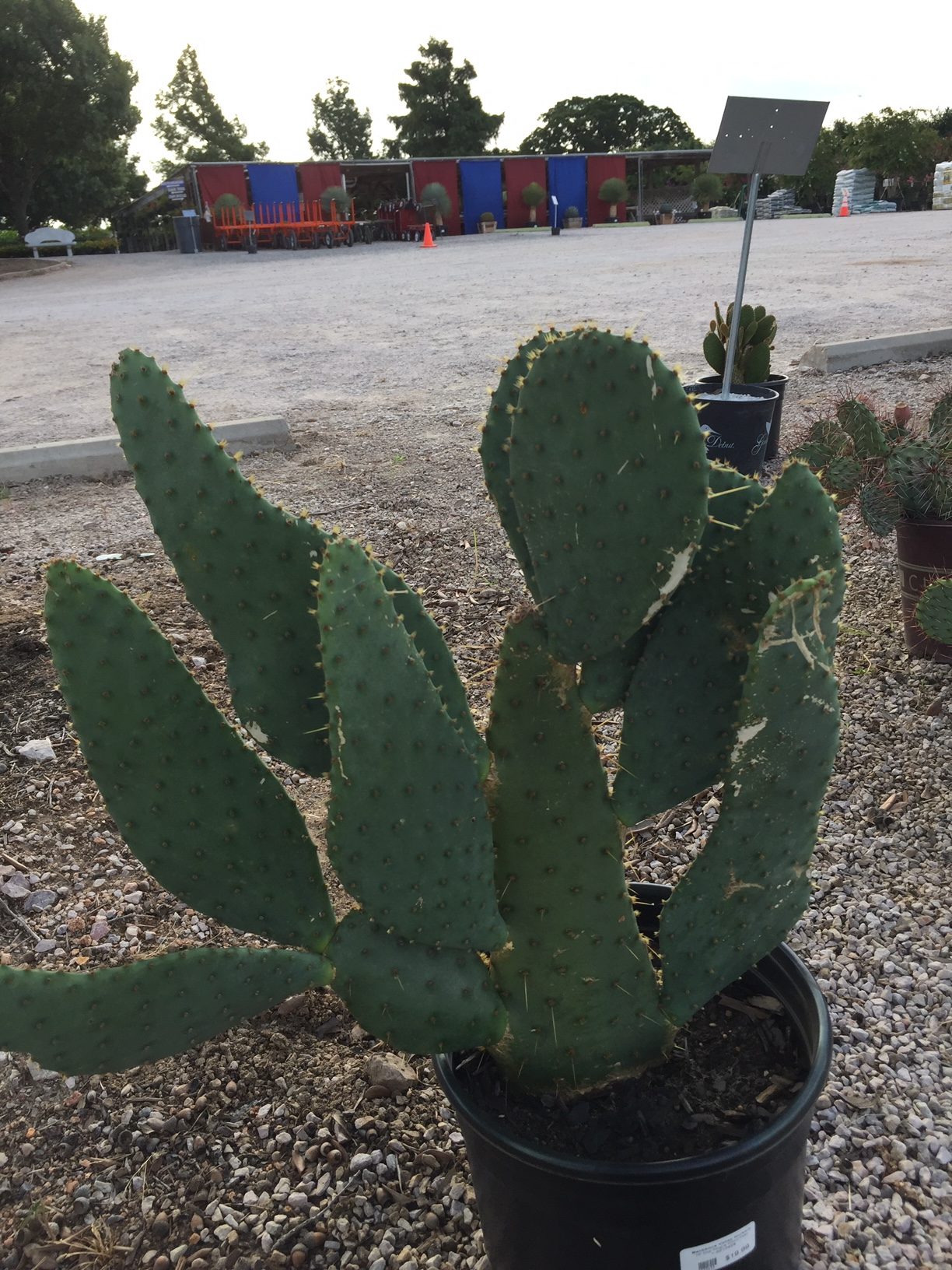
PRICKLY PEAR, COW’S TONGUE/OPUNTIA ENGELMANNII VAR. LINGUIFORMIS
Long narrow pads gove this prickly pear its name. Pads may grow to 4’ long. Large yellow flowers appear in early summer.

PRICKLY PEAR, OLD MEXICO/OPUNTIA GOMEI ‘OLD MEXICO’
This wavy-leafed prickly pear grows large, so give it room! Yellow flowers appear in the summer. It has no spines, but beware of glochids.
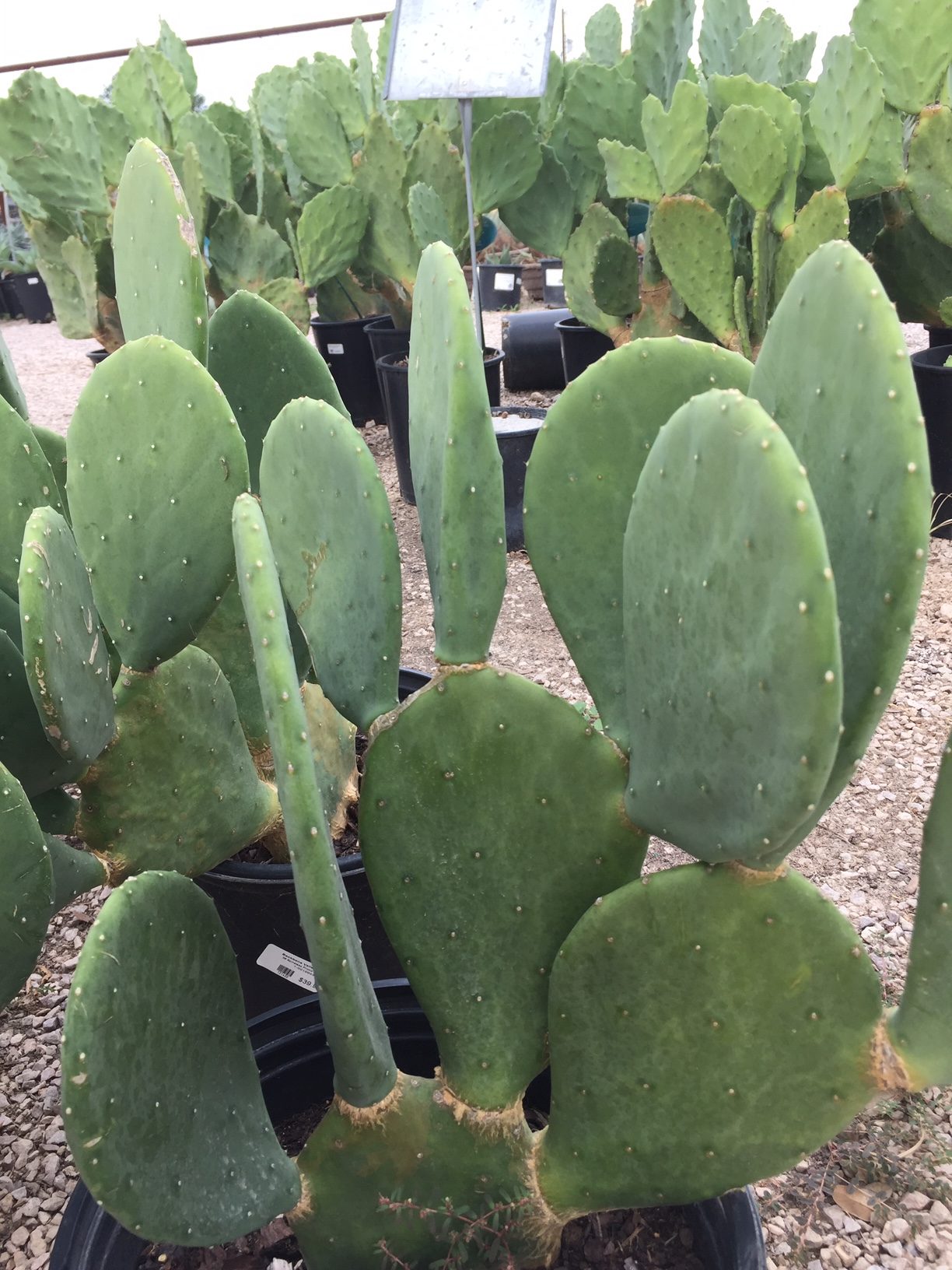
PRICKLY PEAR, SPINELESS/OPUNTIA ELLISIANA
Although spineless, beware of the tiny glochids (slivers) that are very irritating to th skin. Yellow flowers appear in early summer. Red fruit (tunas) in late summer.
QUEEN VICTORIA AGAVE
Agave victoria-reginae
This compact, slow growing Agave looks dramatic when planted en masse, used as a single specimen in a pot or as a focal point in a Xeric landscape. Cold hardy to at least-10 degrees F.Typically solitary but some individuals may have a few offsets.
Size: 1’ x 2’
Zone: 7
SACAHUISTA
Nolina texasa
This grasslike plant has a flat, weeping habit. The slender dark green leaves have a smooth margin and soft tips. They grow well in full sun or full shade, and are cold hardy to -20°F.
Size: 2’ x 3’
Zone: 5
AGAVE ‘SILVER SURFER’
A large clumping Agave with silvery-blue leaves edged with spines. A great colot addition to the landscape . Heat nad drought tolerant, slow to offset. A selection discovered in Mexico by Yucca Do Nursery.
Size: 5’ x 8’
Zone: 7b
TREE CHOLLA/CYLINDROPUNTIA IMBRICATA
A tree-like cactus with upright candelabra-like branches. Magenta flowers 3″-4″ in diameter appear in early to mid summer.
TEXAS SOTOL
Dasylirion texanum
An attractive specimen which can reach 6′ tall and wide. Sharp spines line the edges of the green leaves. Attractive bloom spike.
Size: 6’ x 6’
Zone: 5
TWISTLEAF YUCCA
Yucca rupicola
Twistleaf Yucca is native to Central Texas. This low-growing Yucca tolerates full sun to shade. It produces 5′ spikes of creamy-white flowers in the summer.
Size: 2’ x 2’-3’
Zone: 6
VARIEGATED AGAVE
Agave americana var. marginata
This large growing Agave is often used as an accent or specimen plant in the landscape. Its blue-green leaves are edged with yellow or white. Grow in full sun. cold-hardy to approx. 18°F.
Size: 4’-6’
Zone: 8
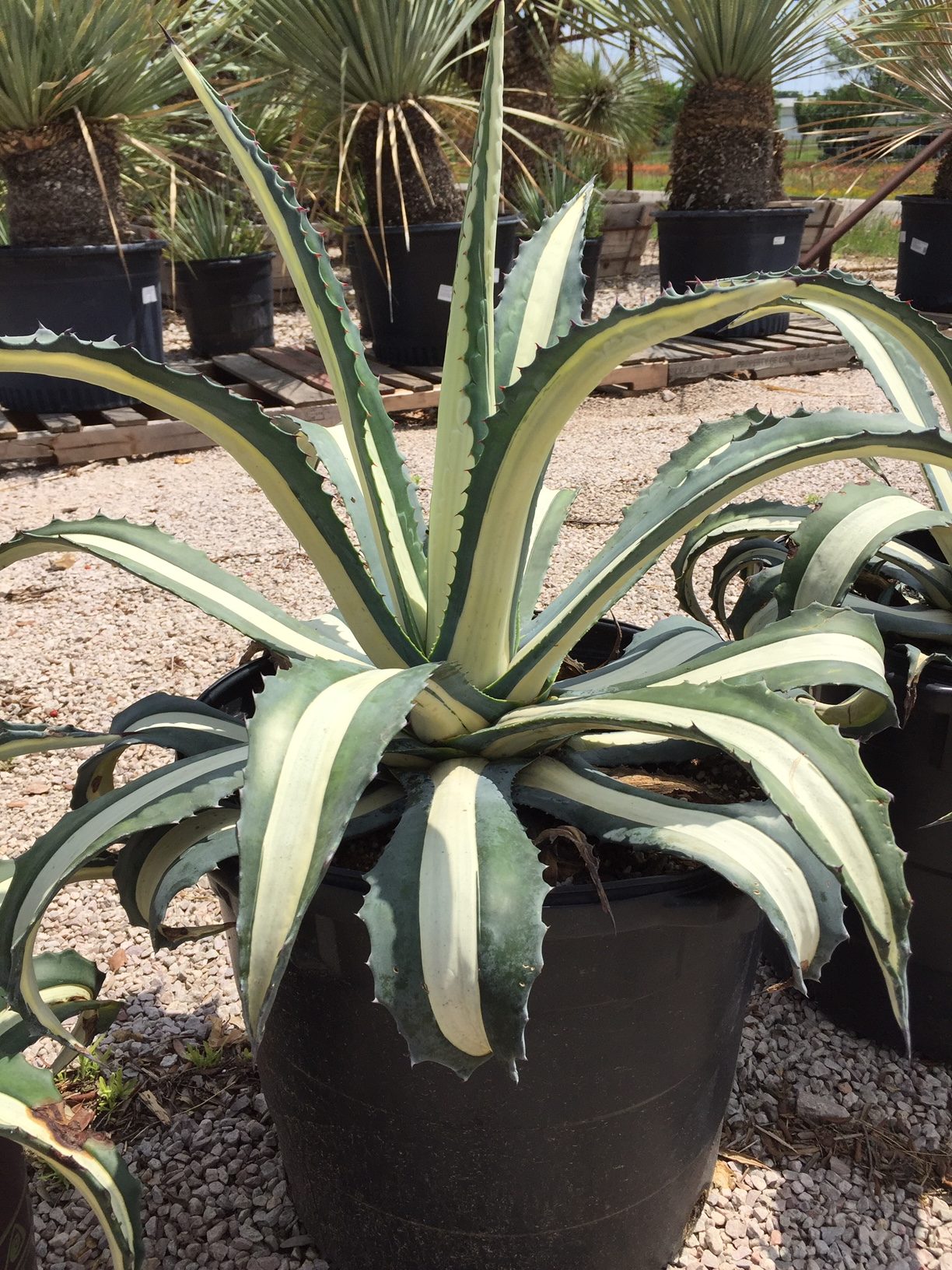
VARIEGATED AGAVE – ‘MEDIO PICTA’ AGAVE
Agave americana var. medio-picta
This striking plant is used to provide year-round interest and color. It doies well in well-drained soil or pots. Plant in full sun. Cold hardy to approx. 18°F.
Size: 3’-4’ x 4’-6’
Zone: 8
WHALE’S TONGUE AGAVE
Agave ovatifolia
A very striking Agave with abundant, deep channeled leaves. More adaptable to damp, cool climates than other blue agaves. Prevers a bit of summer shade or heavier summer watering. Cold-hardy to 0°-15°F.
Size: 3’-4’ x 4’-5’
Zone: 7a
WHEELER SOTOL
Dasylirion wheeleri
Silver-blue spined leaves form a dense rosette on this specimen Sotol which can reach 7′ tall by 7′ wide. May develop a short trunk over time.
Size: 7’ x 7’
Zone: 6
AFRICAN VIOLET
Saintpaulia ionantha
Location, location, location! These are incredibly easy to grow and will flower repeatedly in the correct light.
Light: Medium
Water: Moist
Fertility: Medium
BAMBOO PALM
Chamaedorea erumpens
A much better palm than the common ’Majesty’ palm. Does not seem as susceptible to spider mites.
Light: Low
Water: Medium
Fertility: Medium
CHINESE EVERGREEN
Aglaonema sp
Bottom leaves will ”cup” when it is ready to be watered. One of the best plants for lower light locations.
Light: Low
Water: Low
Fertility:Low
CORN PLANT
Dracaena fragrans massangeana
Classic plant for narrow locations. Keep dust cleaned off of leaves.
Light: Low
Water: Medium
Fertility: Medium
DEVIL’S IVY
Epipremnum sp.
‘Marble Queen’ has white variegation. Classic Pothos is called Golden Pothos.
Light:Low-Medium
Water: Medium
Fertility: Medium
DRAGON TREE
Dracaena marginata
An easy, fast-growing plant. Good for offices.
Light: Medium
Water: Medium
Fertility: Medium
FERN BIRDNEST
Asplemium nidus
Dilute fertilizer every month will keep it green. Likes humidity.
Light: Medium
Water: Moist
Fertility: Medium
FERN BOSTON
Nephrolepis exaltata bostoniensis
Keep moist and divide when it fills the pot and the ’runners’ start proliferating. Bright, filtered light best.
Light: Medium
Water: Moist
Fertility: Medium
FERN, MAIDENHAIR
Adiantum sp.
Do not allow to dry out. Increase humidity by placing on tray with gravel and water to evaporate.
Light: Medium
Water: Moist
Fertility: Medium
GOLDFISH VINE
Columnea gloriosa
Shiny leaves with orange, goldfish shaped blooms. African violet family. Use African violet fertilizer.
Light: Medium
Water: Moist
Fertility: Medium
KANGAROO FERN
Microsorum diversifolium
Bright, indirect light. Fertilize with half strength fertilizer in spring or use fish emulsion.
Light: Medium
Water: Moist
Fertility: Low
LIPSTICK VINE
Columnea sp.
Related to African Violets, it has beautiful red blooms. Use African violet fertilizer.
Light: Medium-high
Water: Medium
Fertility: Medium
LONGLEAF FICUS
Ficus alii
More tolerant and forgiving than Ficus benjamina. Does not like temps under 60°F. Do not put in too large a pot.
Light: Medium
Water: Medium
Fertility: Medium
MONEY TREE
Pachira aquatica
According to Feng Shui, Money Tree will bring good luck and fortune. This is an ”easy keeper”!
Light: Medium
Water: Moist
Fertility: Medium
NEANTHE BELLA PALM
Chamaedorea elegans
This plant does well in artificial light when available. Stays smaller than most palms.
Light: Low
Water: Medium
Fertility: Medium
NORFOLK ISLAND PINE
Araucaria excelsa
Bright, indirect or early morning light is best. Do not allow soil to dry completely.
Light:High
Water: Medium
Fertility: Medium
PEACE LILY
Spathyphyllum sp
Water this plant BEFORE it wilts, and it will do well! White blooms are a plus!
Light:Low-Medium
Water: Moist
Fertility: Medium
PEPEROMIA SP
Unique plants, many varieties. Check out Owl’s Eye and Watermelon Peperomia. Allow soil to dry.
Light: Medium
Water: Dry
Fertility: Medium
PONYTAIL PALM
Beaucarnea recurvata
Let soil approach dryness between watering. An easy-keeper in bright indirect light conditions.
Light: Medium
Water: Medium
Fertility: Medium
RUBBER TREE
Ficus elastica ’Decora’
An easy, fast-growing plant. Good for offices. Will tolereate a bit of sun. Allow the top of soil to dry.
Light: Medium
Water: Medium
Fertility: Medium
SNAKE PLANT
Saintpaulia ionantha
Although these tough plants ’tolerate’ low light, they will benefit from artificial light when available.
Light: Low
Water: Low
Fertility: Low
SPIDER PLANT/AIRPLANE PLANT
Chlorophytum elatum
”Baby” plants are easily rooted by pinning to the top of the soil with a bobbie pin! Require bright indirect light.
Light: High
Water: Medium
Fertility: Medium
SPLIT LEAF PHILODENDRON
Monstera deliciosa
An old-fashioned plant, easy to care for. Do not overwater. Allow soil to dry.
Light: Medium
Water: Low-Medium
Fertility: Medium
STAGHORN FERN
Platycerium bifurcatum
Keep outside under trees in summer. Can divide when they get too large to handle. Bright light inside is best.
Light: Medium
Water: Dry
Fertility: Low
WANDERING JEW
Tradescantia sp.
Trim often to keep full. Cuttings root in water. Purple varieties require more light to keep color.
Light: Medium
Water: Moist
Fertility: Medium
WEEPING FIG
Ficus benjamina
Known for dropping leaves if moved, but will grow new ones quickly. Trim tiny dead branches as needed.
Light: Medium
Water: Medium
Fertility: Medium

‘ADAGIO’ MAIDEN GRASS MISCANTHUS SINENSIS ‘ADAGIO’
A dwarf, compact Maiden Grass for small gardens. Late summer plumes emerge pink, becoming white as they age. Just one makes a stunning statement in the landscape! Even better en masse!

BAMBOO MUHLY GRASS MUHLENBERGIA DUMOSA
Light green, wispy foliage looks stunning planted en masse, as wind makes graceful waves of the foliage. Extremely heat and drought resistant.
BIG MUHLY/LINDHEIMER MUHLY
Summer-blooming Big Muhly puts out white vertical plumes on a 6’ stalk. A clumping blue-green grass, it will also give a nice color contrast in the landscape. It does well in full sun and is drought resistant once established.

BLACK FOUNTAIN GRASS PENNISETUM ALOPECUROIDES ‘MOUDRY’
Beautiful in mass plantings, this fountain grass has dark purple-black plumes in late summer that are quite striking.

‘CASSIAN’ DWARF FOUNTAIN GRASS PENNESETUM ALOPECUROIDES ‘CASSIAN’
Similar to ‘Hameln’ but a foot taller with plumes. The pink-tinted plumes appear July-Sept. With cold weather the grass turns orange-red.
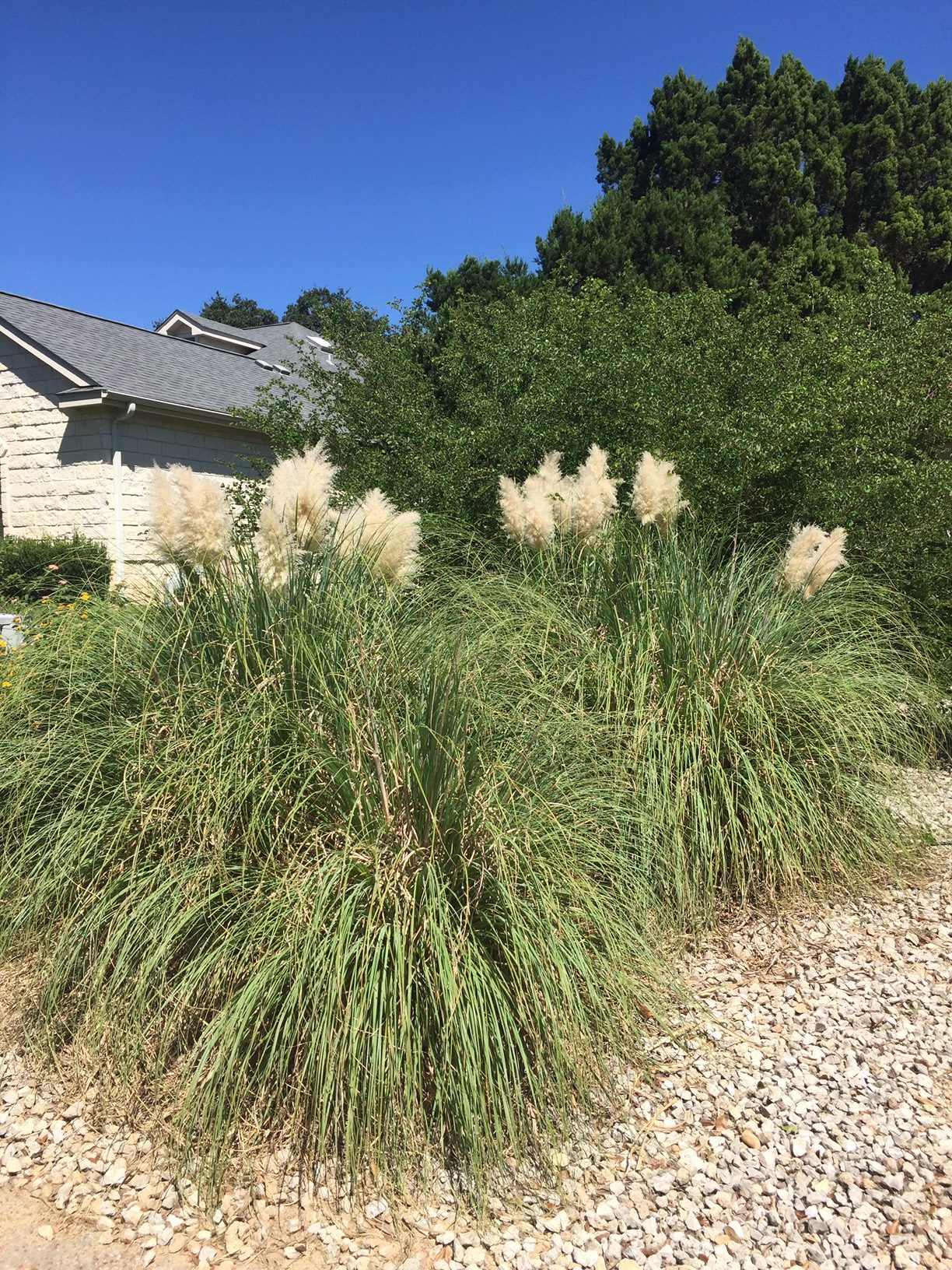
DWARF PAMPAS GRASS ‘JET STREAM’ CORTADERIA SELLOANA ‘PUMILA’
Smaller that regular Pampas Grass and suited for smaller gardens. All blooms are female and very showy from Aug. thru winter.
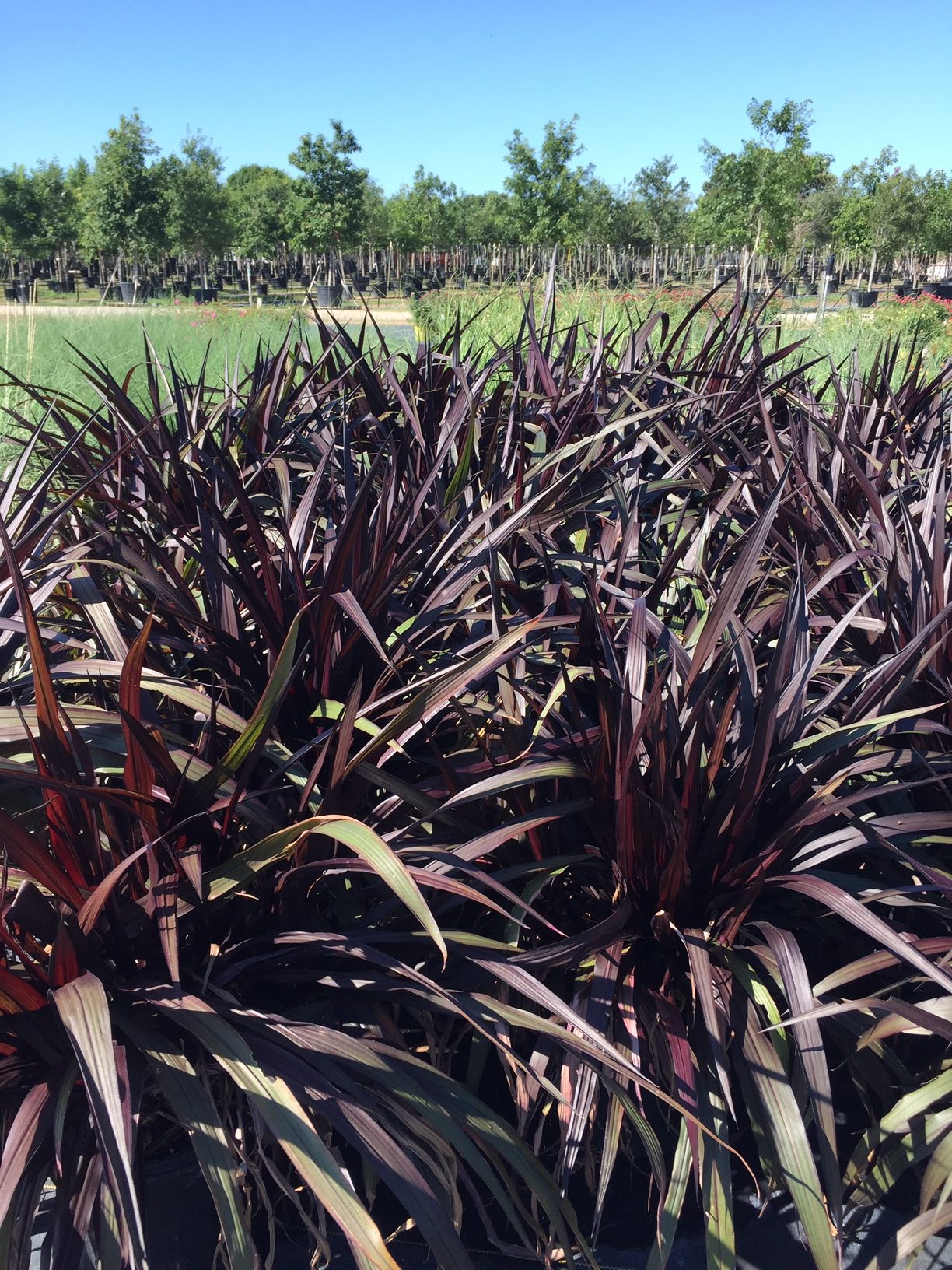
‘FIRST KNIGHT’ NAPIER GRASS PENNISETUM HYBRID
With wide, dark purple leaves, this dramatic looking grass may be a good substitute for the less winter-hardy Purple Fountain Grass. Although it does not bloom in Central Texas, it comes back strong from the roots in the spring.
GULF COAST MUHLY
Striking purplish pink plumes adorn this grass in the fall. It will grow in sun to part shade and is drought-resistant once established.
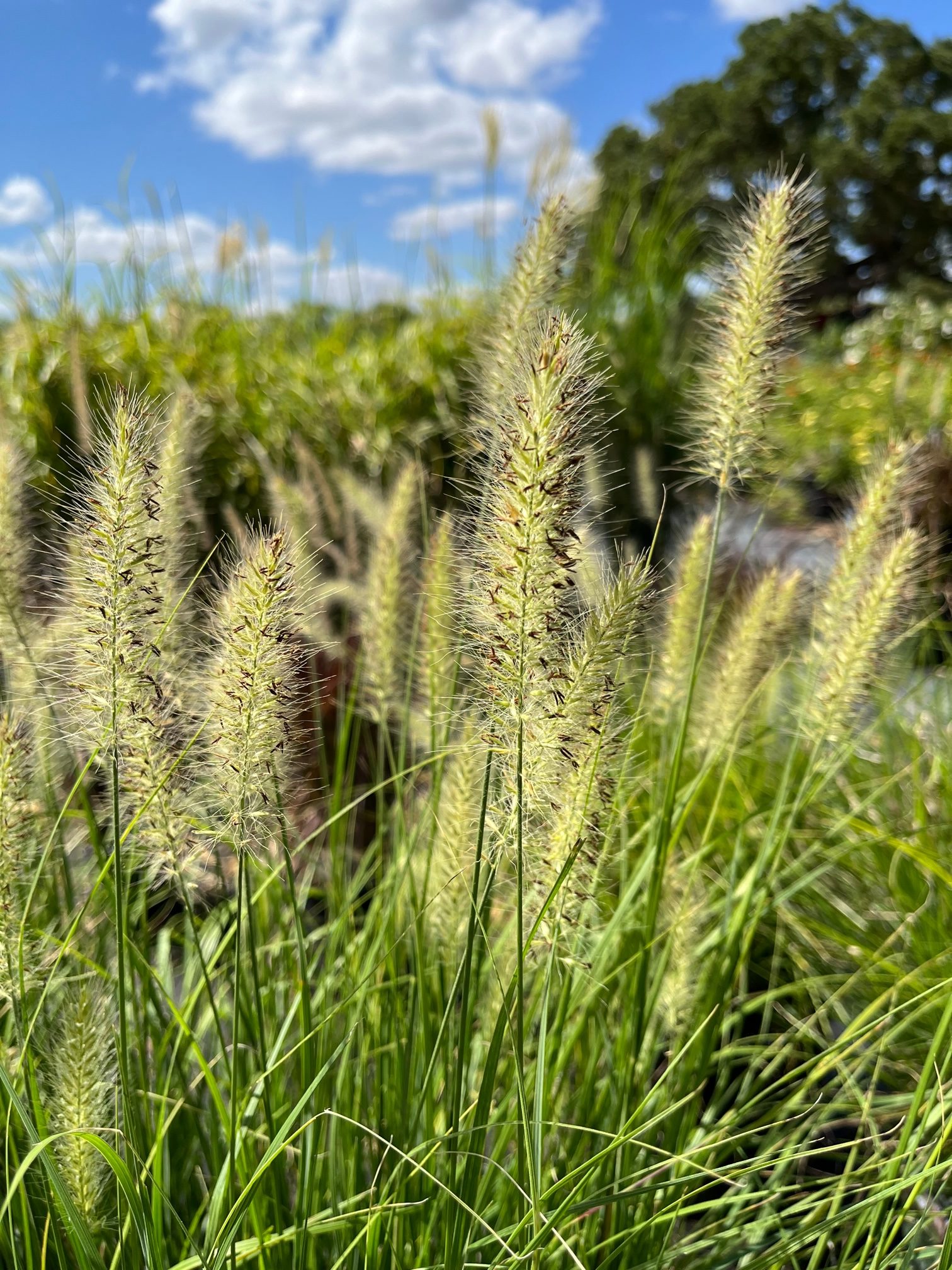
LITTLE BUNNY’ FOUNTAIN GRASS PENNISETUM ALOPECUROIDES ‘LITTLE BUNNY’
A great substitute for Mexican Feather Grass, this low growinga grass has cream-colored plumes above dark green foliage.

MEXICAN FEATHERGRASS NASELLA TENUISSIMA
Bright green fine-textured leaves, great in mass planting. Golden summer plumes. Requires well-drained soil and will tolerate some shade.

‘MORNING LIGHT’ MAIDEN GRASS MISCANTHUS SINENSIS ‘MORNING LIGHT’
Growing to 4′, and 6′ with blooms, this grass has graceful slender foliage with contrasting white variegation on its leaf margins.
Zn 5
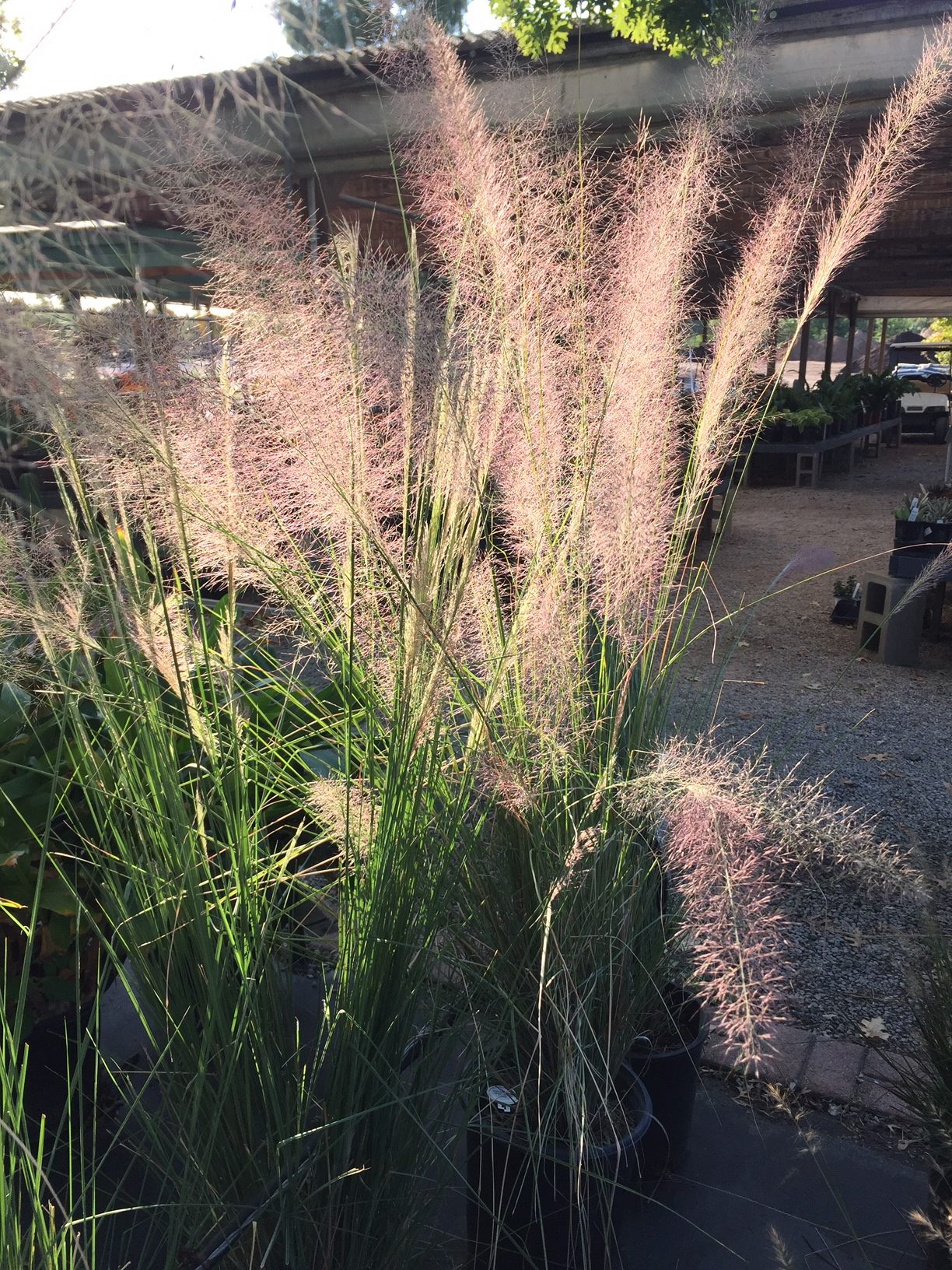
PINK FLAMINGO MUHLY MUHLENBERGIA X ‘PINK FLAMINGO’
This hybrid progeny of Pink Muhly and Big Muhly combines the best of both parents. A narrow, upright form with blue-green leaves, blooming in fall with pink plumes in dramatic arches. Ideal for narrrow spaces.

PURPLE FOUNTAIN GRASS PENNISETUM SETACEUM ‘RUBRUM’
Purple leaves with reddish-purple plumes that emerge in June. Great contrast in landscape. Tolerates poor soils but needs regular irrigation.

RUBY CRYSTAL/SAVANNAH RUBY GRASS RYCHELYTRUM ROSEUM
Bluish-green leaves sport airy rose-pink flowers May-September. Plant in protected location and mulch roots in winter.
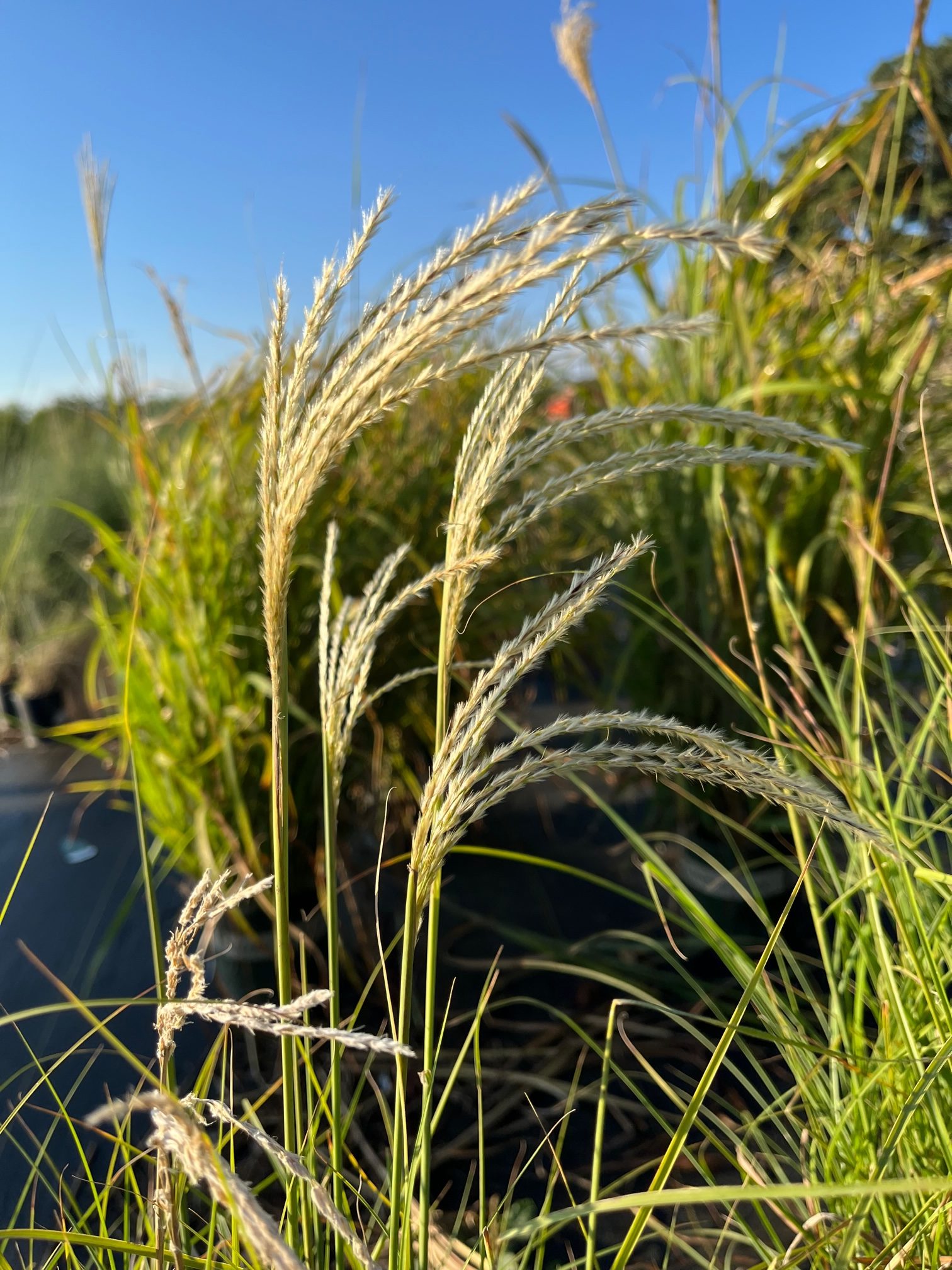
‘YAKU JIMA’ MAIDEN GRASS MISCANTHUS SINENSIS ‘YAKU JIMA’
This dwarf Maiden Grass is fine-textured with reddish plumes that emerge in September and turn reddish-brown in the fall. A compact grass with winter character.
DAISY, DAHLBERG
Exposure: sun Size: 1’ x 1’ Re-seeding Annual In mild winters it may return as a perennial. Fragrant foliage, blooms all summer.
HELENIUM, SNEEZEWEED
Exposure: sun Size: 1’ x 1’ Re-seeding Annual Low border plant with bright yellow blooms all summer.
HYPERICUM, SUNBURST
Exposure: part sun/shade Size: 3\’ x 3\’ Evergreen Perennial Large yellow flowers in late spring to early summer. Requires well drained soil. Drought resistant once established.
PERIWINKLE (Annual Vinca)
Exposure: sun Size: 12” x 12” Annual Plant in May for summer blooms. Requires well-drained soil.
SHRIMP PLANT, RED
Exposure: sun/part sun/shade Size: 3\’-5\’ Deciduous Herbaceous perennial. Deer and rabbit resistant.
SNAPDRAGONS
Exposure: sun/part sun Size: height varies by variety Annual Plant in fall for fall and spring blooms.
ACANTHUS, FLAME
Exposure: Sun
Size: 3’-5’ x 3’-4’
Deciduous
Late to leaf out. Blooms all summer. Adapts to poor soils if well drained. May be invasive.

‘HAMELN’ DWARF FOUNTAIN GRASS PENNISETUM ALOPECUROIDES ‘HAMELN’
White foxtail-like summer plumes are 3”-4” long on this Dwarf Fountain Grass.
Grows to 1 1/2’, and 2/ with plumes.
Prefers fertile soils and cold winters with regular irrigation.
BOTTLEBRUSH, WOODLANDER’S HARDY
Hardy to Zone 7.
Exposure: Sun
Height x Width: 4’-5’ x 4’-5’
Evergreen/Decidious: E
ASPIDISTRA
Loves ”dry” shade.
Exposure: Shade Height x Width: 3’ x 3’
Evergreen/Decidious: E
ARTEMESIA, POWIS CASTLE
Prune before new growth starts in spring.
Exposure: Sun/Part sun
Height x Width: 2’ x 4’-6’
Evergreen/Decidious: Semi
ANGEL’S TRUMPET, BRUGMANSIA
Protect in winter Exposure: Sun/Part sun
Height x Width: 6’ x 5’
Evergreen/Decidious: Tropical
ANGEL’S TRUMPET, DATURA
Re-seeding annual
Exposure: Sun
Height x Width: 4’ x 4’
Evergreen/Decidious: Annual
AJUGA, VARIOUS
Protect when young, not reliable.
Exposure: Shade Height x Width: 6” x 1’
Evergreen/Decidious: Semi
AGAVE, VARIOUS
Exposure: Sun/Part sun
Height x Width: check variety
Evergreen/Decidious: E
Bucks may damage with antlers
SOFT LEAF YUCCA
Yucca pendula (recurvifolia) Named for its graceful, bending blue-green leaves, Soft Leaf Yucca is adaptable to sun or shade. Tall white blooms tower above the plant in the summer.
Size: 6’ x 6’
Zone: 7
VIBURNUM, SANDANKWA
Viburnum suspensum
Grown as a hedge or small specimen, its dark green leaves make a nice backdrop for variegated foliage. Plant in well-drained fertile soil. Requires regular watering. Somewhat deer resistant.
Height: 6’-12’
Spread: 6’-8’
Light: Sun/Part Shade
MAGNOLIA, ‘LITTLE GEM’
M. grandiflora ’Little Gem’
A dwarf Magnolia with smaller foliage and large white blooms that begin in late spring and repeat through summer and fall.
Height: 20’-25’
Spread: 10’-15’
Light: Sun Evergreen
GUAVA, PINEAPPLE
Acca sellowiana Grown as a hedge or small specimen tree. The white and red flowers produce an edible fruit. Does best with good soil and regular irrigation. Deer resistant.
Height: 10’-15’
Spread: 10’-15’
Light: Sun Evergreen
DWARF PALMETTO PALM
Sabal minor
Usually trunkless, this smaller Sabal palm often grows as an understory in Central Texas, and will tolerate poor drainage. Needs water during establishment but can be drought resistant once established.
Size: 5′-8′ x 4′-8′
PINDO PALM
Butia capitata
Also called Jelly Palm for its orange-yellow fruits that are used to make jelly, Pindo Palm is slow growing with a stocky trunk. Foliage is blue-green.
Size: 15′ x 15′
Zone 8b

